K EENELAND
celebrating bluegrass traditions


celebrating bluegrass traditions














































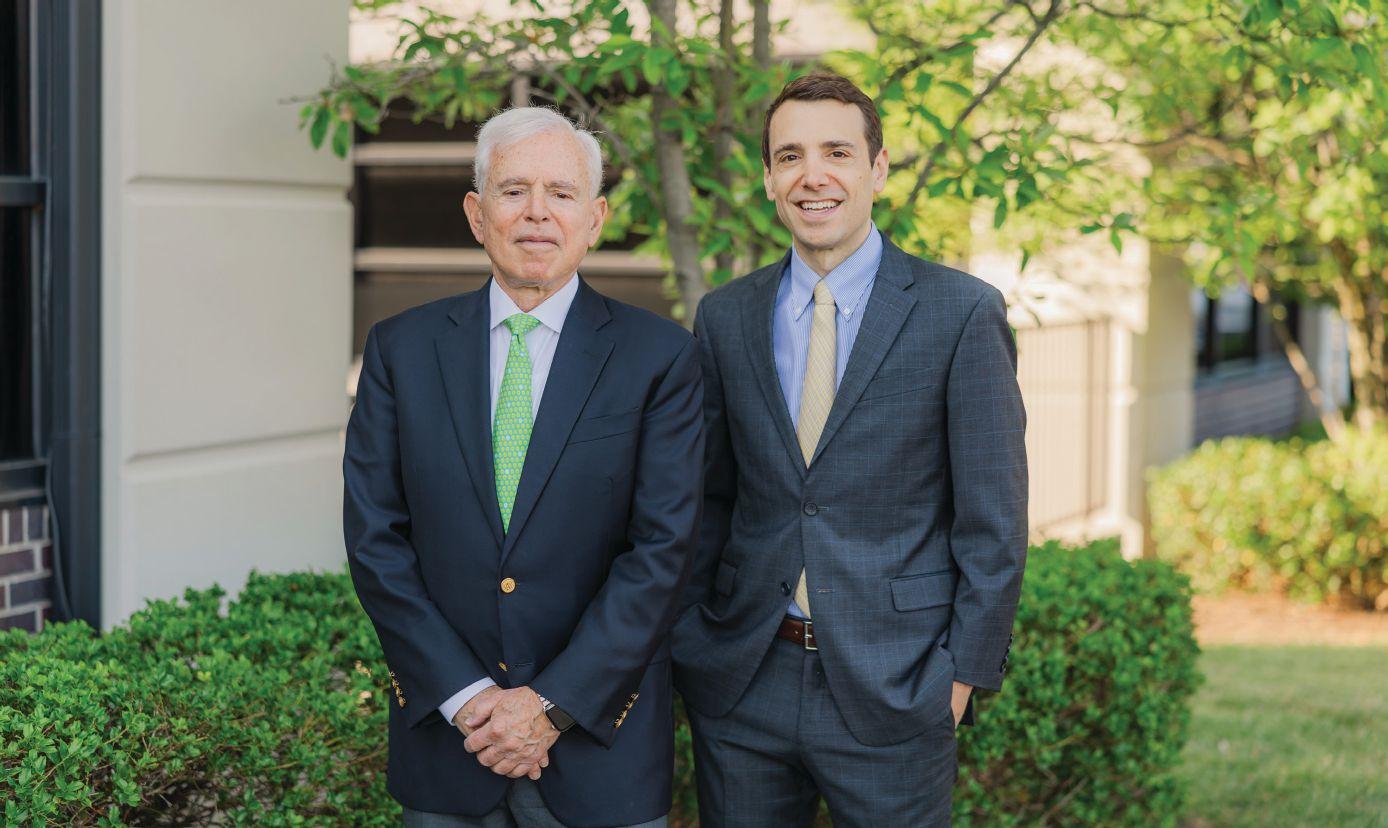





80 THE FRENCH CONNECTION by Liane Crossley Jockeys born in France consistently make their presence felt at Keeneland.
96 BLADE RUNNERS by Cynthia Grisolia Keeneland’s turf course has witnessed incomparable racing in the 40 years since it opened.
116 THEVIEW FROM VERSAILLES
by Robin Roenker
TheVersailles Downtown Market and Entertainment District is among the new initiatives that build on the city’s longtime charms.
132 INTHE FRAME by Maryjean Wall
The Lexington Camera Club continues its founders’ quest to push the bounds of photography.
148 HOT TABLE by Rob Bolson
Carson’s has taken its winning formula — good, well-priced food and lots of it — to a second location in Lexington.
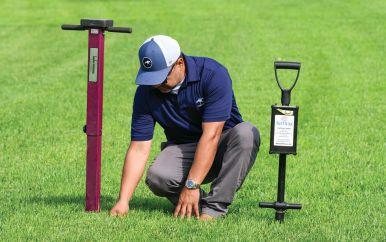


by Lenny Shulman
Glenn “Bo” Bromagen keeps his family’s passion for Thoroughbred breeding and racing alive as a bloodstock agent and owner.


ON OUR COVER
4Keeneland
Oil on panel, 36” x 36” by Joe Bonomo
Joe Bonomo is an artistic spirit. Making his way to the Bluegrass from the Rocky Mountains, Bonomo has found his artistic inspiration in horse racing. Bonomo now claims Lexington and Keeneland as his home.
Racing’s color and the movement create an energy that Bonomo translates into his paintings. At the easel, Bonomo looks to interpret what he sees and not simply make a visual copy of what’s going on. His vision and interpretation offer a new perspective of the sport of horse racing.
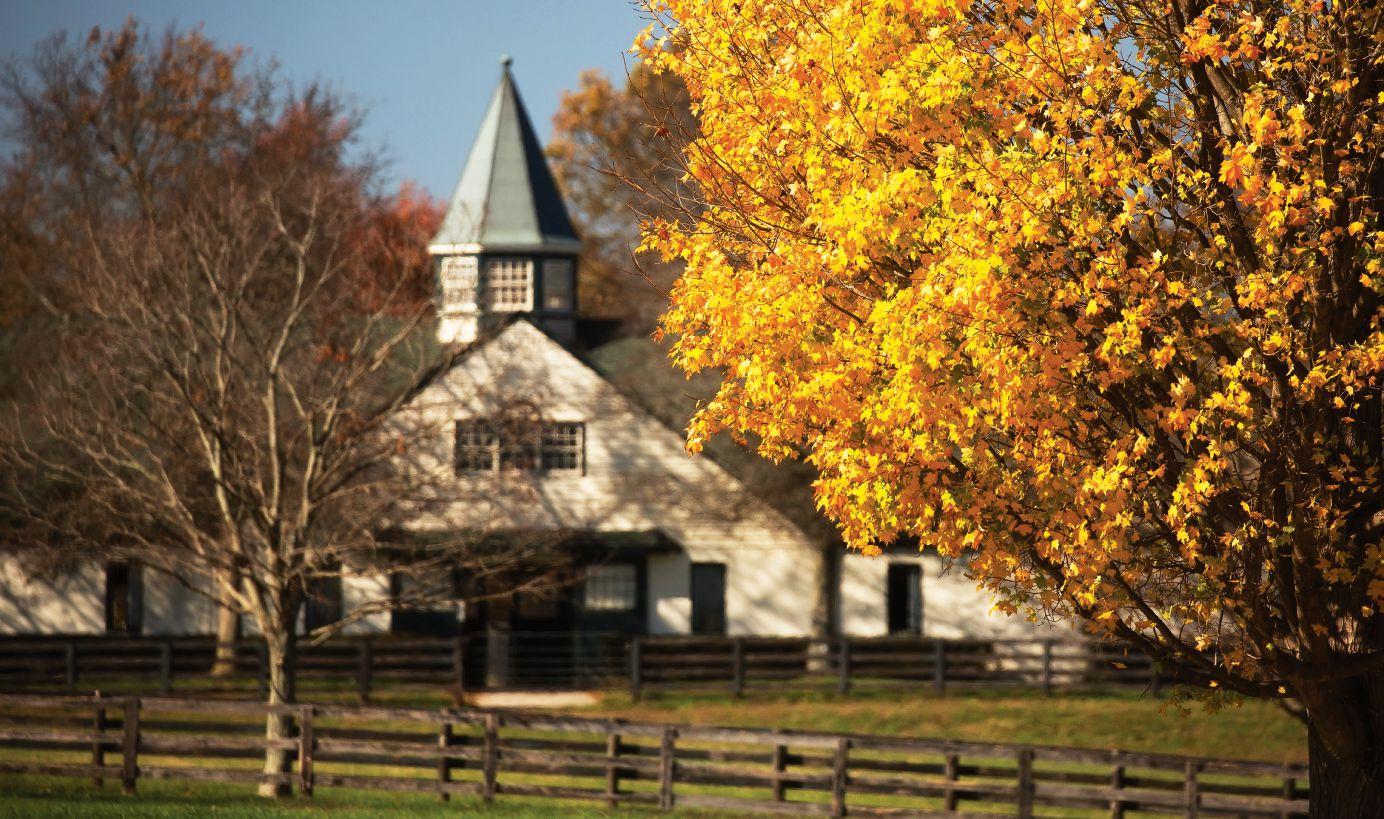

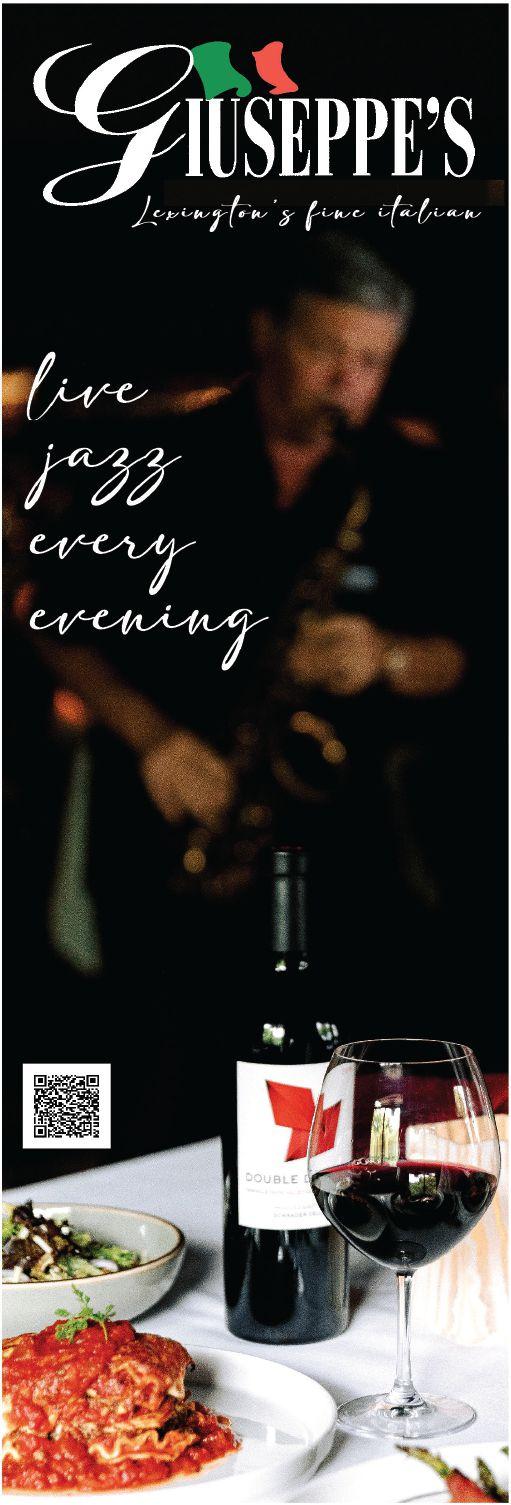

SPOTLIGHT
Chorale.
Rich Copley 162 MAKING A DIFFERENCE
HOPE Spay Neuter Clinic offers compassionate care in the never-ending battle to stem overpopulation among cats and dogs. by
William Bowden
$650,000 Darley Alcibiades (G1)
2YO fllies, 1 1/16 miles | $150,000 KTDF Contribution
$400,000 Jessamine (G2) Presented by Keeneland Sales
3
4
2YO fllies, 1 1/16 miles (turf) | $100,000 KTDF Contribution
$400,000 Stoll Keenon Ogden Phoenix (G2)
3YOs & up, 6 furlongs | $100,000 KTDF Contribution
$1.25 Million Coolmore Turf Mile (G1)
3YOs & up, 1 mile (turf) | $250,000 KTDF Contribution
$650,000 Claiborne Breeders’ Futurity (G1)
2YOs, 1 1/16 miles | $150,000 KTDF Contribution
$800,000 First Lady (G1)
3YOs & up, F&M, 1 mile (turf) | $150,000 KTDF Contribution
$400,000 Thoroughbred Club of America (G2)
3YOs & up, F&M, 6 furlongs | $100,000 KTDF Contribution
$400,000 Woodford (G2) Presented by FanDuel
3YOs & up, 5 1/2 furlongs (turf) | $100,000 KTDF Contribution
$650,000 Juddmonte Spinster (G1)
3YOs & up, F&M, 1 1/8 miles | $150,000 KTDF Contribution
5
$400,000 Castle & Key Bourbon (G2)
2YOs, 1 1/16 miles (turf) | $100,000 KTDF Contribution
$300,000 Indian Summer (L)
Presented by Keeneland Select
2YOs, 5 1/2 furlongs (turf) | $100,000 KTDF Contribution
$400,000 Sycamore (G2)
10
3YOs & up, 1 1/2 miles (turf) | $100,000 KTDF Contribution
Oct 19
$800,000 Queen Elizabeth II Challenge Cup (G1) Presented by Dixiana 3YO fllies, 1 1/8 miles (turf) | $150,000 KTDF Contribution By invitation only
$400,000 Franklin (G2) 3YOs & up, F&M, 5 1/2 furlongs (turf) | $100,000 KTDF Contribution
$400,000 Lexus Raven Run (G2) 3YO fllies, 7 furlongs | $100,000 KTDF Contribution
$350,000 Perryville (G3) 3YOs, 7 furlongs | $100,000 KTDF Contribution
$400,000 Rood & Riddle Dowager (G3) 3YOs & up, F&M, 1 ½ miles (turf) | $100,000 KTDF Contribution
$400,000 Bank of America Valley View (G2) 3YO fllies, 1 mile (turf) | $100,000 KTDF Contribution
$250,000 Dean Dorton Myrtlewood 2YO fllies, 6 furlongs | $75,000 KTDF Contribution
$350,000 Hagyard Fayette (G3) 3YOs & up, 1 1/8 miles | $100,000 KTDF Contribution
$600,000 Bryan Station (G3) 3YOs, 1 mile (turf) | $100,000 KTDF Contribution
$250,000 Bowman Mill 2YOs, 6 furlongs | $75,000 KTDF Contribution

PURSES POWERED BY THE KENTUCKY THOROUGHBRED DEVELOPMENT FUND
* KTDF (Kentucky Thoroughbred Development Fund) contributions are subject to approval of the Kentucky Horse Racing and Gaming Corporation.

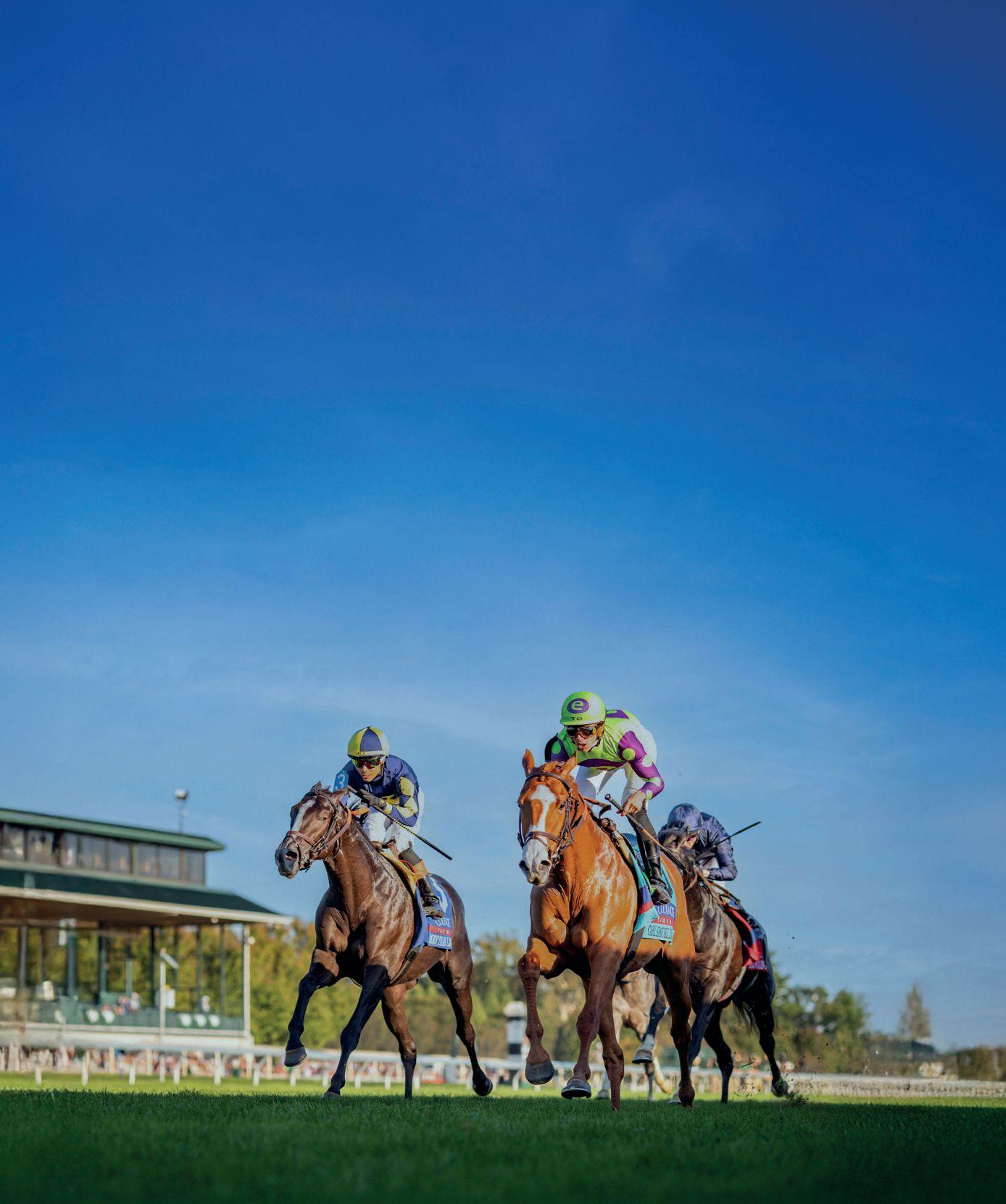

The offcial magazine of Keeneland Association, Inc. published by Blood-Horse LLC 821 Corporate Dr., Lexington, KY 40503 (859) 278-2361/FAX (859) 276-4450 KeenelandMagazine.com BloodHorse.com
Editor: Jacqueline Duke
Artists: Catherine Nichols (Art Director), PhilipTruman
Copy Editor: Judy Marchman
Visuals Director: Anne M. Eberhardt
Creative Services: Jennifer Singleton (Director), Forrest Begley
Account Executives: Amanda Ramey Masters, Katherine White
Sales Support: Catherine Johnston
CORPORATE OPERATIONS
Circulation Accounting Manager: Lauren Glover
General Manager: Scott Carling
PUBLISHED BY Blood-Horse LLC
BOARD OF DIRECTORS
James L. Gagliano, Carl Hamilton, Ian D. Highet, Stuart S. Janney III, Brant Laue, Dan Metzger, David O’Farrell
celebrating bluegrass traditions To
KEENELAND ASSOCIATION, INC.
KEENELAND INC.
4201Versailles Road P.O. Box 1690 Lexington, Kentucky, U.S.A. 40588-1690
Tel: (859) 254-3412 (800) 456-3412 Keeneland.com © 2025 Keeneland Association, Inc.
U.S.A. 40588-1690 Tel: 254-3412 456-3412 © 2025 Keeneland Inc.



Each fall, as the red maples lining Keeneland’s Gate 2 entrance off Versailles Road onto Old Clubhouse Lane show off their splendor and the morning air begins to turn crisp, I’m reminded of the glorious rhythm of this place. No day here is the same, yet each day is consistent in the drumming beat of hooves over the track, the quiet effciency of grooms going about their work, and the deep reverence felt by all those who come on our grounds. Not all moments of the day might seem noteworthy, but as we are united in purpose, every moment here carries its weight — shaped by history, driven by passion, and shared by a community that cares deeply about this place, the horse, the sport of racing, and each other.
The rhythm of life brings peaks and valleys, and every moment matters. We delight in the joyful moments: strong embraces outside the sales ring after an exciting sale, the pat on a yearling’s neck as she enters the show ring, a quiet nod between trainer and jockey before a winning race, the pounding and pumping of fsts by friends who celebrate a winning trifecta. But there are those tough moments that can bring you to your knees: a critical illness diagnosis, a disappointing fnish from your star flly, a seller leading his colt back
to the barn after failing to get a high enough bid to sell him (though little does the would-be seller know that that moment will ultimately lead to his owning a grade 1 winner). The valleys can cause you to question whether you’ll see a peak again. As Brazilian author Paulo Coelho said, “The secret of life, though, is to fall seven times and to get up eight times.”
FALL 2025

SHANNON ARVIN President and CEO
We can’t know what the next moments will bring, but we can live every day with purpose, bring intentional conviction to our actions, and decide where we devote our energy. At Keeneland, we are investing in building a robust future for Thoroughbred racing, so family farms will thrive for generations to come. We are traveling the globe to recruit buyers for our auctions because a healthy international ecosystem for our sport is critical for its bright future. We are meticulously building and renovating facilities that will last for generations, combining the steady hum of our traditions with the pulse of possibility and the highest levels of hospitality. We are stewards of this community, and we work for the moments that allow us to make this community even better than we found it. That is a privilege for which we are grateful.
Cheers to blue skies ahead. KM
STALLION COMPLEX TOURS | SHUTTLE TOURS
Join us for our new Special Events, ranging from Mahjong to Floral Workshops! March - November Available through visithorsecountry.com Book your Experience today!






ROB BOLSON
(Hot Table) is a freelance writer residing in Lexington, who regularly writes about food and culture. He has spent the past three decades writing about people, places, and products. Follow him on Instagram at @robbiebolson.
WILLIAM BOWDEN
(A Hopeful Outlook) most recently worked as publications editor atTransylvania University. He was formerly a writer and editor at the Somerset (Kentucky) Commonwealth Journal, the Lexington Herald Leader, and the NationalTour Association.
RICH COPLEY
(LeadingWith Joy) spent 20 years as an arts and entertainment journalist for the Lexington Herald Leader. He is now a multimedia producer for the Presbyterian Church (U.S.A.) and a freelance writer and photographer based in Lexington.
LIANE CROSSLEY
(The French Connection) has spent her career in Thoroughbred racing-related jobs in barns, press boxes, and offces. A seasonal member of Keeneland’s media team, she has had her work appear in BloodHorse, Daily Racing Form,Thoroughbred Daily News,ThoroughbredTimes, and other publications.
CYNTHIA GRISOLIA
(Blade Runners) is a freelance editor and journalist living inVersailles, Kentucky. Her articles have appeared in Keeneland, BloodHorse, Kentucky Monthly, Equestrian Quarterly, and others.
AMY OWENS
(Keeneland News/Connections) is Keeneland Communications Associate.
(TheView FromVersailles) is a Lexington-based freelance writer who reports on health care, higher education, travel, and all things uniquely Kentucky. In addition to Keeneland, her writing has appeared in AARP, Southern Living, USATODAY, Atlanta magazine, and more.
LENNY SHULMAN
(Family Legacy) is a senior correspondent for BloodHorse and the author of “Head to Head: Conversations with a Generation of Horse Racing Legends,” “Justify: 111 Days to Triple Crown Glory,” and “Ride of Their Lives:TheTriumphs andTurmoil ofToday’sTop Jockeys.”
(In the Frame) won multiple Eclipse Awards during her 35 years asTurf writer for the Lexington Herald Leader. In addition to “Madam Belle: Sex, Money, and Infuence in a Southern Brothel,” she also is the author of “How Kentucky Became Southern: ATale of Outlaws, HorseThieves, Gamblers, and Breeders.” She holds a doctorate from the University of Kentucky.

































































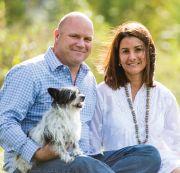

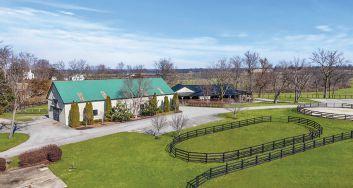



















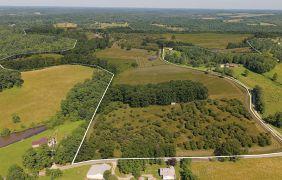


























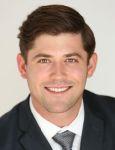

























Keeneland will present the most lucrative stakes schedule for a racing season in track history when it awards $10.85 million for 22 stakes scheduled for the 17-day fall meet held Oct. 3-25. Te signature Fall Stars Weekend kicks of the meet over the opening three days with 11 stakes led by the $1.25 million Coolmore Turf Mile (G1) and featuring horses headed to the Breeders’ Cup World Championships at Del Mar. Te fall meet also marks the 40th anniversary of the turf course at Keeneland, which in October 1985 became the frst track in Kentucky to ofer turf racing.

Te Kentucky Toroughbred Development Fund is contributing $2.55 million to the fall meet stakes purses, pending approval from the Kentucky Horse Racing and Gaming Corporation.
“Competition from Toroughbred racing’s leading horses and top jockeys, trainers, and owners will put the focus of fans, handicappers, and the industry on Keeneland’s fall meet,” Keeneland Vice President of Racing Gatewood Bell said. “We are excited to be able to add $100,000 to the purse of the Sycamore (G2), which was upgraded for 2025, and to increase the value of another 18 stakes by $50,000 each. Our grade 1 races now are worth $650,000 to $1.25 million, while the purses of all grade 2 races are $400,000, and all grade 3 races are worth $350,000.”
Fall Stars Weekend will ofer $6.3 million in purses for 11 stakes. Eight of those are part of the “Breeders’ Cup Challenge Series: Win and You’re In,” which will award the winners automatic starting positions and free entry into the 42nd Breeders’ Cup on Oct. 31 and Nov. 1.
Tree Win and You’re In events will be
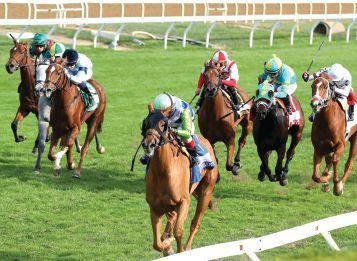
run Friday, Oct. 3: the $650,000 Darley Alcibiades (G1) (for the NetJets Juvenile Fillies), the $400,000 Stoll Keenon Ogden Phoenix (G2) (Cygames Sprint), and the $400,000 Jessamine (G2) Presented by Keeneland Sales (John Deere Juvenile Fillies Turf).
Saturday, Oct. 4, features fve stakes, including these Win and You’re In races: the $1.25 million Coolmore Turf Mile (G1) (FanDuel Mile), the $650,000 Claiborne Breeders’ Futurity (G1) (FanDuel Juvenile), and the $400,000 Toroughbred Club of America (G2) (PNC Bank Filly and Mare Sprint). Also being run are the $800,000
First Lady (G1) and the $400,000 Woodford (G2) Presented by FanDuel.
Sunday of Fall Stars Weekend has two Win and You’re In races: the $650,000 Juddmonte Spinster (G1) (Distaf) and the $400,000 Castle & Key Bourbon (G2) (Juvenile Turf). Te day’s third stakes is the $300,000 Indian Summer Presented by Keeneland Select.
Te other grade 1 race during the season is the $800,000 Queen Elizabeth II Challenge Cup Presented by Dixiana, an internationally recognized invitational for 3-year-old fllies racing 1⅛ miles on the turf. Inaugurated in 1984, the QE II was among the races that Keeneland moved to the new turf course the following year.
In addition to world-class Toroughbred racing that will appeal to horsemen, handicappers, and fans, the fall meet will include such special events as College Scholarship Day Presented by Lane’s End, Make-AWish Day, and Sunrise Trackside. Te Hill will be open for tailgating on Fridays through Sundays weather permitting.
For more information, visit Keeneland.com. For more about the 40th anniversary of the Keeneland turf course, see page 96.
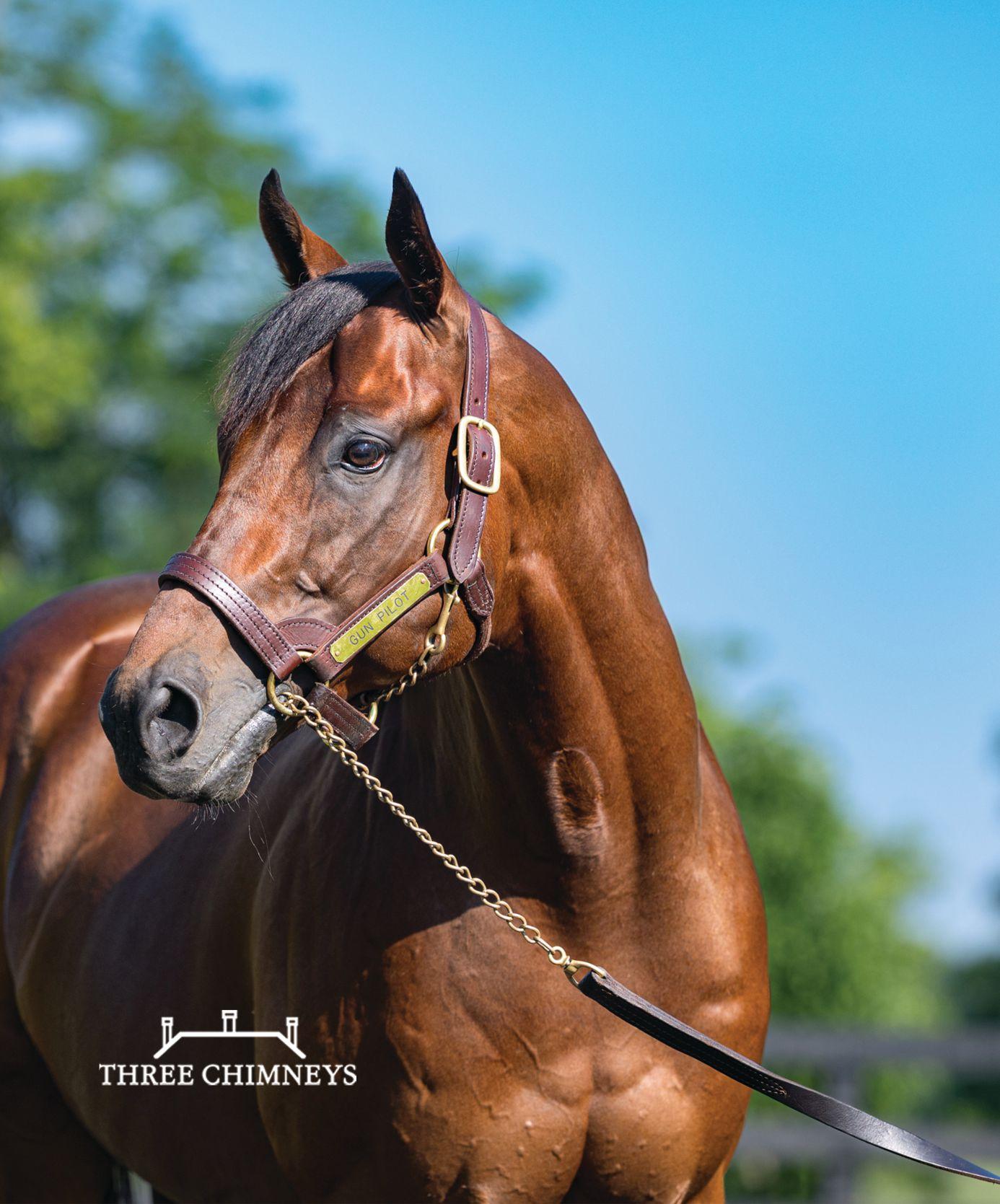
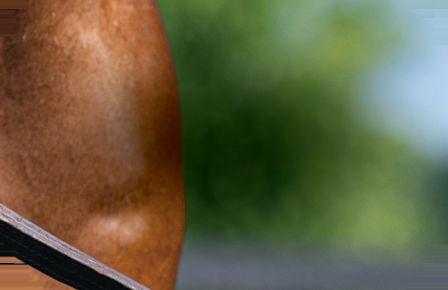
The Breeders’ CupWorld Championships, one of Thoroughbred racing’s most prestigious international festivals, will return to Keeneland in 2026 and mark the fourth time the track has held the event, following 2015, 2020, and 2022.The Breeders’ Cup will take place Oct. 30-31, 2026, pending approval from the Kentucky Horse Racing and Gaming Corporation.
The news was released May 28 as part of a multiyear announcement that named the new Belmont Park in New York as the 2027 host site for the Breeders’ Cup.
“Keeneland is honored to host the Breeders’ CupWorld Championships in 2026, and we’re thrilled to share this global racing celebration with fans from all over the world and with the Lexington community,” Keeneland President and CEO Shannon Arvin said. “We are especially excited to host guests in our new Paddock Building with further enhanced hospitality experiences. In addition, we will hold our third annual Championship Sale theWednesday before Breeders’ Cup, a dynamic way to help kick off the week’s festivities.”
A respected voice inThoroughbred racing with more than a decade of national media experience, Gabby Gaudet was named Keeneland’s new director of communications July 24. She will oversee Keeneland’s strategic communications efforts, serving as a key spokesperson and guiding the organization’s messaging and earned media strategy across multiple platforms.
Gaudet joins Keeneland from FanDuelTV, where she has been a lead racing analyst and reporter since 2019, covering premier events such as the Triple Crown and the Breeders’ CupWorld Championships. Her international assignments have included racing coverage from Hong Kong, Canada, and Royal Ascot in England.

“I’m incredibly proud and excited to begin this next chapter of my career at Keeneland — a place I deeply believe in,” Gaudet said. “This role presents an opportunity to think both creatively and strategically as we continue to share Keeneland’s story with intention and impact.”
Gaudet has served in multiple capacities at Keeneland, including paddock analyst, co-host of “Today at Keeneland,” and a U.S. sales representative.
“Gabby has been an important part of our team for several years, bringing energy, professionalism, and a deep understanding of our sport to everything she does,” Keeneland President and CEO Shannon Arvin said. “She’s earned the respect of our staff, horsemen, and fans alike, and we’re excited to see her take on this leadership role and help shape how we share Keeneland’s story with the world.”
She succeeds Amy Gregory, who retired in late May but will continue to provide communications support for Keeneland and consult on special projects.
Edward L. Bowen, a prolifc racing journalist and historian for more than 60 years who made many contributions to the Thoroughbred industry, was inducted posthumously on Aug. 1 into the National Museum of Racing and Hall of Fame in the Pillars of the Turf category.

Bowen, who died in January at age 82, was an Eclipse Award-winning journalist, editor-in-chief ofThe Blood-
Horse, longtime president of the Grayson-Jockey Club Research Foundation, former chairman of the National Museum of Racing’s Hall of Fame Nominating Committee, author of 22 books about horse racing, and frequent contributor to Keeneland magazine.
For more about Bowen, see page 30 of the spring issue of Keeneland magazine.
Keeneland and Stable Recovery, a groundbreaking peer-driven program that ofers recovering addicts the opportunity to learn the skills needed to fnd meaningful employment in the Toroughbred industry, have teamed to launch a dedicated maintenance cohort at the track.
Set to begin in August, the maintenance cohort is a specialized extension of the existing 90-day Taylor Made School of Horsemanship focusing on practical skills, job readiness, and character development through hard work and accountability. Keeneland will be the frst racetrack nationally to provide on-site housing and full-time employment for the eight men participating in the new initiative.
“Stable Recovery and Keeneland share a commitment to social responsibility and to bettering the quality of
life in our community. Together, we can create a legacy that transforms lives and strengthens our equine industry, Keeneland President and CEO Shannon Arvin said.”
Stable Recovery partners with the Taylor Made School of Horsemanship to provide an environment where men live, work, and recover together, attending 12-step meetings, additional support groups, and horsemanship skill groups led by top industry professionals. Life skills such as accountability, structure, discipline, and responsibility are taught as are employable skills aimed at providing these men with the opportunities for a second chance.
More than 100 individuals have graduated from the Stable Recovery program, the brainchild of Taylor Made Farm’s Frank Taylor.
Rena Baer, a longtime editor and award-winning writer for Keeneland magazine, died July 30 after a 21⁄2-year battle with cancer. She was 60.
“Rena was an outstanding editor who had exacting standards and who improved every story and project she edited. She also was a talented writer and photographer who particularly loved stories about nature and the outdoors,” said Jacqueline Duke, editor of Keeneland magazine.
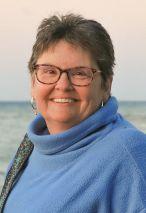
Baer’s stories in Keeneland magazine ranged from profles of racing personalities to features about the local arts
scene and Kentucky’s natural attractions.
Baer was born inYonkers, New York, and was a graduate of the University of Florida. She worked at a number of newspapers before moving to Lexington in 1999 when her husband, Eric Mitchell, joined BloodHorse Publications. Baer started with the company’s book division soon after and remained until 2009 when she launched her own freelance editing and writing business. She continued with Keeneland magazine until the spring 2025 issue.
In addition to her husband, Baer is survived by their son, Matthew Mitchell.
“He’s a Classic Winning son of Into Mischief with an imposing physical, his yearlings should be in demand at the sales.”
- David Ingordo

Contact: Aaron West


“Mandaloun is the complete package. He is so well balanced and athletic.”
- Donato Lanni










(501) 766-5906 | awest@juddmonte.com www.juddmonte.com
Racing Hall of Fame trainer
D. Wayne Lukas died at his home in Louisville, Kentucky, on June 28. He was 89. Among his many accomplishments: four Eclipse Awards as North America’s outstanding trainer; 14 years as national earnings leader; 26 individualThoroughbred champions, including three Horses of theYear; and wins in the Kentucky Derby (four), the Preakness (seven), the Belmont (four), and the Breeders’ Cup World Championships (20). Here is a look at some of his achievements at Keeneland in the sales ring and on the racetrack.
1 | FIRST KEENELAND SALES PURCHASE
At the 1977 July selected yearling sale, he boughtTerlingua for $275,000. She became a grade 2 winner and later the dam of leading sire Storm Cat.
2 | FIRST THOROUGHBRED CHAMPION
He paid $650,000 for Landaluce at the 1981 July sale.
3 | DERBY WINNER
At the 1986 July sale, he bought 1988 Kentucky Derby winner Winning Colors for $575,000.
4 | LEADING TRAINER
He saddled Charismatic to win the 1999 Lexington at Keeneland and two weeks later capture the Kentucky Derby. Lukas won a record 16 titles as Keeneland’s leading trainer and once held the record for victories and stakes wins at the track. He earned 296 wins and 51 stakes wins at Keeneland.
5 | TWO COACHES
University of Kentucky men’s basketball head coach Mark Pope took a selfe with Lukas at the 2024 September yearling sale.
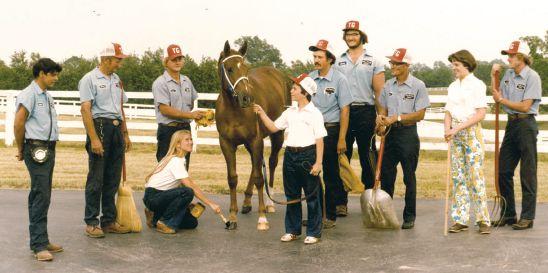
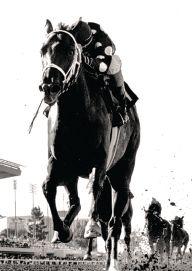
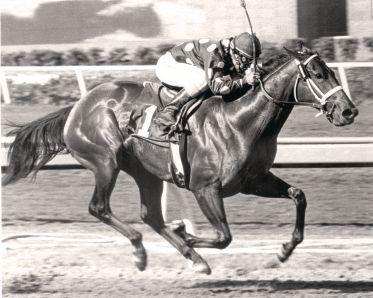
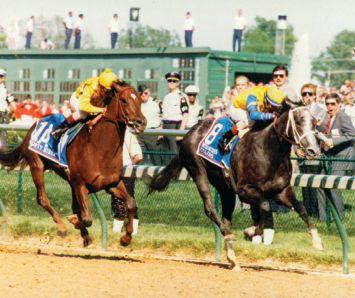
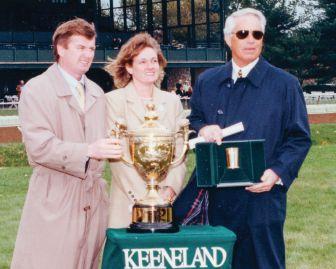

“D. WAYNE LUKAS WAS A LEGEND — a masterful trainer with passion, attention to detail, and a tireless pursuit of success, as well as a mentor whose barn produced a number of racing’s most successful trainers. His impact at Keeneland where he was a presence for nearly 50 years — is not likely to be seen again. Since buying his frst horse here in 1977, he infuenced yearling sales through his emphasis on conformation and body type while affecting the way horses were bred and prepped to produce yearlings that would appeal to him. After Wayne won his frst Keeneland race in 1980, he set numerous records during our spring and fall meets and across the country with a powerful stable of runners, many of which he and his clients had purchased here.
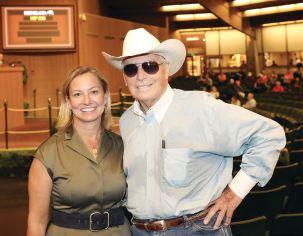
“On behalf of Keeneland, we extend our deepest condolences to Wayne’s wife, Laurie, and his entire family.” —Keeneland President and CEO Shannon Arvin
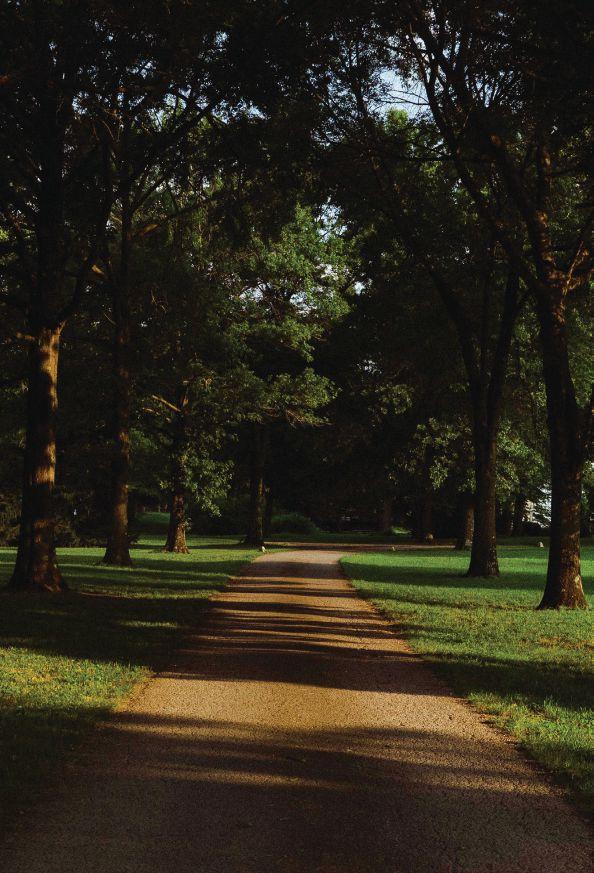



























Jones Walker LLP’s equine law team ofers strategic counsel to clients in the thoroughbred and sport-horse industries, including owners, breeders, competitors, trainers, racetracks and horse show organizers. We handle purchases and sales, syndications, public auctions, state and federal regulatory compliance, contracts of all types, litigation and dispute resolution. With frsthand industry involvement and support from the frm’s tax, immigration, employment, corporate, mergers and acquisitions, litigation, non-proft, and intellectual property practices, we provide comprehensive guidance, helping clients navigate legal and business challenges with confdence and clarity.
Laura D’Angelo Partner, Equine Law Industry Leader ldangelo@joneswalker.com
838 East High St | #304 Lexington, KY 40502-2107
859.552.7923
Attorney Advertising. No representation is made that the quality of legal services to be performed is greater than the quality of legal services performed by other attorneys.
joneswalker.com















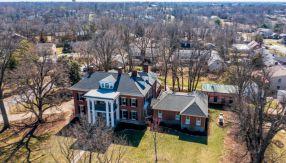















































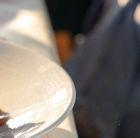








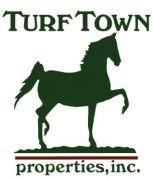


















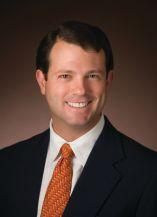


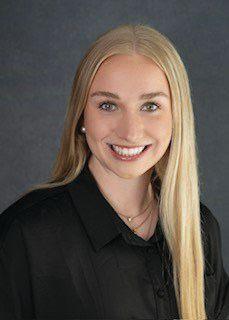






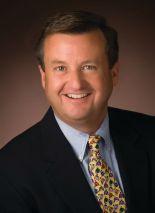










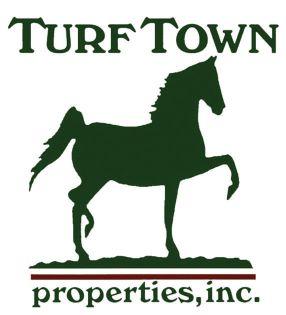











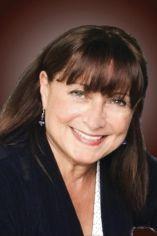

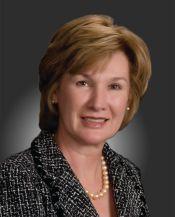











UK OPERA THEATRE DIRECTOR EVERETT McCORVEY HAS A GROWING RÉSUMÉ AS A SOUGHT-AFTER GUEST CONDUCTOR AND THE DRIVING FORCE BEHIND THE AMERICAN SPIRITUAL ENSEMBLE AND THE NATIONAL CHORALE
By Rich Copley / Photos by Anne M. Eberhardt

EEVERETT McCORVEY WANTED to make sure the “It’s a Grand Night for Singing” audience knew the chorus was singing about love — not a sluggish l-uh-v, but a soaring, full, capital L love, he told the singers at a Saturday morning rehearsal in late May.
As the chorus of more than 30 voices resumed the song and rapturously declared, “I think I am falling in LOVE!,” their song spilling out the open windows of the Schmidt Vocal Arts Center rehearsal room and onto the Univer-
sity of Kentucky campus, McCorvey broke into a wide smile familiar to Lexington music fans and, increasingly, audiences around the world.
For nearly 30 years, McCorvey has led the University of Kentucky Opera Teatre, a role that has put him and his students in front of far more than just the audiences that turn out for productions of grand operas by Mozart, Puccini, and the like. Tere are programs like the annual “It’s a Grand Night for Singing” concerts of favorite show tunes and pop songs; the holiday season “Celebration of Song” events; concerts by McCorvey’s American Spiritual Ensemble; and rousing appearances at University of Kentucky basketball games and Keeneland race meets.
“Being around him, you can feel his joy for singing and for music … not just listening to him and thinking, ‘He has an incredible voice,’ but he creates an atmosphere around him when he’s performing,” said Kara Heissenbuttel, senior director of community relations for Keeneland.
Heissenbuttel said McCorvey’s appearances at Keeneland’s annual Heroes Day to sing “God Bless America” and to lead the crowd in song — much like he does with the national anthem at UK games — have become fan favorites, as are performances at the track of the national anthem by UK voice students.
“It’s obvious that someone has prepared them for the experience that they’re going to have, and you can tell that they take great pride in
having that opportunity,” Heissenbuttel said of the UK voice students and noted that those national anthem performances at Keeneland are broadcast to all locations that receive the track’s simulcast signal.
McCorvey said, “When I’m performing there, I feel like I’m performing for an international audience, an audience that attends the Met, an audience that attends Chicago Lyric or San Francisco, an audience that goes to Paris and goes all over the world to hear, to experience fne arts and great art. So I want to make sure that if we send students out to sing the national anthem or to perform out there, that it’s of a certain quality that people who travel internationally will recognize as being of quality.”
Chances are some of those well-traveled music lovers could fnd McCorvey on stages far beyond the Bluegrass. In the last decade, his national and international résumé has grown, and he has largely done it on his own terms with a focus on
promoting and growing American music and, inspired by his own upbringing in Montgomery, Alabama, during the Civil Rights Movement, creating access for others to the stages he’s been invited to perform on.
Since 1995, McCorvey has toured internationally with the American Spiritual Ensemble, a group he formed that is dedicated to preserving the American Negro spiritual songs sung by slaves. But the expansion of his personal résumé began in 2014 when he stepped in to lead New York’s National Chorale, which performs in the iconic Lincoln Center.
Harned, Kentucky, native and UK alumna Myra Tobin, an insurance executive and philanthropist in New York, was on the board of the chorale when its founder and only music director, Martin Josman, became ill in 2014. Years before, McCorvey and Tobin had struck up a friendship when she saw him perform and began following his endeavors. She asked McCorvey if he would consider being an interim director for the chorale, which McCorvey sang in when he was a young singer living in New York.

Kentucky’s premier destination for

“Messiah” in December 2014.
“Te governor of Kentucky showed up,” National Chorale Board Chair Judith Rinearson marveled. “And, by the way, the governor of New York has never been to the National Chorale.”
Ten-Gov. Steve Beshear was indeed in the audience with his score, along with then-Lexington Mayor Jim Gray, participating in the event that changed the trajectory of McCorvey’s career. Not long afer Tobin invited McCorvey to be the chorale’s interim director, Josman passed away, and that night Tobin, who died in 2021, announced McCorvey as the chorale’s new artistic director.
“Everett was wonderful,” Rinearson said of his early days with the chorale. “He brought in new, amazing soloists. At our board meetings, we were laughing again. I’m smiling as I’m talking to you. It was just fun having him there. We were all immediately saying, ‘Tank God we did this.’
“It’s good for him, it was good for us. And he’s really turned us around. We were losing money every year, and it’s turned us around fnancially. We have a bigger following. And did you see our New York Times review?”
“I GET EXCITED ABOUT ANY PROJECT WHERE WE CAN COLLABORATE WITH PEOPLE AND MAKE UNIQUE THINGS HAPPEN.”
— EVERETT McCORVEY
“Afer I said yes, I thought to myself … there’s so many people in New York and around that you could probably ask to do this,” said McCorvey, who met his wife, soprano Alicia Helm, in New York. Tey have three children.
But Tobin insisted and McCorvey proceeded to put his own mark on the ensemble, starting with its signature sing-along — or “sing-in” as the chorale calls it — of George Frideric Handel’s
Te paper of record had not covered the chorale for years, but this past December critic Corinna da Fonseca-Wollheim wrote up McCorvey’s 10th anniversary “Messiah Sing-In,” recounting how he led the audience/choir in vocal warmups before the music began.
“Punctuated by laughter and whoops, this ‘Messiah’ unfolded in an atmosphere somewhere between a singing competition and SantaCon,” the critic wrote. “It also drew one of the most diverse crowds I have seen at Geffen Hall and one of the most joyous and colorful, with many participants sporting light-up garlands and 50 shades of red sweaters.”
Afer that frst “Messiah Sing-In,” artist manager Matthew Laifer approached McCorvey and asked if he had management. McCorvey was fattered but didn’t pursue it as the chorale was his only personal endeavor outside UK, and the Spiritual Ensemble had its own management. A year later, McCorvey hired a soloist Laifer


represented, and he approached McCorvey again.
“He says, ‘I think that you have something to ofer to the business, and I think the business needs what you have to ofer, and I would really like to represent you and manage you,’ ” McCorvey recalled. “So I said yes, and we went through the whole process, and I started getting conducting gigs.”
McCorvey, who is now represented by Quintana Artist Management, has since added the Virginia Opera; Opera Columbus; the Salt Lake Symphony; the Bay View Music Festival in Petoskey, Michigan; the North Czech Philharmonic; the Mythos Opera Festival in Italy; and more credits to his résumé.

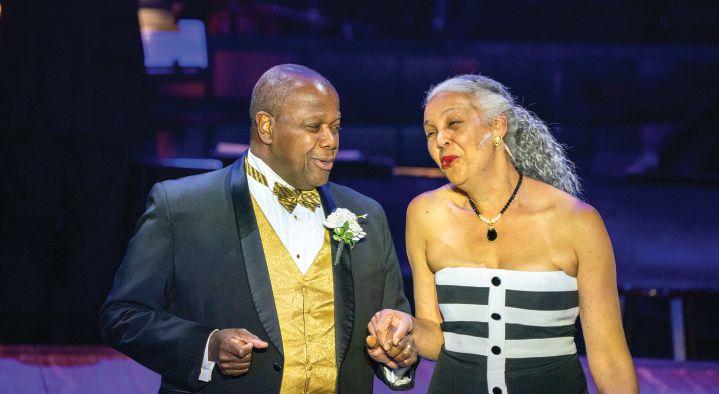
Recently, McCorvey joined the Recording Academy, the organization that presents the Grammy Awards, among other things.
“Everybody in the industry knows of Everett,” said Gabriel Preisser, general director and CEO of Opera Orlando, which just had McCorvey in May for his second engagement with the Florida company. “You know, he just has this wonderful reputation that precedes him, of being so friendly and magnanimous.”
In a profession with infamously volatile personalities, McCorvey brings a diferent vibe.
“Tere’s a diferent feeling in the rehearsal space when you have Everett as part of your creative team,” Preisser said. “Tat, I think, is a big reason why both of those productions are so successful for us. Te cast had great synergy. Tey all felt at home and were able to really focus on doing their craf as opposed to being nervous or trying to please a taskmaster.”
Just over an hour before opening night of June’s “It’s a Grand Night for Singing” concerts, the chorus was getting fnal instructions from McCorvey — “Your job tonight is to be at 200%. You have to be excited for the new audience!” — and the show’s other directors when the preshow briefng turned to a nightly honor: the good smile awards for performers who had the biggest smiles during the previous night’s rehearsal. McCorvey, who would be tough to

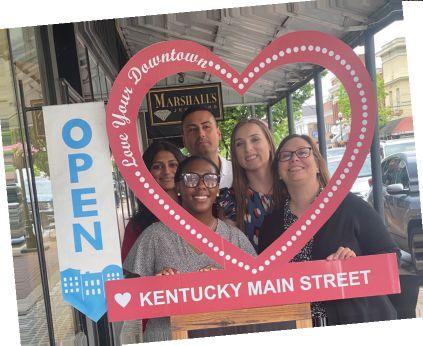







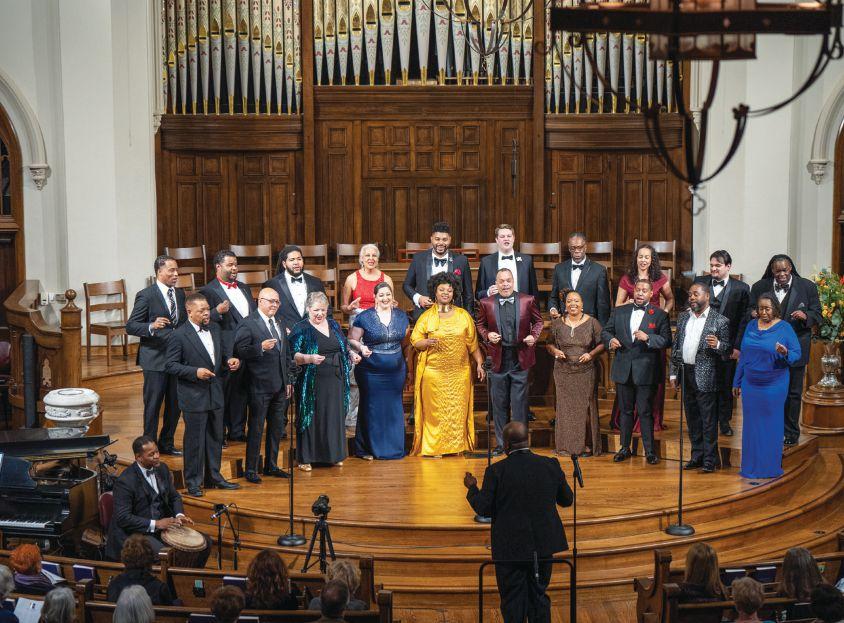
beat in a smile competition, announced some of the honorees himself.
“One of the hallmarks of Everett is he approaches every project with joy, which is infectious,” said Mark Shanda, dean of the University of Kentucky College of Fine Arts. “As a result, I think people work hard for him, and he demands hard work, but he makes the learning process and the creation process and execution process quite engaging and fun.”
Part of the joy of this season in McCorvey’s career is that his opportunities are in tune with his passions, Orlando being emblematic of that. His frst engagement was conducting the world premiere of “Te Secret River” by composer Stella Sung and librettist Mark Campbell, and his return wasScottJoplin’s“Treemonisha,”longconsidereda “forgotten opera” that McCorvey is helping put in
front of 21st-century audiences.
McCorvey’s interest in championing American music goes back to spirituals, which he sees as the basis on which American sounds like blues and gospel were built. As a nation of immigrants, he notes, many cultures brought over their own music, and it took a while for the United States to develop its own sound.
“It was really afer spirituals that America began to fnd its voice,” McCorvey said, noting the presence of the John Jacob Niles Center for American Music at UK has also infuenced his interest in promoting American music.
“We have a lot of stories to tell, and a lot of stories that need to be continued on, and for me, the best way to tell a story is with music,” said Campbell, who has worked with McCorvey several times, including UK Opera’s spring 2025 production of “Sanctuary Road,” which Campbell created with composer Paul Moravec. “So I really prize people like Everett, who are endeavoring every day to help our American stories be told.”
Next spring, UK Opera is presenting another Moravec-Campbell show, “A Nation of Others.”
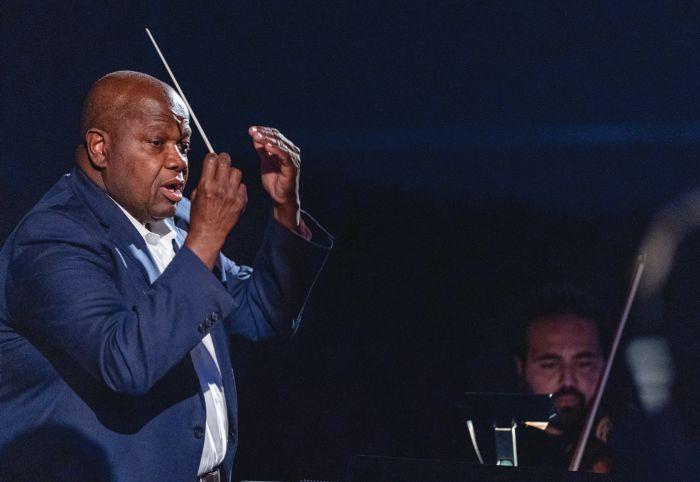


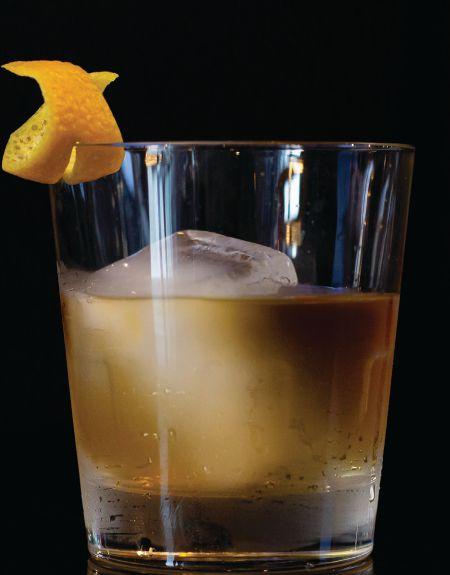

McCorvey refected, “I get excited about any project where we can collaborate with people and make unique things happen.”
One of the projects McCorvey is most excited about is a new opera about the life of the late John Lewis, a Civil Rights leader and longtime U.S. representative from Georgia. McCorvey was inspired by an op-ed by Lewis that was posthumously published by Te New York Times. He originally thought it would be a great basis for an oratorio and began talking with librettist Diana Solomon-Glover, whom he worked with when he conducted Kentucky Opera’s production of “Tis Little Light of Mine” about Civil Rights icon Fannie Lou Hamer. Tey brought in composer Maria Tompson Corley and the project quickly turned into an opera, “Good Trouble: Te Boy from Troy,” that will premiere at the Cincinnati Opera in the summer of 2027 with McCorvey wielding the baton.
“I never met him, but [he] seemed to be such a gentle, peaceful man,” McCorvey said of Lewis. “He has always been a hero of mine.”
McCorvey experienced the world Lewis, the Rev. Dr. Martin Luther King Jr., and others were working to change growing up in Montgomery in the 1960s and early ’70s. Among his distinct memories was his mother, a teacher and librarian who had to drive 60 miles each day to work because she could not work in Montgomery where the schools were segregated, and she could only work at Black schools. Te University of Alabama had been desegregated less than 10 years when McCorvey enrolled there.
“Tat was the thing that sort of guided me,” McCorvey said. “I wantedtomakesurethatmystudents,mykids,allhadaccess,because it was something that I didn’t have and my parents didn’t have.”
McCorvey’s father was a postman, and though he supported his son’s dream of a music career, he insisted he take the Postal Service exam, because that was one of the good middle-class jobs available to Black people at that time.
People on McCorvey’s route would have looked forward to
seeing his smile every day. But instead, he’s fulflling that dream of providing opportunities and access to the next generation of performers. Productions he helms frequently put him in front of aspiring singers deciding where they will go for the next step in their education.
“Everett takes advantage of every opportunity to recruit, which is part of the reason why we have as diverse a student body as we do in our opera program,” Shanda, the UK Fine Arts dean, said. “It’s been of great beneft, and I’ve seen him sort of mature, so to speak, into those roles in slightly diferent ways than just being a standard college professor.”
“IF YOU ARE A STUDENT WANTING TO GO INTO PERFORMANCE OR TEACHING OR ANYTHING IN THE OPERA FIELD, HE’S JUST WHO … YOU WANT TO STUDY WITH.”
— OPERALEX PRESIDENT BONNIE SHEARER MAYS
OperaLex President Bonnie Shearer Mays likens McCorvey to the University of Kentucky men’s basketball coach constantly working to attract the best talent.
“If you are a student wanting to go into performance or teaching or anything in the opera feld, he’s just who you want to be with and who you want to study with,” said Mays, whose organization has supported UK Opera Teatre by raising funds for everything from sets and costumes to scholarships.
Now, as an added appeal, the students could end up on the stage of Lincoln Center or some other prestigious venues before commencement.
“He has a great ability to understand people’s skill sets and then set them loose to do that,” said Tedrin Blair Lindsay, pianist, vocal coach, and McCorvey’s longtime collaborator. “Sometimes people who are new to Everett are waiting for directives, and what he’s done is open the opportunity for you to do your thing.
“It all comes back to wanting to create opportunities that eventually the students can participate in and be bettered by. Te reason we have all of these connections throughout the opera and theater world is largely because of Everett, and so all of these students being able to make these connections and have these opportunitiesandbeinthesenewworksandwork with living composers … they all come back to whatever he’s trying to do.”
Despite the career growth, the acclaim, the exciting opportunities — all increasing demands on his already crammed schedule — McCorvey hasn’t considered leaving UK.
“I’ve tried to be very sensitive in terms of arranging it so that it does not impact negatively on my students,” McCorvey said, noting the music school’s strong, experienced staf and opportunities to bring in fellow professionals to work with students.
“Working with the students brings me great joy, and I just can’t imagine being in an environment where I wasn’t able to work with students,” McCorvey said, with a wide smile. KM

Let’s take our relationship further.


With great logistics, lower business costs and educated talent, Lexington, Kentucky is ready to be your lifelong partner. Like Tiffany & Co.® whose frst manufacturing plant outside the northeast produces their classic six-prong engagement ring.
There’s no place greater. There’s no greater.
























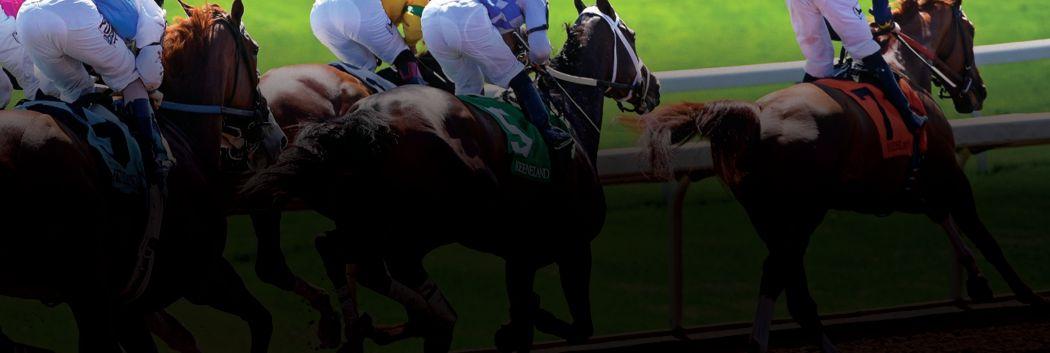






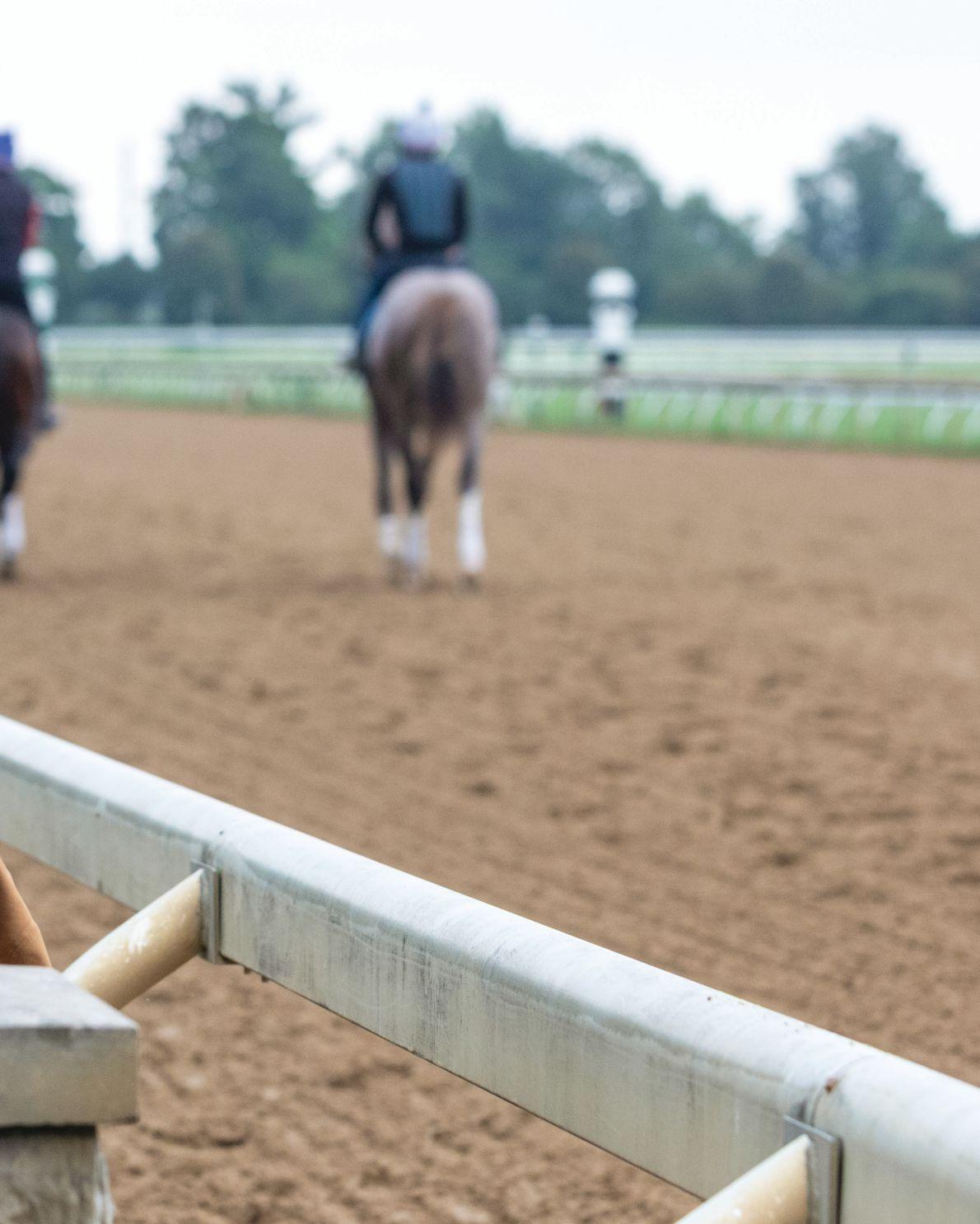
Glenn “Bo” Bromagen keeps his family’s passion for Thoroughbred breeding and racing alive as a bloodstock agent and owner
By Lenny Shulman
BBO BROMAGEN’S 41 YEARS are inextricably linked with Keeneland. He not onlyspenthisformativeyearsattheLexington racetrack, but has reached the pinnacle of his professional life there as well.
From the moment his father frst furtively pulled him out of grade school to attend the Keeneland races, Bromagen’s future with horses was virtually guaranteed. He further ensured that by interning in Keeneland’s racing and sales departments out of college, gaining valuable experience as he sought his proper career lane. Once established as a bloodstock agent and Toroughbred owner, the bearded and personable Bromagen realized two of his career goals: winning a grade 1 race at his hometown track and selling a sale-topping broodmare prospect at Keeneland’s November auction.
Tis is heady stuf for Bromagen (ofcially named Glenn, as was his father, who established Ashbrook Farm on Woodford County’s scenic Pisgah Pike in the mid-1980s). Because he knows he cannot buy at the top end of the Toroughbred market, where sale yearlings and 2-year-olds regularly fetch seven-fgure sums, Bromagen must work diligently to identify horses that will outperform their pedigree pages and breeze shows to become stakes-level athletes.

Bromagen spends time with Call On Me, a flly he bought at the 2024 Keeneland September yearling sale and who is now a 2-year-old in Rusty Arnold’s stable.
Tat he has done so regularly speaks to his having learned his lessons well from a variety of mentors. Tat he has chosen to dedicate himself to attracting new participants from his generation to the racing game speaks to his devotion to the sport and his contribution to its future.
Bo Bromagen was born in Chicago, although his pedigree boasts Kentucky roots. His father was a native of Sharpsburg, Kentucky, and a graduate of the University of Kentucky. Te elder Bromagen moved to the Windy City to put his entrepreneurial skills to good use, making his fortune as a commodities trader on the Chicago Mercantile Exchange. He also started racing Toroughbreds there at Arlington Park, winning the 1974 Pucker Up Stakes with Tappahannock. Wanting his three children to grow up in Kentucky, however,

he moved back to the Bluegrass in 1982, buying Ashbrook Farm.
In Bo’s younger years, the farm ran more cattle than it did horses and is still known for the bovine sculpture decorated in Ashbrook’s purple-and-white silks visible from Pisgah Pike. But Bo’s father also maintained a racing stable and a consequential professional partnership with Toroughbred trainer Rusty Arnold, one that continues between the conditioner and the Bromagen family to this day. Tricky Creek won multiple graded stakes for Glenn Bromagen and Arnold.




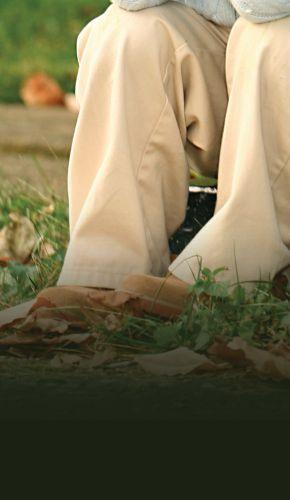


“My dad was an active owner who loved the game, loved the gambling,” Bo Bromagen said. “He’d sneak me out of school, take me to Keeneland, and give me and my sister $2 to bet on a race. We were like feral children running all over the place and having the time of our lives. If there was something going on with horses, I wanted to be part of it.”
Although it took Bromagen another decade to fgure out where he ft in the Toroughbred world, he learned a universal business lesson while observing his father.
“My dad founded a brokerage frm and I heard him on the phone a lot, heard how he engaged with other people,” Bromagen noted. “Te biggest takeaway for me is how he forged personalrelationshipsandhowimportantthat was. He taught me to work with people and be honest and up front with them. Reputation is theonethingyouhave,andIhavealwaystried to make sure I treat everyone fairly.”
Afer graduating from Trinity University in San Antonio with a business degree, Bromagen drifed, as 20-somethings are wont
todo,andwasbartendinginIdahowhenahorsechanged his life. His father had parted with $75,000 at a 2-year-old sale to land a colt named Wicked Style. Sent to Rusty Arnold, Wicked Style won at frst asking at Arlington Park in July 2007. Six weeks later, he stepped up into graded stakes company in the Arlington-Washington Futurity.
“Dad and I few up to Chicago for that race, and he won by a head,” Bromagen recalled. “We were thrilled with that. And then Rusty entered him in the Breeders’ Futurity at Keeneland. Tat is as big as it gets. I went to the windows and hammered him at 11-1 and he won by 3¼ lengths. In two minutes, I made more money than I had earned working all summer. A bunch of family and friends were in the winner’s circle going nuts. Tere is no better feeling than winning a race like that.
“Wicked Style came along at a very impressionable time for me. If not for him, I don’t know that I would have been persuaded into the business the way I was.”
Te day afer Wicked Style ran unplaced in the Breeders’ Cup Juvenile at Monmouth Park, Bromagen reported to work at Rusty Arnold’s barn. He still didn’t know where he ft in, but he knew he wanted to be around racing. Bromagen started on the ground foor, walking horses around the barn to cool of afer they fnished their morning training.
“To this day, it’s probably the best job I’ve ever had,” Bromagen said of walking hots. “Being hands-on with the horses and realizing how each one has its individual personality, how each one behaves and responds to diferent things. Rusty was so gracious and forthcoming with teaching me so many lessons.”

Arnold, a respected conditioner on Kentucky’s racing circuit who has won nearly 2,000 races in his career, remembers well the circumstances of Bromagen’s employment in his barn.
“I don’t think I’ve ever told Bo this, but when he started working for me, his father said not to do him any special favors, to be as hard on him as I wanted. And I was. He started at the bottom and had to do all the dirty work and the chores. His father wanted to make sure Bo really wanted to be in this business. And he did.”
Bromagen rounded out his equine education by interning at Keeneland. He started

First Warriors sell at Kee Sept
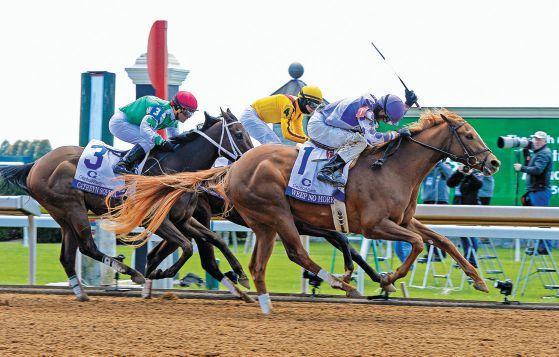
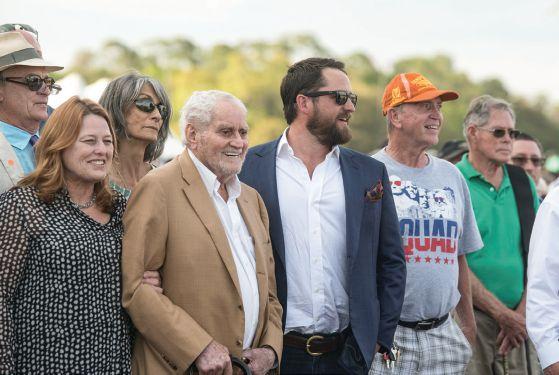
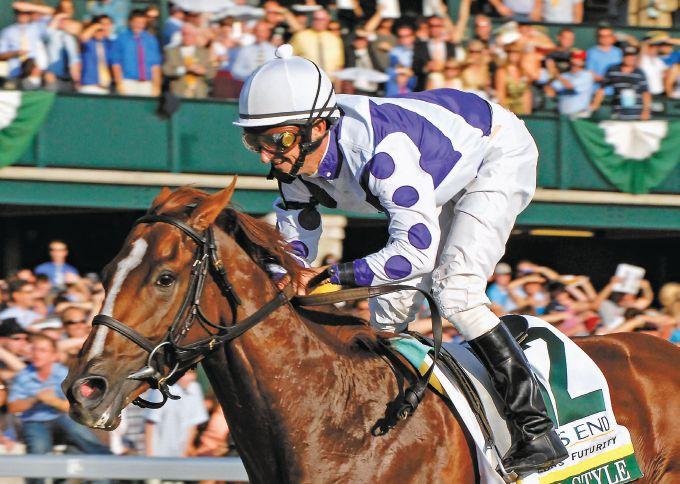
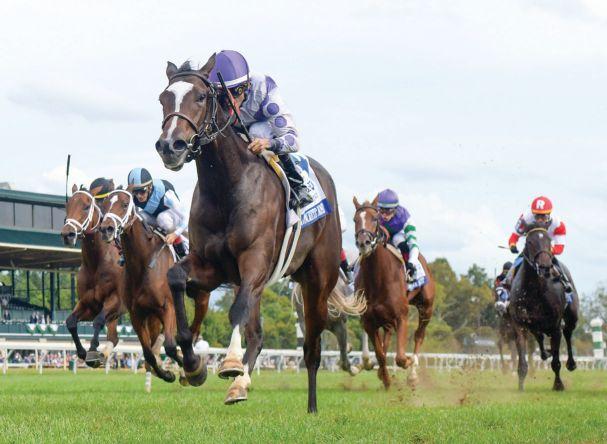
in the racing ofce, working under Ben Hufman and Dan Bork and rubbing elbows with the top trainers and jockeys in the sport. Te job was long on atmosphere, as Bromagen had a front-row seat to the daily drawing of races, wherein jockey agents bounce around like electrons trying to secure the best mounts for their clients. And, of course, there is the world-class racing he got to see frsthand. Bromagen completed his Keeneland internship with a stint in the sales ofce, learning pedigrees and the machinations of Toroughbred auctions. Finishing school came for Bromagen when he went to work for bloodstock agent David Ingordo


































































went to work for
a dozen years ago. Ingordo will forever be known as the agent who selected Zenyatta for owners Jerry and Ann Moss. Te process of trying to pick out athletes hit Bromagen between the eyes, and he fnally felt as if he’d found his calling.
“David has bought so many good horses, and he put me in a position where I could learn from some of the smartest people in the business,” Bromagen noted. “Mike Shannon. George Seabo. April and Jeanne Mayberry. He taught me so many things. A horse can have the greatest-looking body in the world, but there are only four parts that touch the ground, and you have to start from the bottom up. All the conformational lessons. Price discipline — you value the horse and then stick to that number.”
Bromagen employed all his lessons in 2015, when he plucked a Mineshaf flly named Weep No More out of a 2-year-old sale for $120,000. Weep No More had been a $90,000 yearling at the 2014 Keeneland September sale.
“She had a beautiful body, and April Mayberry was consigning her,” Bromagen said. “April does a great job at getting a horse ready to breeze at the sale while not exhausting the horse on that particular day. I have confdence that her horses have the potential to improve. Weep No More was a good mover, but her breeze time was average, which made her afordable.
“Tat’s my lane. I look for a breeze that shows potential but doesn’t necessarily light up the board, because I can’t aford to buy the top lots.”

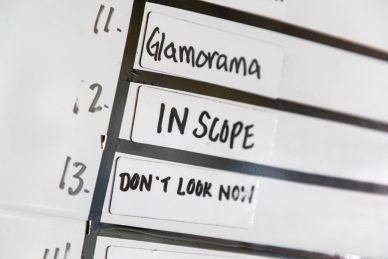
A whiteboard on a typical morning at Arnold’s Keeneland barn shows which horses will go to the track and what their tasks will be.
Noted April Mayberry, “Bo has a natural ability for horsemanship, at being drawn to certain horses. He’s got a good eye, seeing a young horse and knowing what it’s going to look like in a year. Tat’s not an easy thing to do, but that’s the game. You must have a knack to project the ability of a horse. And he put it together in a very short time, which is really impressive.”

We can, and we did.
When a family was locked in a bitter dispute over their aging parent’s care and estate, the Trustee turned to RCSM for help. Our team navigated the complex family dynamics and multi-state estate issues, removing barriers that were only making matters worse. Through experienced legal guidance and an unwavering commitment to finding a resolution, we repaired relationships, restored trust, and eased the tension within the family. At RCSM, we bring peace and solutions to the table.
Let RCSM’s compelling work protect your interests.
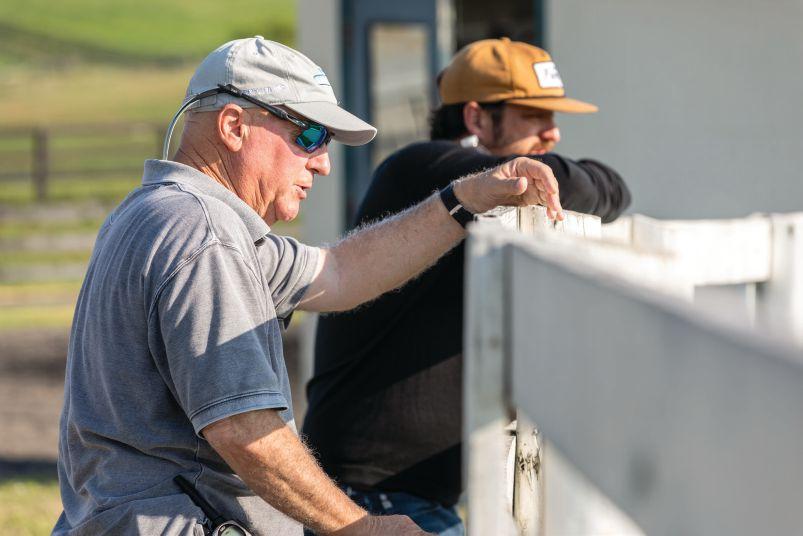
Owned by the Bromagen family’s Ashbrook Farm, Weep No More was sent to Arnold to train. She began her 3-year-old campaign with a maiden victory and then annexed the Suncoast Stakes at Tampa Bay Downs in just her third career start. Arnold decided to bring her to Keeneland for the 2016 Central Bank Ashland Stakes against three of the top fllies in the country: Rachel’s Valentina, Cathryn Sophia, and Carina Mia.
Bromagen might have questioned the wisdom of running Weep No More in the Ashland, as she went of at odds of 30-1 and trailed the feld by double digits early. But gradually the flly began to make up ground, though she remained some 10 lengths back at the top of the stretch. But somehow she got up to win in the last jump, triumphing by a neck.
“I don’t remember anything from that moment until I was in the winner’s circle. Your body feels like a bottle of champagne — you’re tingling and your adrenaline is through the roof. Amazing,” Bromagen recalled. “Tat was my frst grade 1 with a horse I’d selected, and
a bunch of my friends were there slapping me on the back and shoving me into the bushes.
“As my career has progressed, I’ve set goals for myself, and one of them was just hoping to get one grade 1 win. I felt if I accomplished that, I’d have done well. But for her to do that … it was amazing.”
Bromagen’s greatest conquest, however, was still to come. Concrete Rose had sold for $20,000 at the 2017 Keeneland September sale, and the daughter of Twirling Candy was on ofer a year later when Bromagen spied her at a 2-year-old auction. Looking for a diamond in the rough, he saw something through her jagged edges.
“When she broke of for her breeze, she was awkward, with her head cocked toward the grandstand, and she was on her wrong lead,” Bromagen recalled. “She was green, but by the time she got to the wire, she was stretching out and you could see talent there. It wasn’t a great breeze, but that is where I can do some good.”
Bromagen landed Concrete Rose for a modest $61,000 for Ashbrook Farm. Arnold took her to


Saratoga, where she won impressively frst time out in August 2018. Tat victory attracted the attention of BBN Racing, which was formed that year by Brian Klatsky, Braxton Lynch, and Brendan O’Brien to make ownership available to new participants in Toroughbred racing. Tey met Bromagen through Arnold and bought into Concrete Rose before her second race, which was the JPMorgan Chase Jessamine Stakes at Keeneland. Concrete Rose won the Jessamine by three lengths.
“I was so proud that I could help bring that result for BBN and all their clients,” Bromagen said. “Tere is nothing better than winning in your own backyard, and Keeneland is somewhere I’ve been going my entire life. Te quality of horses and horsemen is absurd, and if you win any race there,you’redoingsomethingverywell.MydadwasthereforConcrete Rose, and it was emotional to be able to do that for him as well.”
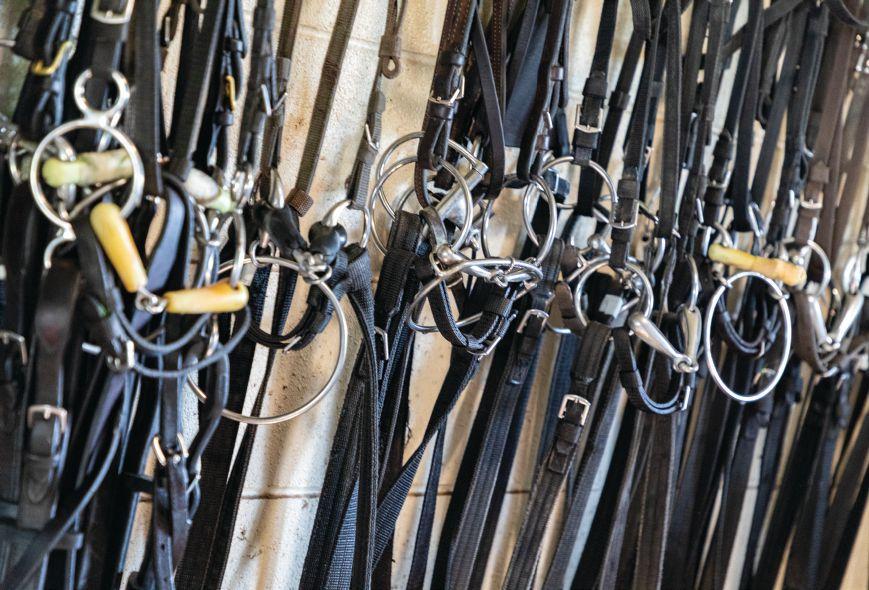
Concrete Rose was just getting started. As a 3-year-old in 2019, she went undefeated in four starts — all stakes — taking the Saratoga Oaks Invitational, Florida Oaks, Edgewood Stakes, and Belmont Oaks Invitational. She won six times in seven career starts, earning better than $1.2 million. Entered in Keeneland’s 2020 November breeding stock sale, Concrete Rose helped Bromagen realize another of his career goals — selling a horse for a million dollars.
“You’d love to hold on to them, but you can’t turn down that kind of money,” Bromagen allowed.
Larry Best bought Concrete Rose for his OXO Equine for a sale-topping $1.95 million.
“I was thrilled we could get a price like that, thrilled for everyone involved,” Bromagen said. “You put a lot of pressure on yourself to do well, and it was a great achievement for everyone connected to her. Rusty did such a great job with her. I was happy to be part of it and have that kind of experience.”
Bromagen has remained the bloodstock agent for BBN ever since, picking out yearlings at Keeneland’s September sale for the group.
“Bo’s sweet spot is fnding natural athletes, and that is what we try to do at Keeneland,” BBN’s Klatsky noted. “We spend around $1.2 million at the sale, buying six to eight yearlings, so we are in that price range in which Bo specializes. He’s had great success and we’re happy to run our sales process through him.”
BBN’s latest success with a Bromagen purchase is Kilwin, a 3-yearold flly who, like Concrete Rose, is by Twirling Candy. Trained by
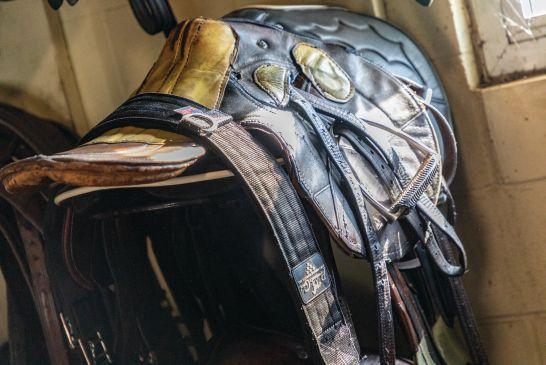
for the next day’s work.
Arnold, Kilwin is a multiple stakes winner who has earned more than $800,000 in her frst six starts. Bromagen landed her out of the 2023 Keeneland September sale for $225,000.
Patrick Lewis, a bonds trader who splits time between Nashville and New York City, met and befriended Bromagen a decade ago at the Keeneland races. When he was ready to dip into Toroughbred ownership, he bought a piece of a flly Bromagen had collared out of a yearling sale for $180,000. Named Red Carpet Ready, the daughter of Oscar Performance won two graded stakes in 2023 and another in 2024, earning just under $800,000 for Ashbrook Farm and Lewis’ Upland Flats Racing. She was sold last year as a broodmare prospect for $1.5 million.
“It was so special,” Lewis, 41, said of his ride with Red Carpet Ready. “You go from ‘Let’s win a couple of races’ to ‘Let’s win a grade 1’ in a matter of months. We won the Eight Belles Stakes on
Kentucky Oaks day at Churchill Downs, and it was surreal. Pure bliss.
“It’s Bo’s versatility in fnding diferent horses that makes him so special. Red Carpet Ready was a dirt sprinter. Poolside With Slim [winner of the 2024 Bank of America Valley View Stakes at Keeneland] is a grass miler, a completely diferent style of horse. Bo buys all these types of horses and at a price that’s approachable for people trying to get into the game. Poolside With Slim was a $105,000 yearling. I’ve partnered on 15 horses with Bo, and maybe one didn’t get to the races.
“Beyond that, he has been incredibly fair, has taught me a ton, and has been so kind and generous. He’s highly thought of by everyone.”
Hil Boone, 33, who is rebuilding a breeding operation at his family’s Wimbledon Farm in Lexington, is another young partner brought into ownership by Bromagen. Teir parallels are evident.
“Both of our families have been in this for a while,” Boone noted. “Bo is resurrecting what his father did in racing, and I’m trying to bring back our breeding operation on Wimbledon. I’ve known Bo and his family my whole life and they are trustworthy people. You have to feel confdent in your partners’ abilities because this is a tough game. I go in on a couple of horses every year, and I have friends who want a piece, so that works well. I think there is a younger generation that has a passion for racing and I’m able to lean on Bo to fnd the horses.”
For the past decade, Bromagen has focused more and more on yearling sales, believing that because of the sheer number of yearlings ofered at Keeneland September, there is more opportunity to fnd value.
him that he’s not going to be able to buy that perfect horse with a top pedigree. He’s become quite good at realizing what he can forgive physically because he’s bought others that have run through those issues. His results have been unbelievable. A heck of a lot of folks would sign up for the graded stakes winners he’s selected.”
Concrete Rose represented a last hurrah for Bo’s father, who died in 2022 at age 90. Ashbrook Farm, now consisting of Bo, his mother Sandi, sister Ashley, and brother Tyler, campaigns 15 to 20 runners at any given time either alone or in partnership with Bo’s clients. It is a pastime that Sandi cherishes.
“To me, the horses are a family magnet,” she stated. “From the time our kids got to high school and college, we would get a bus and we’d bring them and their friends to the Kentucky Derby every

“Identifyingthehorsethatcanjumpupandimprove on how he looks as a yearling puts me in that $100,000$200,000 range,” Bromagen said. “Good horses come from all price points, and I’ll buy a horse for $40,000 if I believe there is value there. My focus has to be on the physical — what the individual looks like. Te pedigree page matters but doesn’t always correlate to what happens on the racetrack.”
He recalled how owner-breeder G. Watts Humphrey once told him to read the pedigree page from the bottom up — to look for back class because a family can possess talent that doesn’t quite show out.
“I’d like to buy yearlings out of grade 1-winning mares, but I have to dig down further and fnd things that other people aren’t necessarily seeing,” Bromagen said.
“Bo is competitive, and sometimes he’ll get down on himself if some horses don’t work out,” Rusty Arnold said. “I have to remind
year. Opening days at Keeneland, same thing. Te family followed Concrete Rose, traveling to New York to watch her run and have a great time. So, through the horses, I was guaranteed that my family was together.”
Bo Bromagen feels the same way, about both his family and friends.
“I want to get people comfortable in the game, let them fnd a level that fts them and allows them to enjoy it,” he said. “I love owning these horses with others. Tere’s nothing more fun than going to the races with a group of friends … well, winning is more fun, of course. But this is what I want to do with my career and my life. I take pride in being part of a younger group of people trying to keep horse racing going. Anybody I can bring into the sport makes me feel good.” KM

3003 Old Frankfort Pike, Versailles $1,295,000
Fantastic location for this 11.68 acre property in Woodford County Kentucky! 5,100+/- sqft brick contemporary style residence, oversized 2 car garage, a 14×32 metal storage building, some plank fencing and nice rolling topography.
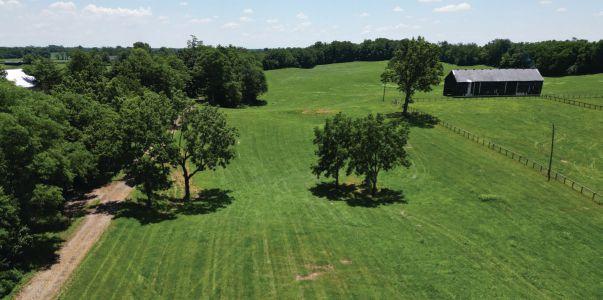
1949 Huntertown Road, Versailles $989,000
Wonderful location, great elevations and productive soils just outside Versailles Kentucky. Amenities include a 10 bent tobacco barn in good condition that could be converted to horses or other uses.



401 Shady Lane, Midway $1,200,000
This 31± acre farm is suitable for any equine discipline. The 12 stall barn features a feed and tack room with full bath with a roughed in shower and large hay loft. Ranch style 4BR 3BA residence. There is also a pristine ~1.5ac stocked pond.



1431 Troy Road, Wilmore $895,000
Beautiful 5 acre farm with 1.5 story home on walk-out basement, 4 stall barn with tack room, round pen/ longeing area and 2 felds with 4 plank fencing. Turnkey farms like this are hard to fnd!


3555 Keene Road, Nicholasville $11,495,000 744-acre Cave Spring Farm, residences include a charming historic home & an employee home. Several large felds and 18 paddocks are equipped with plank fencing and automatic waterers. 5 converted tobacco barns contribute 61 stalls, while an equisizer, outdoor arena, and round pen add utility. .

Tom Biederman Broker/Auctioneer (859) 312-0606 (859) 277-2030
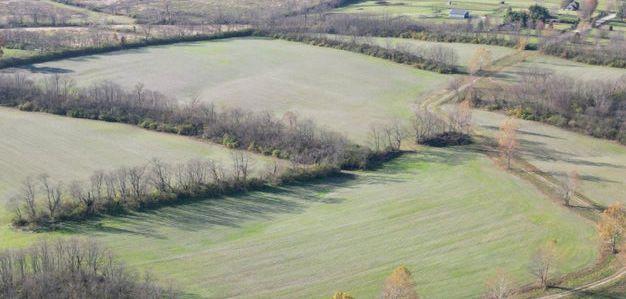

2661 Houston Antioch Road, Lexington $2,995,000 245 acre property with possibly historic brick residence, another 1800sqft residence, along with a tobacco barn and other outbuildings. Great location, fertile soils and beautiful rolling Kentucky land. Blank canvas on which to build your vision and dreams. A rare fnd indeed!
(859) 277-2030
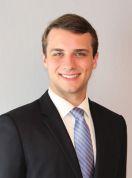






Black Diamond Farm 3591 Paris Pike, Lexington KY
Listing Price
$6,950,000
Welcome to Black Diamond Farm! This 62± acre estate is certainly one-of-a-kind. With an 18 stall barn and ample pasture space this property is suitable for any equestrian enthusiast. The 17,000sqft main residence is brimming with elegance with stunning fnishes and details throughout every corner of the home. Featuring parquet wood foors, ornate wood paneled walls, intricate moulding and woodwork, v ed ceilings, 2-story living spaces with overlooking balconies, foor to ceiling windows, an inviting kitchen with Thermador appliances, accompanying catering kitchen, Game Room, Sauna and Steam Room, Home Theater, Guest Quarters, and a frst foor primary suite that is a must-see! The 4 car garage features a 2-bedroom guest apartment upstairs with a full kitchen and full bath. The 13,000sqft pool house has a large entertaining space with a full kitchen and bar and an indoor frepit. Upstairs is a living area and guest quarters with bedroom and full bath. The pool features 2 hot tubs and a 10-ft deep end but is in need of repair. The back garden features a half acre water feature and fountain with a limestone-lined spring.
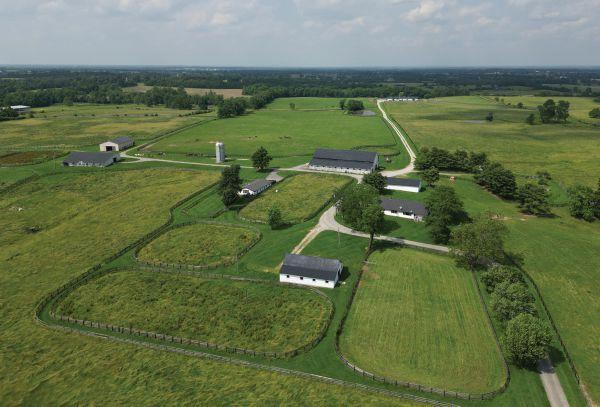
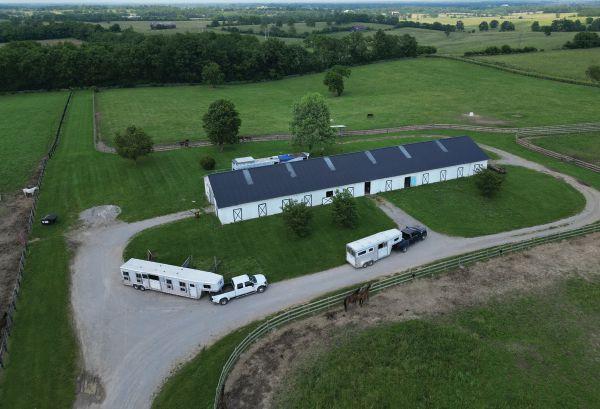
Locust Grove Farm 1542 Ferguson Road, Lexington KY
Listing Price
$3,150,000
193± acre horse farm property located less than 2 miles from Paris Pike and 1.2 miles from Greenwich Pike. Property amenities include 80 stalls over 5 barns with several tack rooms, 2 employee residences, 10 large felds and 7 paddocks with plank fencing and 4 ponds. Straddling the Fayette/Bourbon County line, this land sits on a higher elevation with wonderful scenic views of the surrounding bluegrass. The improvements on this property are in need of renovation and repair, however the infrastructur s many opportunities in this fantastic location – 20 minutes to the Kentucky Horse Park, 11 minutes to Paris, 16 minutes to I-64/75 and New Circle Road.













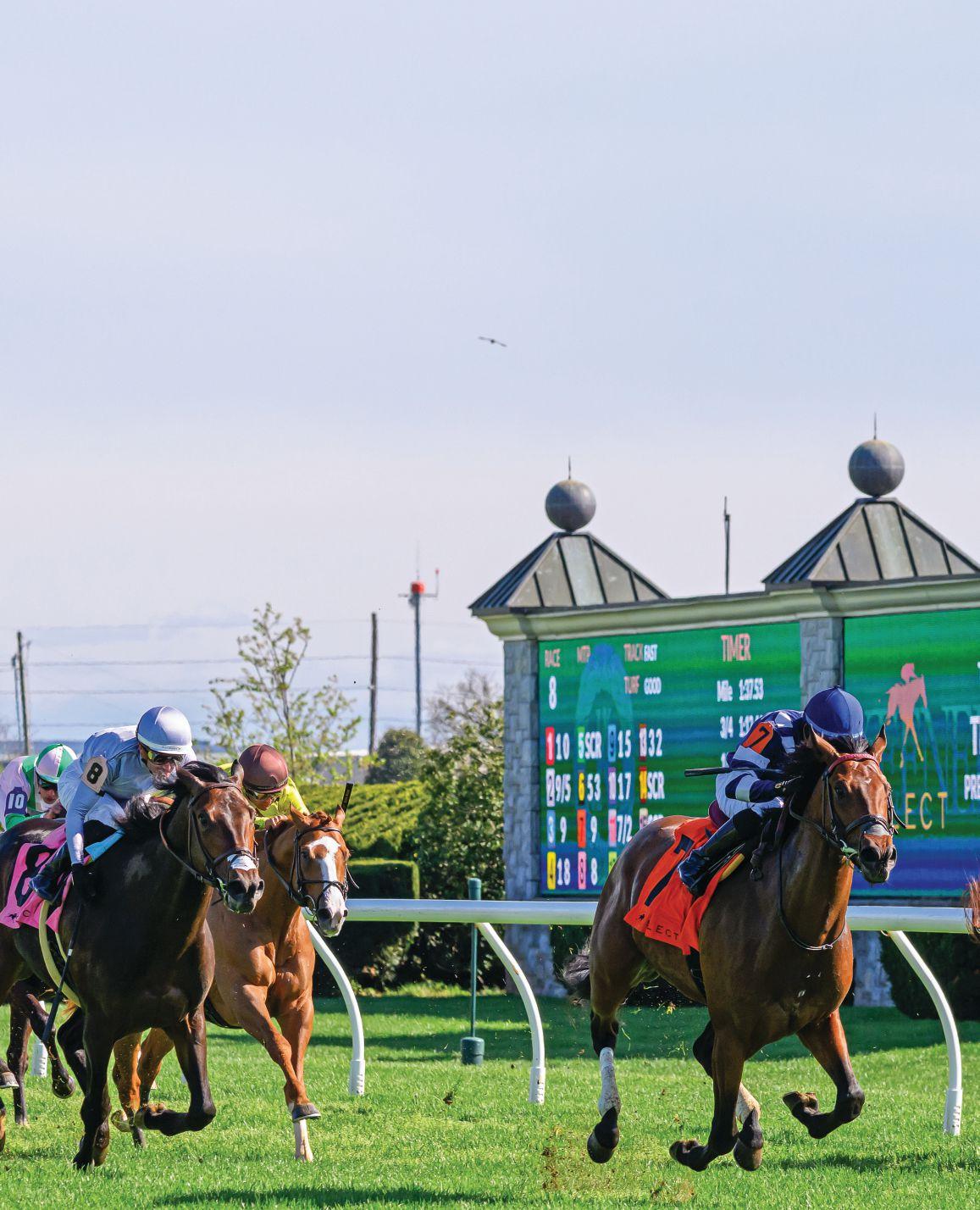
BORN IN FRANCE CONSISTENTLY MAKE
JOCKEYS BORN IN FRANCE CONSISTENTLY MAKE THEIR PRESENCE FELT AT KEENELAND
By Liane Crossley


TTHOROUGHBRED RACING’S INTERNATIONAL favor is epitomized within Keeneland’s jockey colony. Te regulars come from as far away as across the globe or as close as Central Kentucky. Some arrive as unknowns who establish themselves as go-to riders, and others come with strong credentials from other nations before proving themselves in the U.S. Regular riders relish Keeneland not only for their own success but because of the venue’s charm and the dedicated fans that cheer them before, during, and afer the races.
Profled in the following pages are fve French-born jockeys who routinely spend April and October at Keeneland. Tey are listed in order of their Keeneland wins. Voici les jockeys!
Born: July 15, 1983, in Senlis, Chantilly Keeneland wins: 516
Keeneland stakes wins: 67
Career wins: 3,039 (through July)*
Julien Leparoux is still going strong afer gaining his frst Keeneland mount at the October 2005 meet. Since that initial experience, he has earned Eclipse Awards as outstanding apprentice of 2006 and as champion jockey in 2009. He has ridden 516 Keeneland winners to rank fourth on the track’s all-time leader list. At the April race meet, he showed he is still on top of his game by winning the Resolute Racing Madison Stakes aboard Positano Sunset.
Leparoux’s Keeneland connection began in the spring of 2004 when he arrived as an exercise rider for trainer Patrick Biancone, who supplied him with afernoon mounts including his frst one at Keeneland. Leparoux said he felt a special connection to Keeneland and the Bluegrass region in part because he grew up in picturesque and racing-rich Chantilly, which he described as “the Lexington of France.”
Inthoseearlytimesashiscareerwastakingshape, Leparoux came to the attention of now semi-retired agent Steve Bass, who rode 605 winners himself. Together, they crafed a résumé reminiscent of legendary jockeys as Leparoux transitioned seamlessly from novice to journeyman. Afer topping the leaderboard as a rookie at the 2006 spring meet, he went on to add 11 more Keeneland titles. He has won 67 Keeneland stakes including 15 grade 1s. He has won the Toyota Blue Grass Stakes twice: in 2013 with Java’s War and 2017 with Irap.
Beyond the statistics, Keeneland changed his life in an unexpected way afer a minor on-track mishap in October 2011 inspired messages from wellwishers. One of them was Shea Mitchell, daughter of trainer Mike Mitchell, whom he had met in Southern California. When racing shifed in November to Churchill Downs for the Breeders’ Cup World Championships, they began dating, were married in 2012, and now live in Louisville with their two children.
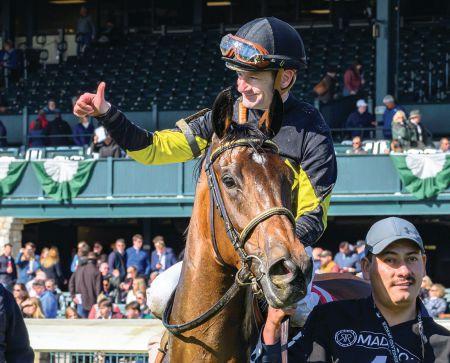



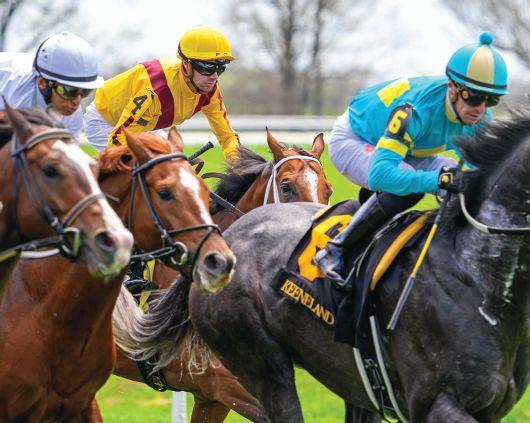
Born: July 16, 1986, in Argentan, Normandy
Keeneland wins: 213
Keeneland stakes wins: 34
Career wins: 2,287 (through July)*
The son of a jockey who became a trainer, Florent Geroux began riding at 17 in France afer graduating from jockey school there. He was the leading apprentice in his homeland in 2005 before moving to California two years later to exercise horses and compete sparingly for trainer Patrick Biancone. In 2008, he concentrated his eforts on the Chicago-area tracks with an initial Keeneland stopover at the spring meet that produced a victory. He soon was well on his way to becoming a nationally ranked rider and will be remembered as the regular rider of Hall of Famer Gun Runner.
Geroux has been especially efective when teaming with trainer Brad Cox, particularly at the 2018 spring meet when they captured their respective leader titles and won the Central Bank Ashland Stakes with eventual multiple champion Monomoy Girl. Teir other joint Keeneland stakes victories include the 2023 and 2024 Juddmonte Spinster with two-time Eclipse Award winner Idiomatic and the 2021 Darley Alcibiades with Juju’s Map. Tey also joined forces to win the 2021 Kentucky Derby presented by Woodford Reserve with Mandaloun. Geroux’s 34 Keeneland stakes wins are highlighted by six grade 1s.
“I knew nothing about Keeneland when I came so I was pleasantly surprised,” he said. “It’s beautiful in the mornings and even better in the afernoons. Always a big crowd, which is very nice when you are a jockey or any athlete. Every time you win a race at Keeneland, it is very nice. Even better to win the big races.”
Geroux and his wife, Kasey, live in Louisville with their two children.
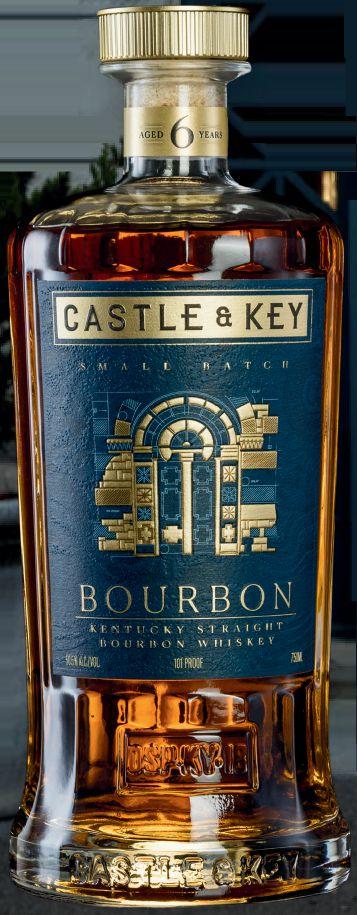


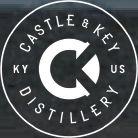



Crafted for the Winners Circle


Born: Aug. 4, 1992, in Melun, Seine-et-Marne
Keeneland wins: 92
Keeneland stakes wins: 20
Career wins: 2,026 (through July)*


Since he frst rode at Keeneland during the April 2016 meet, Flavien Prat has been a frequent visitor to the track’s winner’s circle. At the 2025 spring meet, he was there more than any other jockey to secure his frst local title with 20 victories from 89 mounts punctuated by his scores in the Maker’s Mark Mile on Carl Spackler and the Commonwealth Stakes on Extra Anejo. Te trophy adds another honor to his growing list that
includes the 2024 Eclipse Award for a sensational year that included a Breeders’ Cup Classic triumph aboard subsequent champion Sierra Leone. He also won the 2022 Breeders’ Cup Classic at Keeneland aboard Flightline, who would be honored as Horse of the Year. Prat secured a Kentucky Derby victory aboard Country House in 2019, took the Preakness with Rombauer in 2021, and captured the Toyota Blue Grass aboard Zandon in 2022.
Prat was born into horse racing but not the Toroughbred variety. As the son of a Standardbred trainer, Prat has kept in touch with that sport by recreationally driving horses at the Saratoga Springs, New York, harness track when there for the summer Toroughbred season. When his competitive career began, Prat went straight to the Toroughbred world and began riding in France at age

16. A year later, he was his home country’s champion apprentice. He wintered at Santa Anita as an exercise rider before returning home for several seasons. He gained his frst U.S. win at Santa Anita in 2010.
By 2015, Prat was riding regularly in the U.S. and earned multiple titles in Southern California.
“I had the opportunity to ride for people on the East Coast, so three or four years ago I decided to move East from spring until fall,” he said. “Ten I got the opportunity to ride at Keeneland.”
Prat said the connection with his French colleagues is stronger because of their backgrounds.
“Te fact that we are from the same country bonds us a little bit more,” he said. “We are good friends and it is great to see that we can do well here. I knew Vincent Cheminaud a little bit from France; I met Julien Leparoux when I frst went to California and I met Florent Geroux when I came here.”
When not at Kentucky race meets, Prat competes in California and New York where he and his wife, Manon, have homes. Tey have two children.
Born: Nov. 18, 1993, in Mont-de-Marsan
Keeneland wins: 12
Keeneland stakes wins: 2
Career wins: 143 (through July)*
As the son of a steeplechase jockey, Vincent Cheminaud found success in that sport before making a name for himself as an international fat rider. He faunted his talent in his frst ride in the U.S. when he won the $1 million Sword
Dancer Stakes at Saratoga Race Course aboard eventual champion Flintshire in 2015. Te efort was a bit of a “one and done” as Cheminaud did not compete again stateside until he had a single mount in 2018. He then set his sights on leaving the international circuit.
He got in touch with agent Steve Bass, a former jockey and now a semi-retired agent who was instrumental in transforming fellow Frenchman Julien Leparoux from a newcomer to a two-time Eclipse Award winner. Following a similar path as Leparoux, Cheminaud rode six races near the end of Turfway Park’s 2022 spring meet and segued to Keeneland,

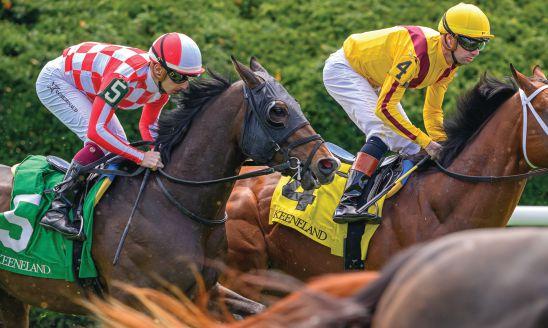


where he competed the full meet and won two races. Afer concentrating on the Kentucky circuit for the rest of the year, Cheminaud branched out to meets throughout the country so he could learn more about American racing.
“Even afer winning many races in Europe, it’s not easy; you need to fnd new business,” he said. “But it is a good challenge and I am happy.”
Te strategy has been efective with Cheminaud gaining a steady stream of winners this year at Kentucky
Born: July 3, 1991, in SainsMorainvillers, Picardy Keeneland wins: 5
Keeneland stakes wins: 2 Career wins: 280 (through July)*
Alex Achard wanted to establish himself as a U.S. jockey afer riding in his native land and on an international level. He was slightly acquainted with Florent Geroux, so he reached out via social media for advice on transferring his skills as Geroux had. Geroux suggested Horseshoe Indianapolis racetrack as a place to make connections.
“He said it would be a good place to be close to Kentucky but not be in Kentucky,” Achard said. “I felt like Indiana would be a good place to start and a good close spot if there was opportunity to ride at Keeneland and Churchill Downs.”
Achard had previously wintered as an exercise rider in Southern California (and rode a race there in 2014), so he went back to that trade at Horseshoe Indianapolis and then at Saratoga Race
and regional tracks including victories in Keeneland’s MiddleGround Capital Beaumont Stakes on Verity and VisitLEX Elkhorn Stakes on Utah Beach.
For all his domestic and global accomplishments, Cheminaud considers Keeneland his favorite track.
“It’s chill, it’s cozy, I like the people,” he said.
Cheminaud has now opted for less travel so he can spend more time with his wife, Aprilia, and their three children. Tey live in the Louisville suburb of Crestwood.
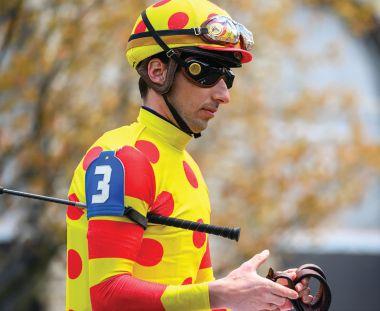

Course. Along the way, he began picking up afernoon opportunities, and despite going winless, he closed 2018 with 32 mounts. With a reputation as an enthusiastic hard worker willing to travel, Achard became a familiar fgure at Turfway Park and Keeneland’s year-round barn area on Rice Road. He also frequented the Keeneland-owned Te Toroughbred Center in Lexington where trainer Paulo Lobo gave him a leg up on In Love, a horse that would elevate his career.
Together in 2021 they won an Arlington Park allowance race and the TVG Stakes at Kentucky Downs, then recorded Achard’s frst grade 1 win in the Keeneland Turf Mile Stakes. Achard gained further attention when he rode In Love in the Breeders’ Cup Mile at Del Mar.
Achard has established himself as a sought-afer regional rider thanks in part to advice from a fellow Frenchman. Achard and his partner, Birdie Salyer, live in Midway, Kentucky. KM
* Per all countries as available within the Equibase data system









































Zach
Davis
President & Principal Broker
Leading the brokerage since 2011, Zach’s expertise includes horse farms, historic estates, crop & cattle land, as well as recreational properties. Zach also frequently works in concert with a client’s legal & financial teams, offering guidance for estates & trusts.
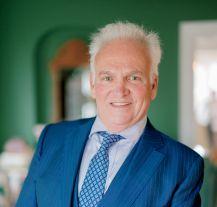
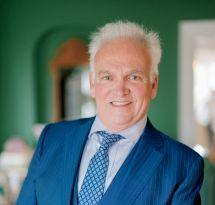
Greg Martelli Associate Broker
Greg’s passion for fine homes is unparalleled. He has assisted in the creation & restoration of hundreds of estates across the Bluegrass. With more than forty years’ real estate experience, his unique background provides a value-added experience for his clients.


Betsy Lankford Associate
Betsy hails from Bourbon County where she meticulously restored a historic home on her family farm, Ansford, lending extensive expertise in historic preservation. Betsy rode and competed with Saddlebreds and today is an avid fox hunter.
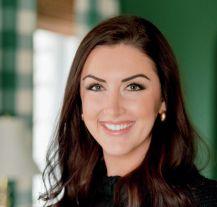

Combs Gibson Associate
A proud Kentucky native, Catherine resides in Lexington. Her seven years of public relations experience lends marketing expertise. A keen eye for design & gracious demeanor ensure a superb experience for her clientele.


Davis Emig Associate
A native of Lexington, Hannah has lived across the globe from the Middle East to Germany. A lifelong equestrian, she has evented, ridden hunter jumpers, and now fox hunts. Hannah begins and ends her day lovingly caring for her own horses.
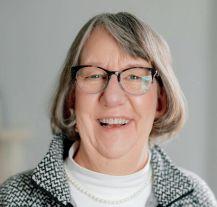

Hicks
Worrell Associate
Lucy is from Midway and has held her real estate license since 1979. Today, Lucy also operates Woodford Insurance, offering a wide variety of insurance services. Lucy’s Bluegrass heritage & specialized knowledge make her an extraordinary resource.
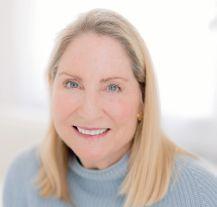

Robin Owens Associate
A lifelong equestrian, Robin thrives in Central Kentucky’s equine community and takes great pleasure introducing newcomers. Her knowledge & connections aid her in finding the perfect home or farm in Lexington or nearby communities.

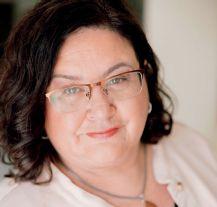
Tamara Bayer Associate
In her second decade working in real estate, Tamara’s expertise includes residential (especially finding the right neighborhood to fit a client’s needs), homes on acreage, & more. Her easygoing personality, attention to detail, & technical savvy have resulted in many repeat clients.









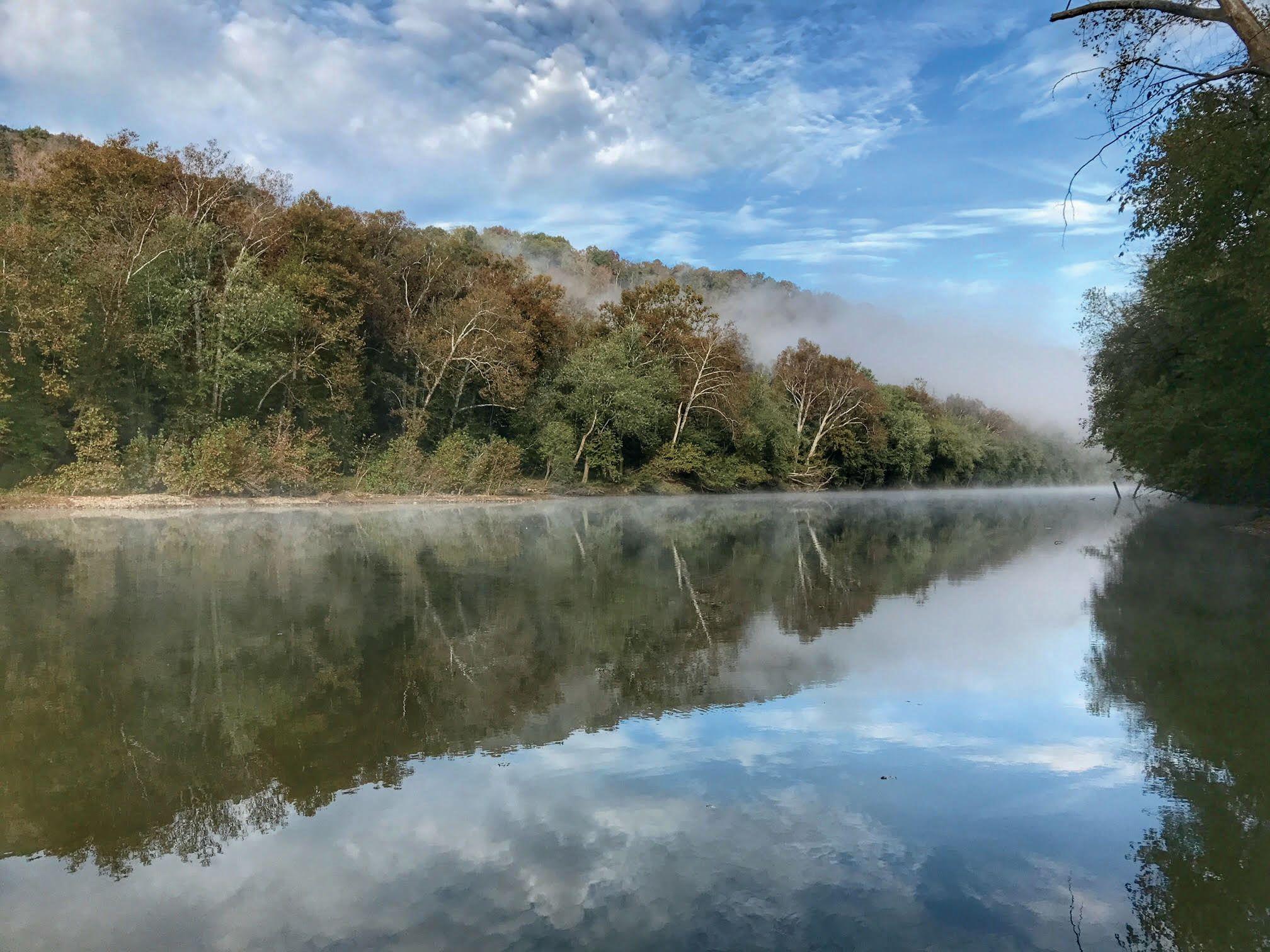

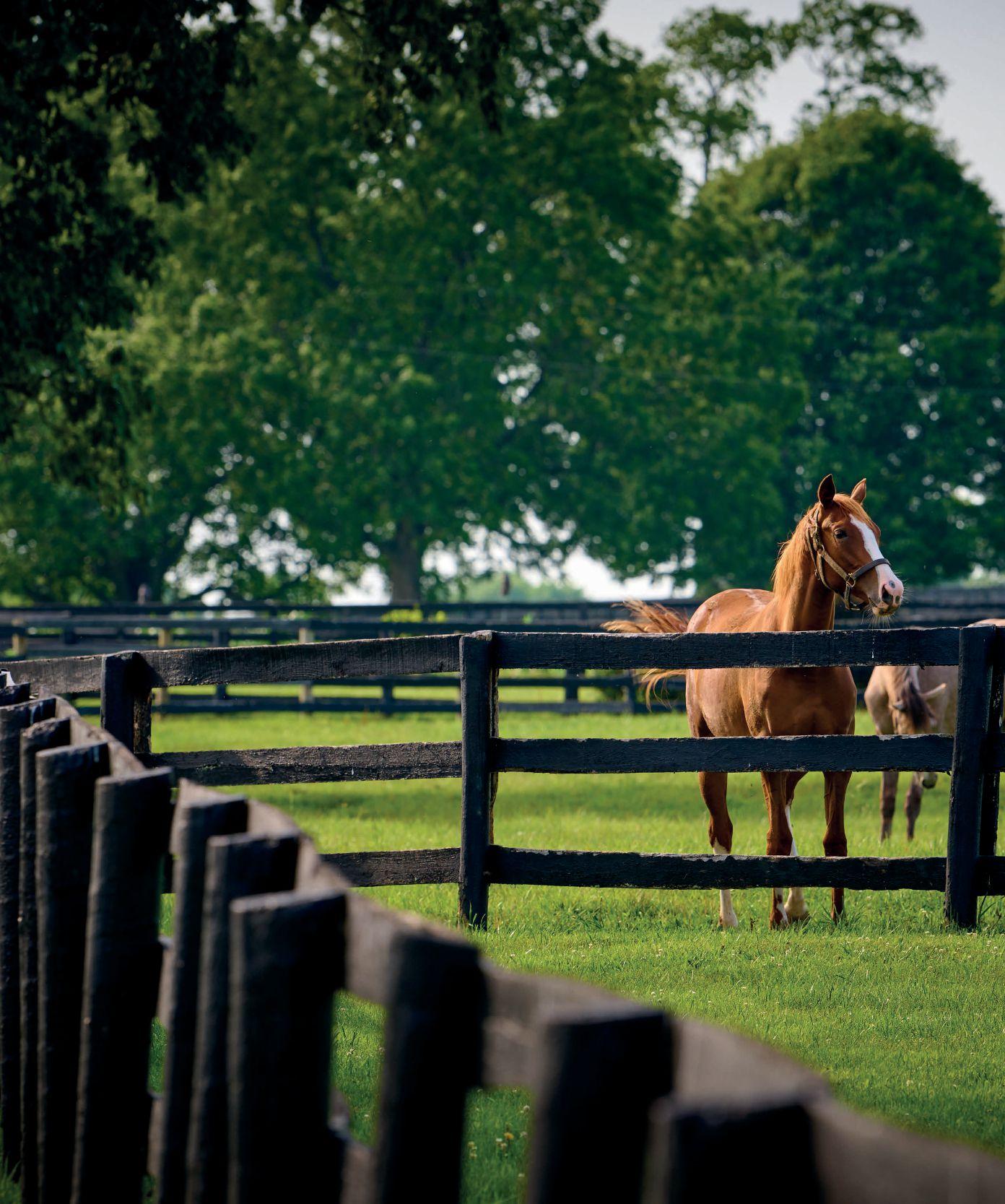


Horsemen praise the quality of the turf course and fans appreciate the competitiveness of the racing.


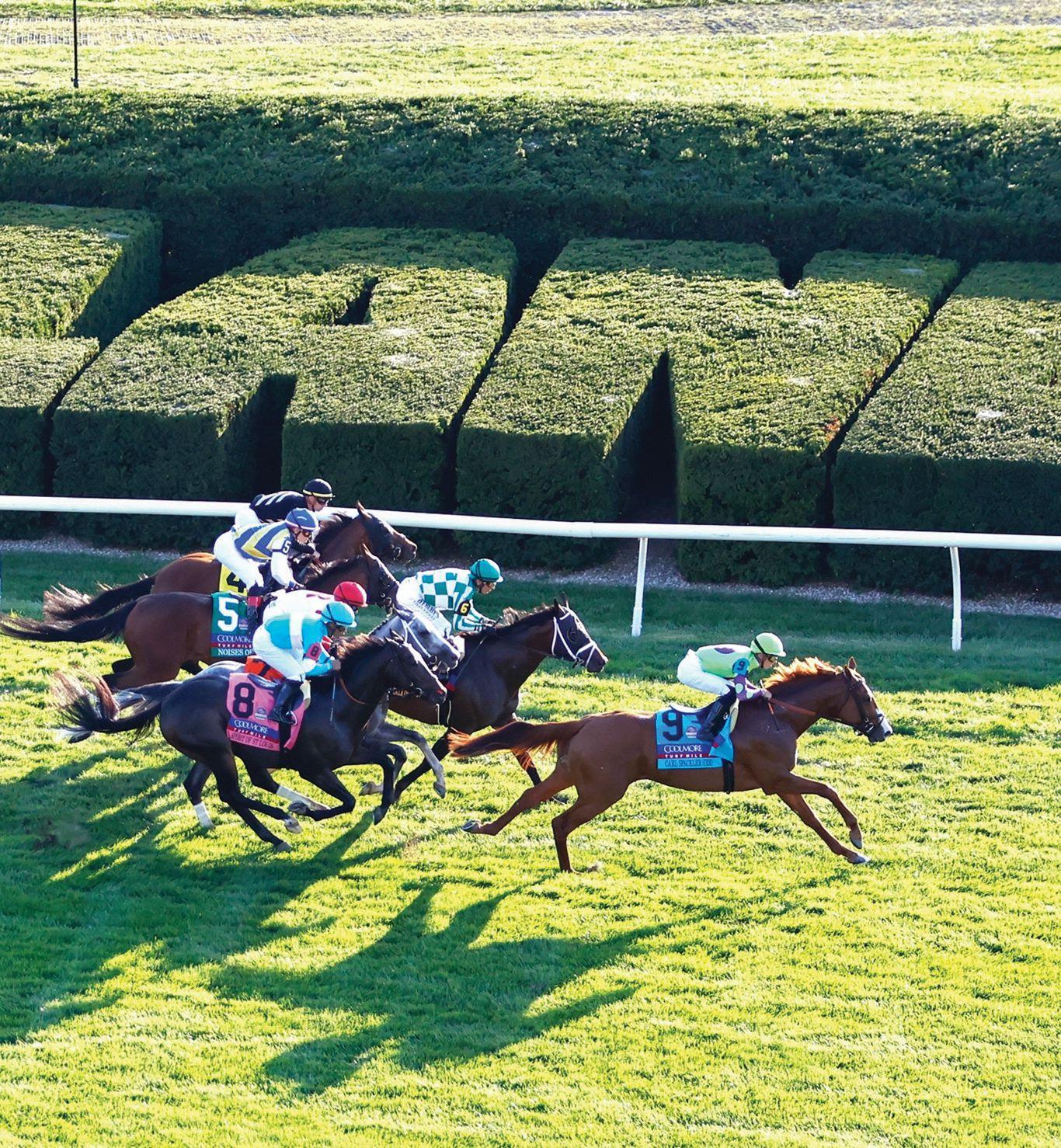


Keeneland’s turf course has witnessed incomparable racing in the 40 years since it opened
By Cynthia Grisolia Grisolia
Track superintendent Alfredo Laureano and his team spare no effort in ensuring the turf course is immaculate.
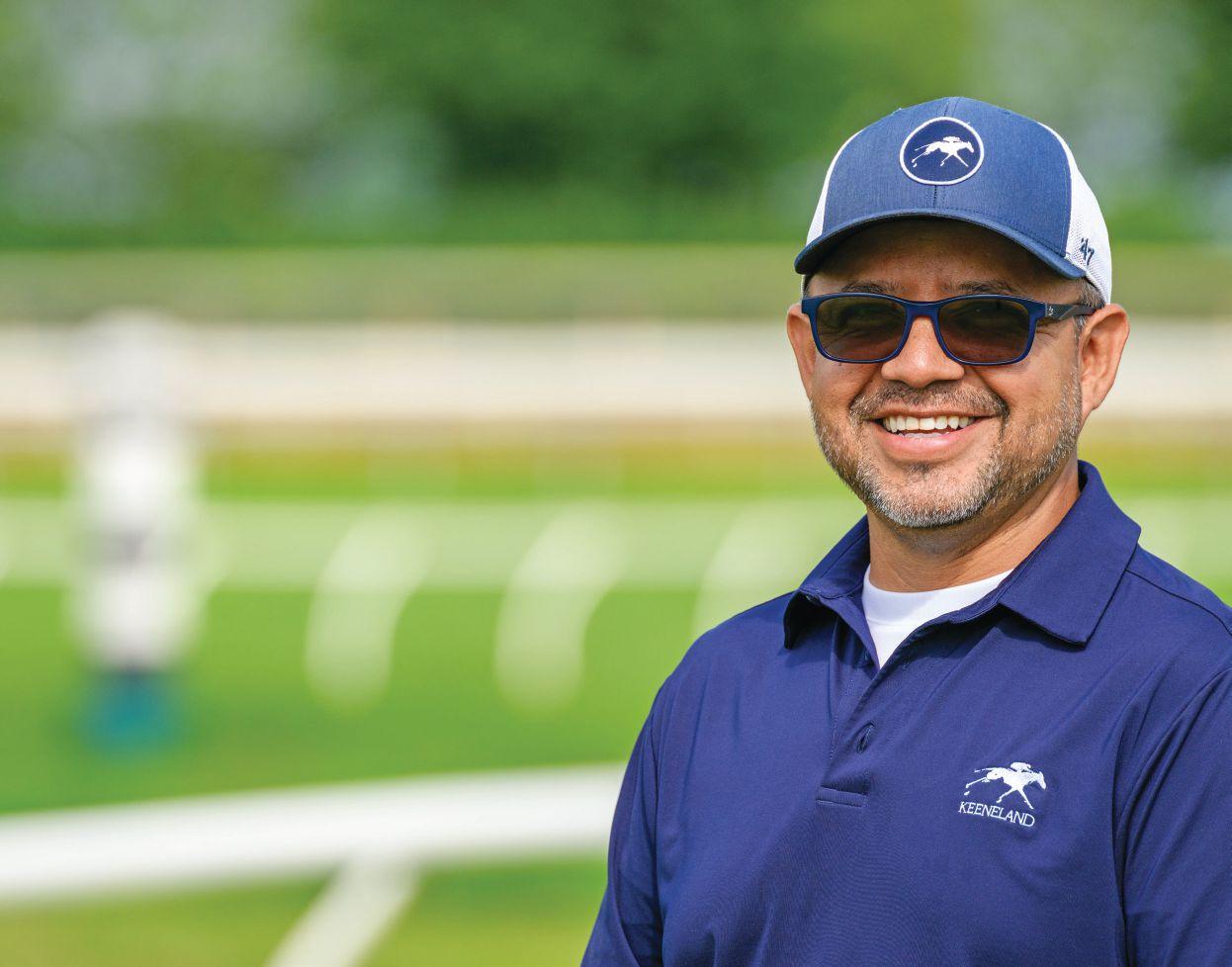





OON THE KEENELAND backstretch, tall magnoliatreesoverlookthevelvetgreencarpet that is the racetrack’s turf course. It’s early June, just 38 days afer the close of the 2025 spring meet, and their late blooms still emit a sweet scent.
On the course, track superintendent Alfredo Laureano is surveying the status of the biannual “renovation” that is underway to assure that this grassy surface will be in tip-top condition for the kickof of Keeneland’s fall meet on Oct. 3. “See this?” Laureano said, pointing to a bald patch. “Tis is the footprint of a horse, and look at all the grass coming in. Tis is baby grass, and that baby grass needs water.”

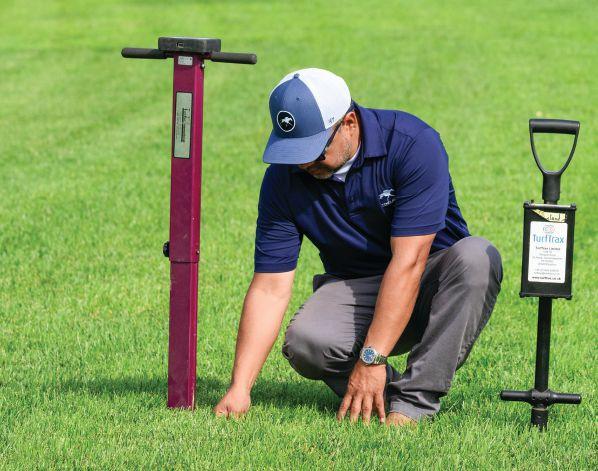


Painstakingly monitoring moisture is just one part of the year-round endeavor to keep this turf course fawless, and Laureano and his crew are vigilant of every detail. “All the time, we stay on top of it,” Laureano noted. “Tere’s no excuse for this not to be perfect.”
Ask many of today’s top horsemen, and they would confrm that it is.
Inaugurated in 1985, the Keeneland turf course — considered by some to be the preeminent grass course in the country — is celebrating its 40th anniversary in October, and in these four decades the turf racing and stakes schedule has grown exponentially.
During the track’s spring meet, the 7½furlong oval is the site of 10 black-type events, eight of them graded, including the grade 1 Maker’s Mark Mile and the grade 1 Jenny Wiley, while the October meet ofers 12 stakes, 11 of them graded, highlighted by the grade 1 Coolmore Turf Mile (one of Keeneland’s eight Breeders’ Cup “Win and You’re In” events) and the grade 1 Queen Elizabeth II Challenge Cup. In 2025, Keeneland’s turf stakes ofer a total of $11 million in purse money.
“Keeneland takes a lot of pride in our turf course and the exciting races run over it,” said Gatewood Bell, the track’s vice president of racing. “And we’re very grateful to our horsemen for contributing to its success by entering their high-quality and competitive horses.”
Initially, adding a turf course was not met with enthusiasm. In the early days of the sport, few American tracks ofered a grass course — that was Europe’s domain. In the early 1930s, however, a grass course sprouted at Florida’s Hialeah, which attracted an international audience in summer, and it set of the greening of American racetracks. By the 1960s there was a great furry of turf activity in the U.S.




Keeneland’s prestigious spring turf races include the Maker’s Mark Mile, won this year by Carl Spackler (above), and the Jenny Wiley, won this spring by Choisya (right).
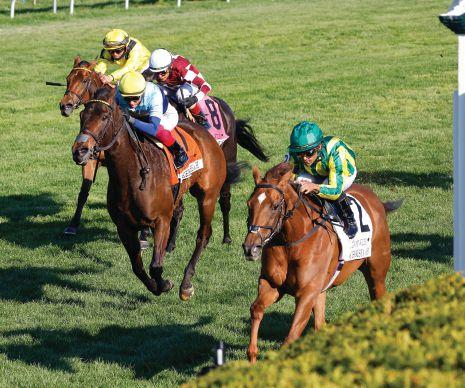
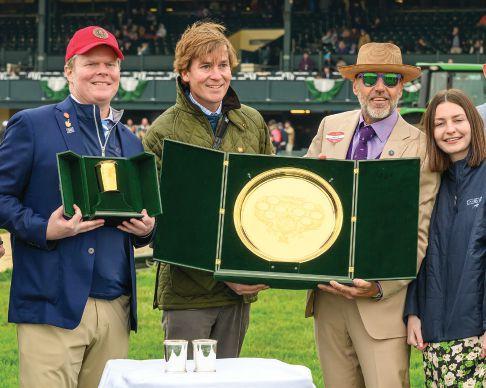
Maker’s Mark’s Rob Samuels (left) and Keeneland’s Gatewood Bell (second from left) present trophies to e Five Racing’s Bob Edwards following Carl Spackler’s win in the Maker’s Mark Mile.
Kentucky, however, remained behind the curve — until William “Bill” Greely joined Keeneland in 1972 as general manager. Greely had vision and thought if the venue was to continue to attract top stables, a turf course was critical. “I would go to Monmouth, Arlington, New York, and Canada to encourage horsemen to come for the fall meet,” said Greely, who was named Keeneland’spresidentandCEOin1986andretired from his post in 2000. “I got to know the Canadians, and they had good turf horses. I would say, ‘How about bringing your horses to Keeneland this spring?’ And they would say, ‘No, you need a turf course.’ ” Greely also found that horsemen didn’t have the resources to split their dirt and grass runners between diferent tracks.
But the notion of a turf course was met with resistance, specifcally from Keeneland’s former president and then-board chairman, Louis Lee Haggin II, who thought grass racing should remain across the pond. Fate, however, intervened. Afer a wicked storm damaged the track’s tote board, its replacement was constructed 70 feet farther back, opening up a ribbon of space, and by 1980, Greely was able to muster renewed interest and set construction in motion, hiring the Toronto-based Read, Voorhees & Associates — which had built the turf courses at Woodbine and Turf Paradise, among others — to design the state-of-the-art addition. Te 1984 visit to Keeneland by Queen Elizabeth II also spurred construction of the turf course. A race named in her honor had its initial running on the dirt, but thereafer the Queen Elizabeth II Challenge Cup has been contested on the turf.
Keeneland’s grass oval would become the frst in Kentucky, debuting Oct. 5, 1985, with the mare Ogama Bay winning the inaugural contest. And it would be named the Haggin course in honor of Louis Lee Haggin II.
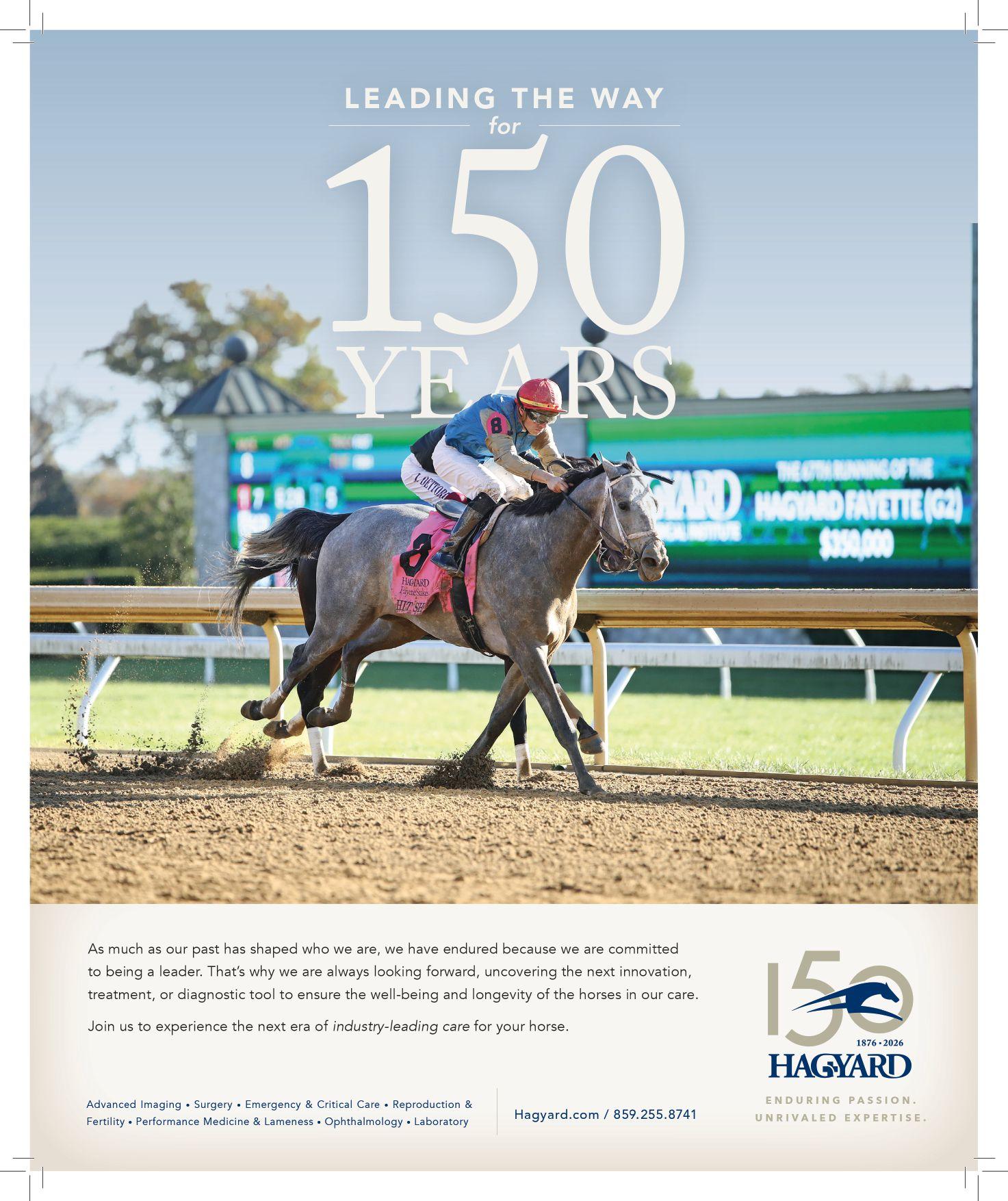

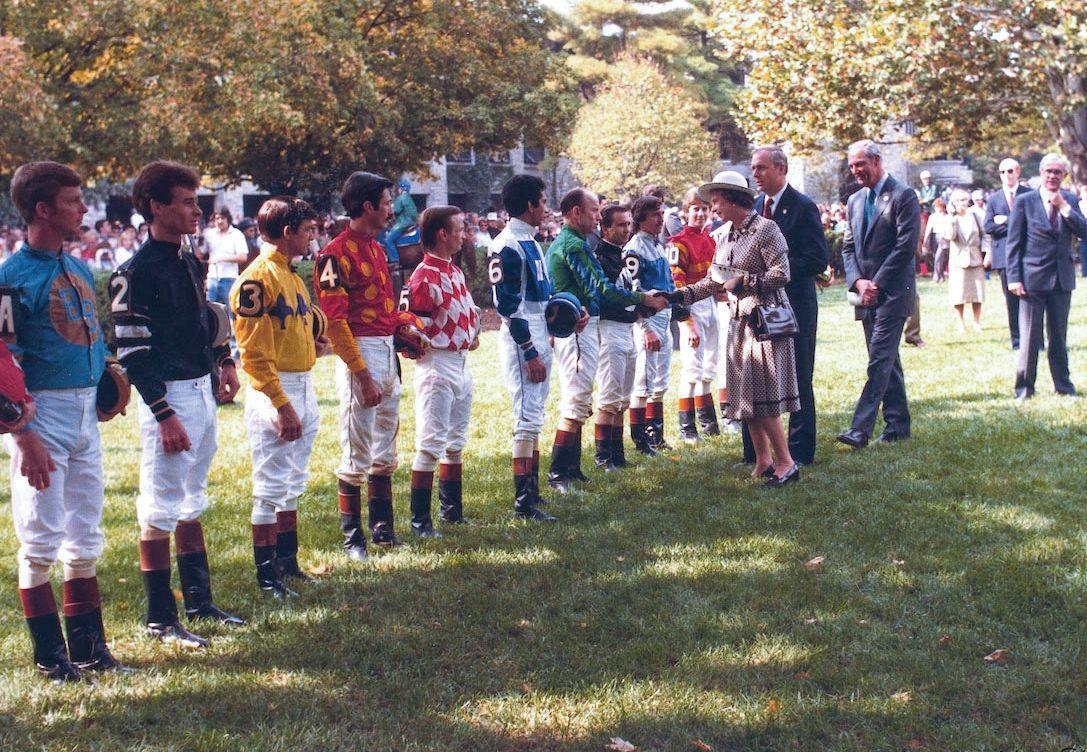
Since its debut, Keeneland’s turf course has come to be held in high regard by horsemen, who are drawn to the prominent races ofering ample purses and the meets’ advantageous places on the calendar. “In the spring, coming out of South Florida, I’m really looking forward to Keeneland,” said Chad Brown, perhaps the most dominant turf-horse trainer in the country. “It’s similar, I’d say, to golfers showing up at Augusta in April for the Masters.”
Brown owns three win records over the course: seven runnings of the Jenny Wiley, two with 2020 champion female turf horse Rushing Fall (who holds the 11⁄16-mile course record); eight victories in the First Lady, where his trainee Uni holds the course record for one mile; and fve runnings of the Queen Elizabeth II. In 2025 Brown captured his second win in the Maker’s Mark Mile with the colt Carl Spackler. Brown points not only to the meet’s
inherent prestige but also to the quality and fairness of the course. “It’s in mint condition,” he said. “You know that you are going to hit clean shots — that’s the way I train my high-end turf horses. I want them to be getting in and out of the ground cleanly. You won’t fnd a fresher, better maintained turf course than Keeneland.”
Retired trainer Charlie LoPresti,
who called Keeneland home, has fond memories of racing his twotime Horse of the Year Wise Dan over the oval. “I always looked forward to running there in the spring because it set me up for Saratoga, Churchill, Woodbine,” LoPresti said. “And what always amazed me was that coming out of winter, in April, the turf course was always very good.”
















Keeneland’s grass course, said track superintendent Alfredo Laureano — who brings a 20-year career as an exercise rider to the table — is the culmination of art and science. “Turf courses were once all about beauty,” he noted. “And I can tell you, as a rider, I used to go to a lot of tracks and think, ‘Oh, that looks beautiful.’ But then you are on your horse, and you feel how hard it is.”
While bucolic, Keeneland’s course is maintained using up-to-date data and with strict attention to the safety of horse and rider.The oval was constructed over a 15-inch sand base (novel at the time) with added components of silt and clay. The result: a springier course with less chance of long-term compaction.There is also an exceptional drainage system. “We can have a couple of inches of rain in the morning,” said Laureano. “But by 12 o’clock, it’s amazing.This type of track, it lets you do everything.”
On the fip side, the track features an underground irrigation system keeping the course pliant when Mother Nature runs tumbleweed dry.This lets Keeneland keep races on the turf despite bad weather. Of the 25 races run over the course this spring, which had historic rainfall, only seven were taken off the grass.
While the course is in use for just 33 days a year, upkeep is constant, with Laureano and his team kicking into high gear at the close of each meet for biannual renovations.Think basic lawn care but on steroids: seeding, fertilizing, and aerating the soil to make it softer; clipping the blend of tall fescue and bluegrass every two to three days; mowing in four alternate directions to keep the grass dense and at a height of 4½ to 5½ inches in the heat down to 2 inches in cooler temps.
“Between meets, we don’t care if the mowing lines are straight, so we put new people on so they can learn,” Laureano
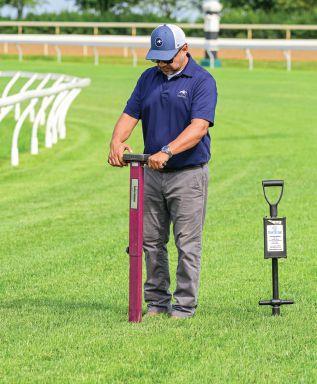
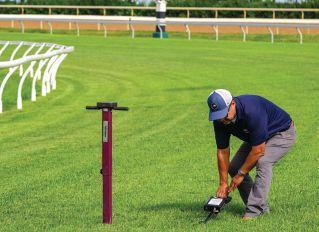

art edge: the “pre-germ.” Despite sounding like the protagonist of a Steven Spielberg movie, the pre-germ is water-soaked seed that has already begun to germinate. “We combine this with our divot mix, and when you tamp them in, the seed is already growing,” explained Laureano. “It’s alive, so it reattaches quicker.”
Such advancements have come through ongoing relationships with specialists in agricultural science. Among them: Michigan State University (whose experts introduced pre-germing) and the University of Kentucky’s plant pathology lab, which screens grass samples for diseases.The crew also relies on a few ultra-techy tools to maintain the integrity of the course. A “going stick” measures frmness and determines daily track conditions, while the hand-held time-domain refectometry probe measures moisture content to set the irrigation system accordingly. “Art and technology,” reiterates Laureano wistfully. “Before, it was just pretty.”
From top, Alfredo Laureano surveys the course and tests its frmness with special equipment. Track maintenance workers tamp down divots.
From top, Laureano surveys the course and tests its with Track maintenance workers tamp down divots.
said with a laugh. “But when the meet comes, we put our best guys on so that the racing lanes are completely straight.”
To ensure the course’s uniformity, Keeneland developed innovative turf nurseries: long rolls of sod grown under identical conditions that are available for cutting and pasting over damaged areas. “When I started working here, they brought turf from somewhere else and you could see the patches,” said Laureano. “Now, it looks like carpet.”
Even Keeneland’s method of replacing divots — loose clumps cut out of the turf by a horse’s hooves — has a state-of-the
With a continued eye on safety, in 2016 Keeneland replaced the course’s inside rail with a Mawsafe rail, a lightweight system designed to spring and bend like the ropes of a boxing ring.The addition proved its worth two years later when disaster was averted during the fall running of the Pin OakValleyView.
Turning for home, two fllies were head to head on the lead when the George Weaver-trained Daddy Is a Legend spooked and ducked through the rail.The rail collapsed on impact, allowing jockey Manny Franco to stay seated and the flly to return to her barn mostly unscathed.
(“It’s why we do what we do,” noted then-Keeneland President BillThomason. “Seeing the rail perform as it was intended … was extremely rewarding.”)The portable rail also allows running lanes to be repositioned from zero to 10, 20, and 30 feet from the inside to reduce wear and tear. “This has let us increase the number of turf races during each meet,” noted Gatewood Bell, Keeneland’s vice president of racing.


classic, delivering the crackling

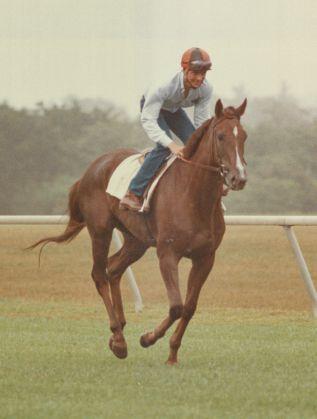
One of the game’s most legendary turf specialists, Wise Dan landed dual victories in the Shadwell Turf Mile as well as consecutive runnings of the Maker’s Mark Mile in 2013 and 2014. “Back then the main track was still synthetic and was open all year,” LoPresti added, “and we were able to breeze on the bigger track. It was a big plus for Wise Dan. I could have him dead ft and ready to run and win in a grade 1 on the grass frst time out.”
Most trainers would agree that


conditioning a turf horse is not signifcantly diferent than a dirt horse, but somedonotethegrassofersadvantages. “A lot of horses struggle with dirt; very few struggle with turf,” said trainer Mark Casse, whose two-time champion Tepin made headlines in 2015 winning the First Lady as well as the Breeders’ Cup Mile when the championships made their debut at Keeneland that year. (Te Breeders’ Cup will return to Keeneland in 2026.) And this year, Casse added Appalachian

winner Nitrogen to his stable of Keeneland turf stars. “Tey may not all excel. But I’ve always said horses are naturally bred to be turf horses — over hundreds of years,” he said. “If I could, I would run every horse their frst start on grass. Many horses, when you run on dirt, they don’t take the kickback. So I’ll try to run 2-year-olds or frsttime starters on the grass because it’s a good experience.”
In 2020 Casse chose the Keeneland turf course to amplify the record of his











A. OFF TO THE RACES TOTE
Laminated canvas tote bag with embroidered text
Dimensions: 14” x 11” x 4.5”
$ 25
E. KEENELAND BAR MAT
Elevate your bar with our new Keeneland Bar Mat
Dimensions: 23.5” x 4”
$25














B. ’47 BRAND KEENELAND SHADOW DOWN TEE 100% Cotton $35 F & G. ’47 BRAND WOMEN’S CLEAN UP CAP $ 35 C. ’47 BRAND OFFSIDE FOUNDATION CREWNECK SWEATSHIRT $100 D. RACE HORSE PLUSH $39
H. KEENELAND COCKTAIL STIRRERS SET OF 6 Featuring 6 unique Keeneland exclusive designs, these cocktail stirrers are perfect for mixing, stirring & garnashing your favorite cocktails. Material: Acrylic | 7.5” H For use in hot and cold drinks | Hand wash only $18


Trainer Charlie LoPresti (top) guided the career of Keeneland fan favorite Wise Dan, whose triumphs included the 2014 Maker’s Mark Mile (above) and Shadwell Turf Mile (below).

Preakness Stakes victor War of Will. Te dark bay colt’s win in the 2020 Maker’s Mark Mile made him a racehorse rarity: a grade 1 winner on dirt and turf. “If you look at War of Will’s pedigree, he wasn’t supposed to win on the dirt,” Casse said. “So he was unique. We wanted to make him a dual grade 1 winner, and luckily we won.”
Te addition of the turf course has been, if nothing else, good business, ofering added excitement for spectators. “Turf races can be really fun for fans,” said Bell. “Tey’re known for having tight fnishes you can watch over and over.”
And there has been no shortage of turf stars to cheer for, many of whom followed Keeneland wins with Breeders’ Cup victories, such as 2014 First Lady winner Dayatthespa (Breeders’ Cup Filly and Mare Turf) and 2022 Woodford winner Golden Pal (Breeders’ Cup Turf Sprint). Te turf course has also inspired exclusive handicapping options, such as the popular Turf Pick 3, launched during the 2021 fall meet. For a $3 minimum wager (and a player-friendly 15% takeout), bettors can, with a little luck, make a bundle on the fnal three turf races of the day.
“With the quality of our turf races, it was clear that a wager tying together our fnal three turf races each race day would be a natural ft,” said Keeneland Director of Wagering Development Jim Goodman. Te Turf Pick 3 was the frst of its kind, he noted, adding that many tracks, including Gulfstream, Santa Anita, and Churchill Downs, have now implemented the option.
Back on the course, looking out on the long stretch of green, Laureano
says he walks the turf almost daily checking for faws, but really, it takes a village to achieve precision. “Everybody here pitches in,” he said. “People don’t know what we do. Tis is where we live most of the day.” And Keeneland’s methods, he adds, are now being shared with other tracks and training centers to help them achieve similar results. But the most important bit of knowledge, he adds, may just be to look and listen. “Te turf,” said Laureano, “it practically talks to you. It tells you what it needs.” KM

Above, champion Tepin won the 2015 First Lady Stakes en route to winning the Breeders’ Cup Mile at Keeneland. Below, War of Will won the 2020 Maker’s Mark Mile, having won the previous year’s Preakness.
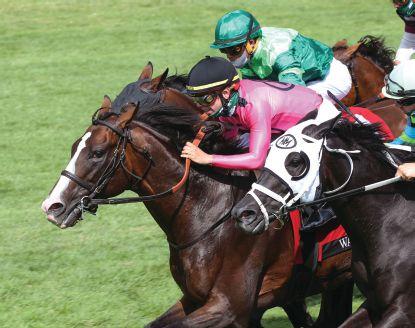
1985 The Keeneland turf course debuts during the October meet. Fourteen races are run over the nascent course in the 16-day meet, including the Queen Elizabeth II Challenge Cup, which is run on the grass for the frst time.The queen had attended the race’s inaugural running in 1984 when it was contested on the dirt. “After the race, she turned to me and said, it would be nice if you ran the race in my name on your new turf course,” remembered former Keeneland President Bill Greely. “I said, ‘Ma’am, that’s what we’re going to do.’ ”
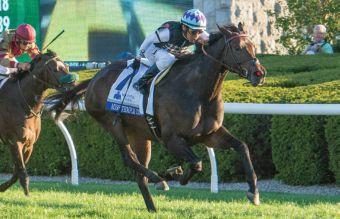
2014 TheTurf Mile becomes Keeneland’s frst seven-fgure race.The winner is two-time Horse of theYearWise Dan in the fnal race of his career. In 2024 the purse of the race (now sponsored by Coolmore) increased to $1.25 million.
2016 MissTemple City (at left) becomes the frst female to capture both the Maker’s Mark Mile in the spring and the Turf Mile in the fall.
2024 Trainer Chad Brown captures a record eighth running of the First Lady with Gina Romantica, who also won the race in 2023.
2025 Carl Spackler also trained by Brown, joinsWise Dan and Perfect Soul as the only horses to win theTurf Mile in the fall and return the following spring to capture the Maker’s Mark Mile.

Turf races often provide close fnishes, making those contests exciting for fans and handicappers.




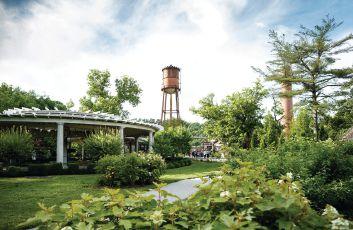






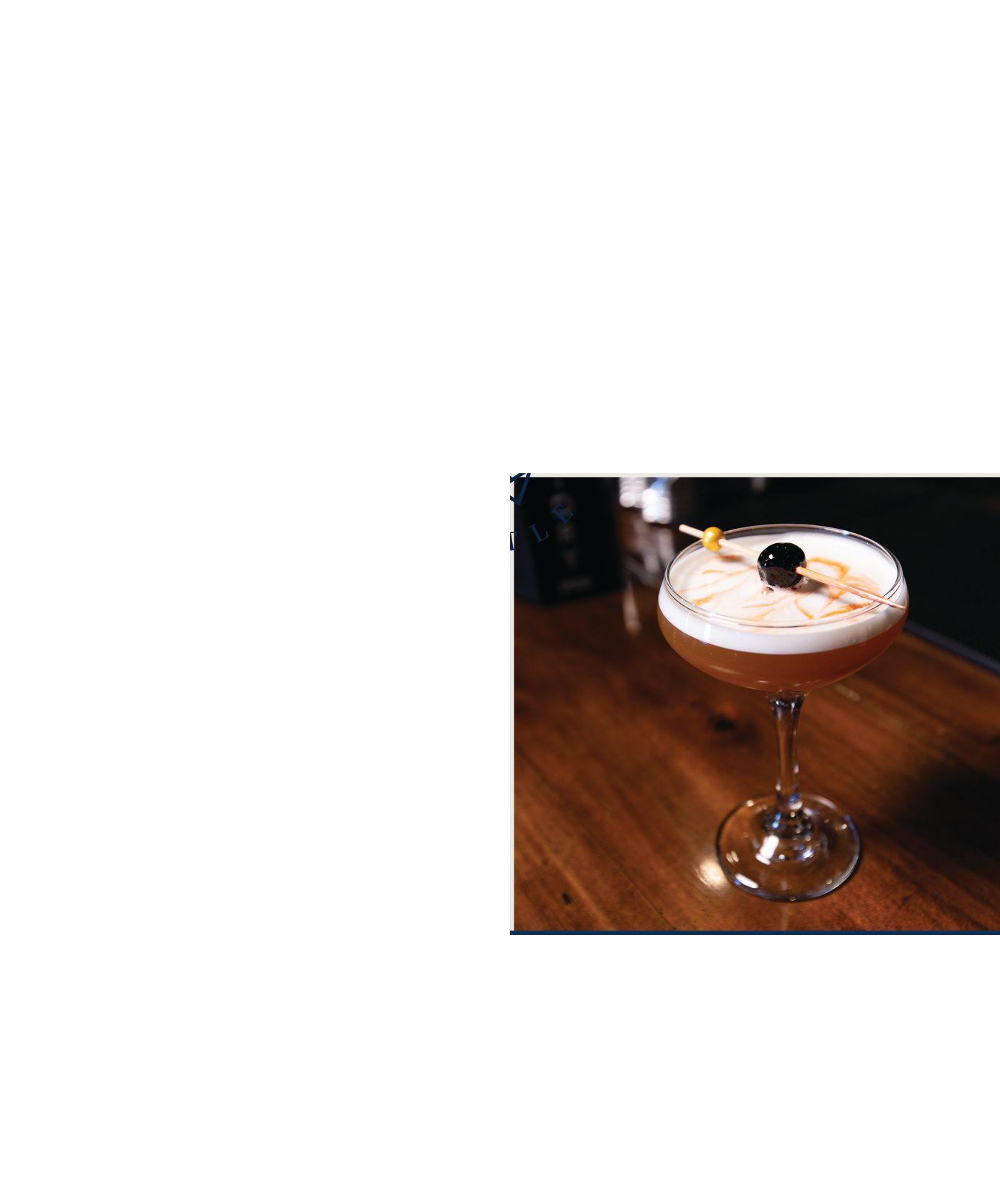





The Versailles Downtown Market and Entertainment District is among the new initiatives that build on
the city’s longtime charms
By Robin Roenker
Photos Pat
Renovation of the Amsden building helped energize downtown Versailles. Inset, stores such as the high-end fabric designer Ferrick Mason call Main Street home.
VVERSAILLES IS A COMMUNITY with undeniable appeal. Te city’s picturesque, historic downtown has even drawn the attention of movie crews hoping to capture its small-town charms — including, notably, for flms like “Te Stand In,” a 2020 release starring Drew Barrymore, and “Prescription for Love,” a romantic comedy flmed in 2022.
Tose who live in Versailles — population approximately 10,500 — have always known it to be a special place. But recent revitalization projects, including new area business launches, city park upgrades, the 2024 unveiling of a new $3.6 million Versailles Downtown Market and Entertainment District, and the opening of the new $75 million Woodford County High School building in January 2025, have added new energy and excitement to the city.
On a recent Saturday morning, shoppers eagerly browsed a selection of bestsellers at the newly opened downtown bookshop Tiny Bird Books, located on South Main. A block behind the shop, musicians serenaded the crowd at a pop-up market at Te District, shorthand for the city’s new downtown farmers market and entertainment complex. Just up the street, patrons lined up to grab cofee and enjoy time together at Te Amsden, a cofee shop with an embedded kid-friendly play café.

a recent Saturday,
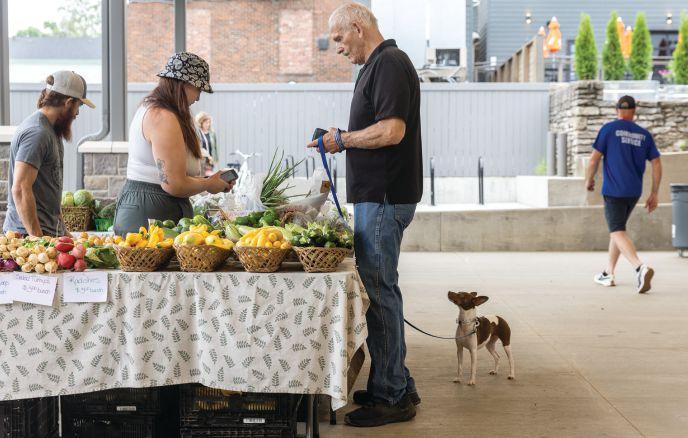
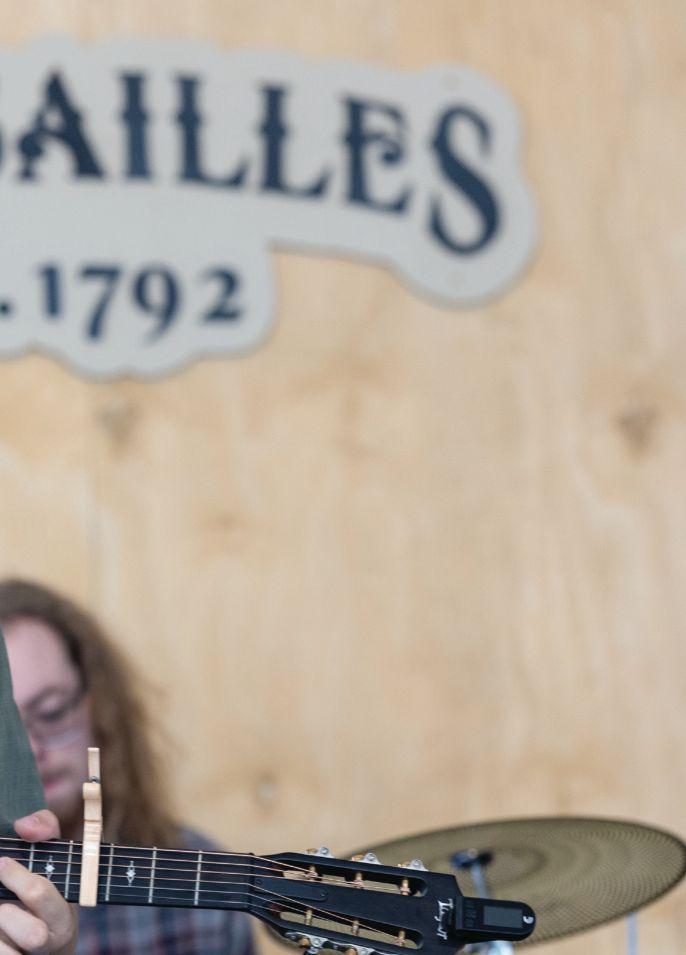

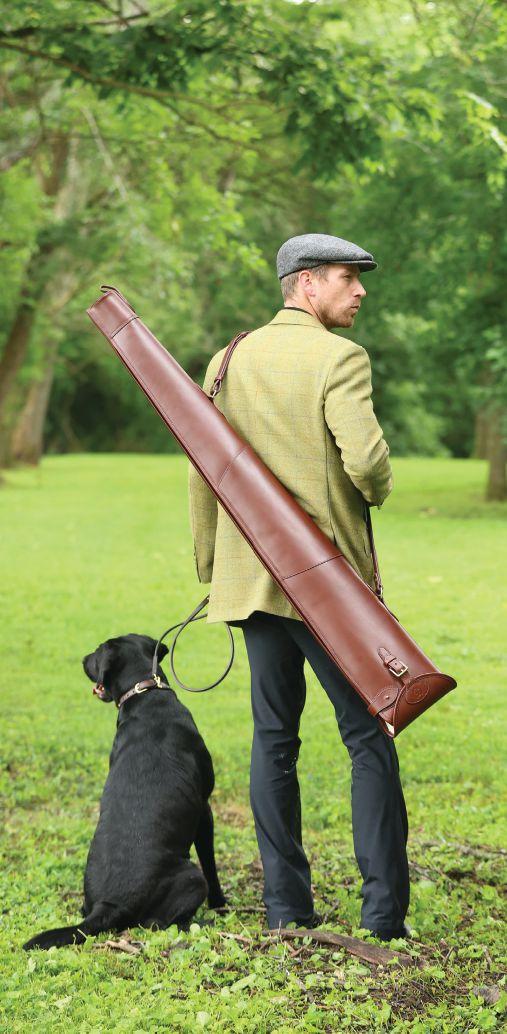
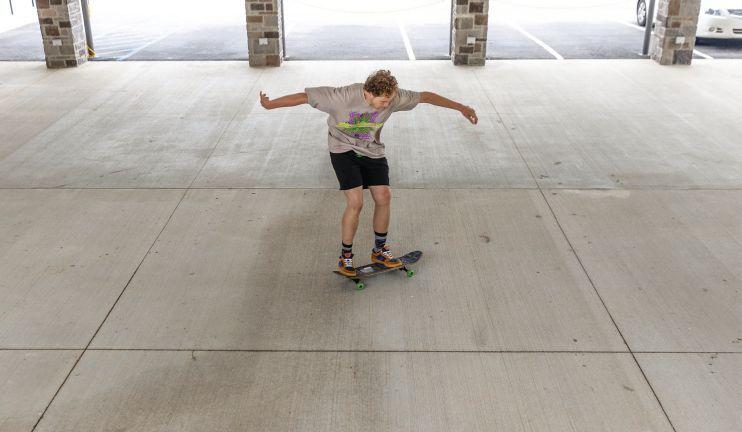
All that activity and foot trafc represent the net result of recent, dedicated investment by city and county leadership, as well as private investors and area business entrepreneurs, to rally behind a unifying message: Versailles is open and ready for business.
“Versailles is known for that small-town experience and small-town charm, so that’s what we are revamping, revitalizing, and growing,” said Emily Downey, executive director of Visit Woodford, the Woodford County Tourism Commission. “It’s just a really exciting time for everybody.”
Woodford County already boasted opportunities for unique dining experiences at longtime favorites such as the celebrated Holly Hill Inn, the much-photographed Te Kentucky Castle, and Te Glitz Restaurant at Irish Acres. Te Italian restaurant Vallozzi enjoyed a popular run, and its downtown location just of Main Street is slated for a new concept.
With the planned August 2025 opening of Te Aldenburg, a new, 29-room boutique hotel, and its accompanying restaurant, Silk’s Steakhouse, set to open shortly aferward, downtown Versailles is poised to establish itself further as a marquee visitor destination in its own right.
Te Aldenburg Hotel development — on North Main Street in the former Woodford Bank and Trust Company building, an architectural pillar of the community since 1852 — is a passion project of husband-and-wife team Alex and Emily Riddle, Versailles residents who also operate Te Amsden and the adjacent Gathered Play + Create play café, part of Emily’s Gathered Living brand.
“Every team member [at the new hotel] will serve as a steward of Woodford County tourism,” Alex Riddle said. “Bourbon tourism, Keeneland, and horse industry tourism are a huge draw for the area, and we’re perfectly positioned to serve those visitors. Our staf will be able to create custom experiences where we can recommend an awesome horse farm tour or point people to a great area restaurant they might not otherwise have heard about.”




Tough Alex Riddle grew up on a horse farm in Woodford County, he spent his youth “attending school and doing most everything” in Lexington, he said, adding, “I had spent my whole life hopping on the bypass and driving past downtown.”
When he and Emily, a Lexington native, decided to purchase their downtown Versailles home, they felt as though they were discovering the city for the frst time. Right away, the couple fell
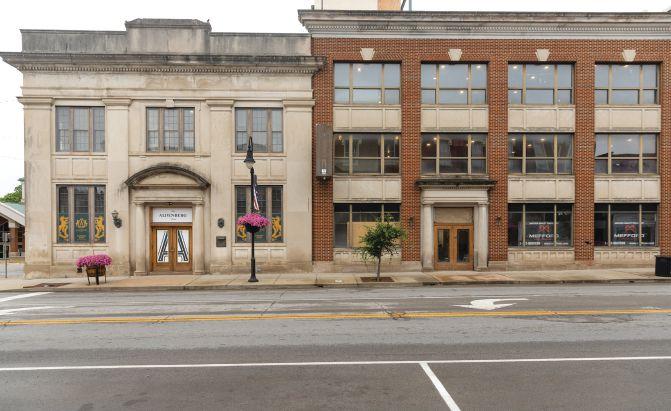
in love with the quaintness and walkability of the downtown corridor. “It really is the ideal location,” Emily Riddle said. But at the time, “there wasn’t a whole lot going on downtown,” said Alex Riddle, who works full time in the equine pharmaceutical industry and also serves on the board of the Woodford County Economic Development Authority. “I think there were two retail businesses and then a bunch of boarded-up buildings and lawyers ofces and real estate ofces — things that didn’t really draw people in.”

Te Riddles set out to change that by purchasing the Amsden building and opening their cofee shop in 2017. Since then, a host of other downtown businesses have followed, including high-end fabric producer Ferrick Mason, Kristen’s Kreations bakery, My Darling & Co. gif shop, Holly Hill & Co. cooking studio, and others.
Not far from the now bustling downtown district, the city’s Parks and Recreation Department recently completed a multimillion-dollar revitalization of Big Spring Park, a roughly 30-acre area nestled behind the courthouse and library on Park Street. A new Americans with Disabilities Act-compliant walkway now connects Te District and the park, easing accessibility.


“
WE REALLY JUST WANT TO MAKE THE DOWNTOWN AREA FEEL OPEN AND ACCESSIBLE TO EVERBODY, NO MATTER THEIR AGE.”
—MAYOR LAURA DAKE
Te park upgrades — including clearing out invasive plant overgrowth in the back, building a new front plaza with signage detailing the history of the area, adding a walking trail along the creek, and installing a new, inclusive playground featuring a rubber surface and sensory elements — have completely transformed the feel of the space, said Rich Pictor, director of the Versailles Woodford County Parks and Recreation Department.
“Te uptick in usage since the late May ribbon cutting has been tremendous,” Pictor added. “I have people coming up telling me they hadn’t used that park in a decade, and now they’ve been there with their grandkids six straight days.”
Te Riddles and their development partners also have plans to transform the former, empty Kroger building in Lexington Road Plaza into a family entertainment complex, with the frst phase set to open this fall. Planned attractions include tailgating games, laser tag, arcade games, miniature golf, and more.
Along with the new store launches and park refurbishment, a robust, city-sponsored calendar of activities has further revitalized Versailles’ already strong sense of community. Most every week, the downtown corridor hosts at least one special event, from vendor markets and live concerts in Te District to late-night shopping events, teen-specifc socials, and family-friendly holiday parties.
“We’re just trying to use the [new District] space as best as we can,” said Versailles Mayor Laura Dake, who assumed city leadership in November 2024, following eight years on the city council. “We really just want to make the downtown area feel open and accessible to everybody, no matter their age.
“Tere’s a real spirit of helping in this town,” Dake added. “Versailles is still small enough where there is a strong sense of connection; everyone gets to know each other. But the county is growing, and the city is growing. We’ve been laying the groundwork for these changes for many years, and it’s important we continue to manage those changes well. It’s really an exciting time.”

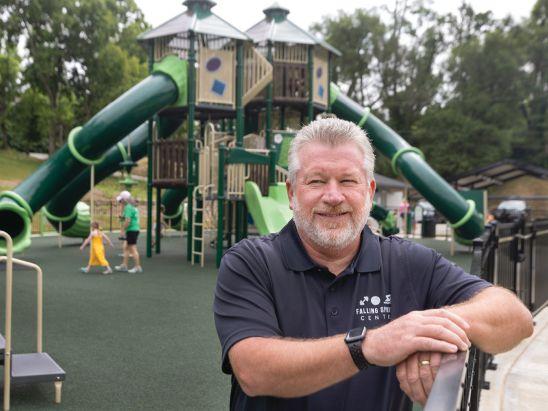
Visitors drawn to Kentucky’s Toroughbred industry have always found Woodford County to be a must-stop destination, thanks to the county’s abundance of premier farms, including Lane’s End, Tree Chimneys, WinStar, Coolmore at Ashford Stud, and others. Horse Country, a leading horse farm tour operator, even ofers specifc, “Uniquely Woodford” itinerary plans.
Te county has recently laid equal claim as a must-stop bourbon destination, snagging the trademark rights earlier this year to the title of “Te Birthplace of Bourbon” — a name that pays homage to the pioneering work of early area distillers Elijah and Oscar Pepper, Dr. James Crow, and Col. E.H. Taylor.


Now home to three revered distilleries — Woodford Reserve, Castle & Key, and Bluegrass Distillers — Woodford County will soon add another: Saga Spirits Group has announced plans for a new $92.5 million distillery, visitor center, tasting room, and event center on a 150-acre industrial site roughly four miles from Te Kentucky Castle.
“I think it’s important that Versailles’ economic growth comes from tourism and hospitality and agriculture-related industries,” Alex Riddle said. “We’re really good at raising the best horses in the country, and we’re really good at making the best bourbon in the country. We also love to host guests, and we’re good at that as well. So, [going forward] we plan to continue focusing on those












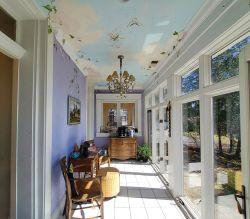



Highbramble Park, a new Standardbred training and racing track, recently held its inaugural meet.
core things that make Woodford County so special.”
Hoping to expand the county’s horse expertise beyond just Toroughbreds, Alex Riddle and his development partners recently opened Highbramble Park, a new, state-of-the-art Standardbred training and racing center along Paynes Mill Road. Te facility is set to include an equine wellness center, year-round training tracks, and modern, spacious barns that will eventually accommodate 640 horses.
On July 5, Highbramble hosted its frst harness racing event — bringing harness racing back to Woodford County for the frst time in 50 years — as part of the Woodford County Fair, with future racing events planned.
Between the area’s many new attractions and its beloved, iconic destinations, guests have no shortage of things to explore in Versailles and Woodford County.
“When guests stay with us, we try to give them itineraries that highlight all the unique, local things to experience,” said Robin Featheringill, who has owned and operated Versailles’ historic Rose Hill Inn B&B with her daughter, Rachel Maxam, since 2022.
“Versailles is sort of like a storybook town,” said Featheringill, who is originally from Lexington. “It feels like a Hallmark movie a lot of the time, with the many festivals and strong sense of community support. Tere’s such a good vibe here, so it’s very easy to fall in love with our community.” KM


As much as things change, Versailles continues to cherish its historic homes (top and above), old-time businesses such as the Nostalgia Station Toy and Train Museum (right), and its ties to the past such as murals depicting historical fgures (below).
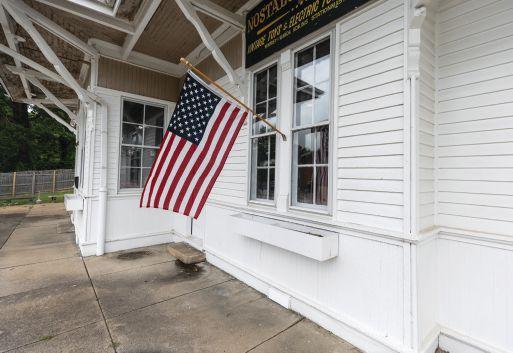











THE LEXINGTON CAMERA CLUB continues its founders’ quest to push the bounds of photography
By Maryjean Wall
DDON’T SPEND YOUR TIME looking for new things to photograph. Look for new ways of seeing. Tat was the philosophy guiding hobbyists who participated in the historic Lexington Camera Club. For nearly four decades, from 1936 to 1973, this group of dedicated amateurs pushed the boundaries of conventional photography, blending undertones of abstraction, surrealism, and narrative in producing work more typically seen in galleries in Los Angeles or New York. While most camera clubs in North America were documenting scenes with pretty pictures, theLexingtonCameraClubwasproducing work that invited interpretation and raw introspection. F. Van Deren Coke, Robert C. May, and Ralph Eugene Meatyard, the club’s most talented members, notably acquired national recognition and brought attention to Lexington as an incubator of fne arts.
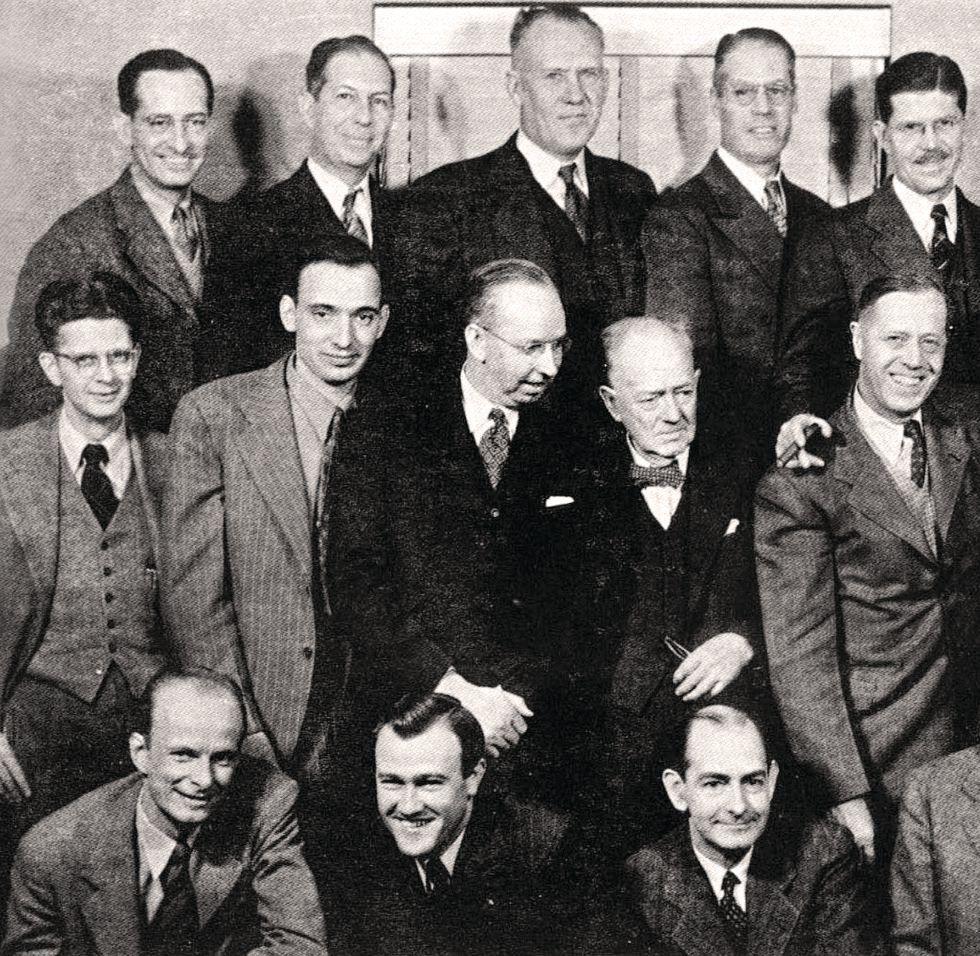
Te Lexington Camera Club was founded in the fall of 1936 by University of Kentucky professor Brooks Hamilton and Dr. Louis Mulligan and initially met at the Funkhouser Building on the university campus. From the beginning, the club was intended to serve as something more than a group of photography enthusiasts. Over time it became a crucible for innovation, a place where boundaries were redefned and artistic rules were questioned. Members honed their craf not only through technical mastery of their equipment but also by embracing a collaborative ethos that encouraged deep exploration of photography’s potential as “fne art.” By 1941 the club had expanded from
a handful of shutterbugs to more than 100 mostly amateur photographers, including physicians, attorneys, businessmen, an optician, and no less than the authority on Bluegrass history, J. Winston Coleman. In keeping with the times, most members were men, although the names of a few women have been found on membership rolls. Te club brought in speakers, most notably Ansel Adams, landscape photographer of international renown. Adams spoke to the club in 1937 at the behest of member Ben Hart, a recently retired chemist in Alaska’s fshing industry. Hart, who brought his chemistry background to his photography and darkroom technique, had met Adams




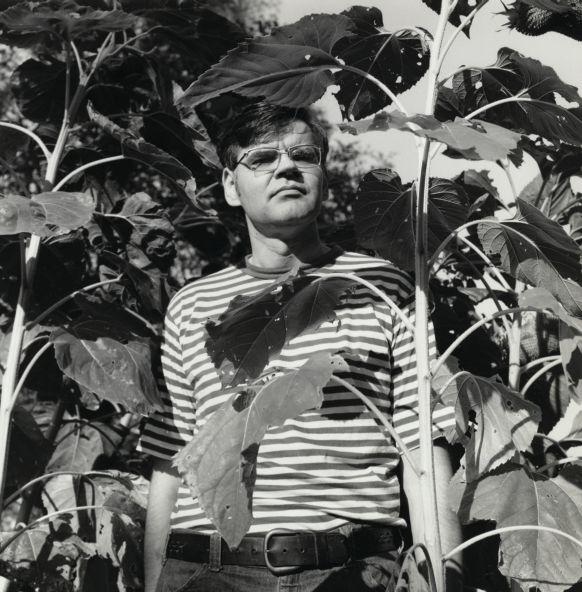
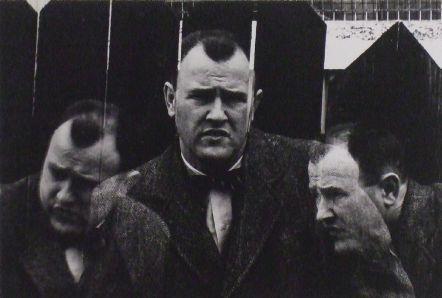
while both were photographing in the West.
Adams’ talk had a profound efect on a membership already willing to experiment with flm and their home darkroom equipment. He gave a detailed explanation of the “zone system” he used in calculating exposure and development of flm. (Quick post-shooting production was nowhere in sight in 1937.) Te club member most familiar with Adams’ method was Van Deren Coke, whose family owned Van Deren Hardware on West Main Street. He began teaching the zone system to others in the club who met at his home.
With Hart also instructing members in small groups in his home, the club began to embrace a mentoring practice that characterized the remainder of its existence. In 1957, Meatyard joined the club and, following guidance from Coke, likewise assumed a mentoring role, ofering classes in his home. An optician, Meatyard had joined the popular Tinder-Krauss-Tinder optical frm on North Upper Street that also had a space at the back of the shop where it sold photographic supplies, including the chemicals and printing paper. Meatyard learned valuable lessons from Coke that undoubtedly infuenced his raw, thinking person’s photographic style, which he encouraged other members to likewise explore.
And explore they did. A 1989 article by Robert C. May in Te Kentucky Review took a look at how the Lexington Camera Club’s members sourced ideas for their photography: Brooks Hamilton made enlargements of minute pieces of nature including fowers. Walter Leet Jr. photographed in the woods. Rodney Boyce photographed the interiors of cofeehouses.
Dr. Zygmunt S. “Ziggy” Gierlach, a radiologist who had an ofce at Doctors Park on South Limestone Street, photographed pieces of nature using his X-ray equipment, creating works from double exposures and sliding the margins of his X-ray flters to throw his subjects out of focus.
Every photographer followed his own area of interest. Te only common bond was the group’s collective creativity in stepping beyond the conventional boundaries of their art.
A 1976 essay by Joan Murry in Art Week commented that May’s works “heighten all of our senses so that we may be capable of experiencing a happening that in reality we cannot experience.” Tat one remark perfectly described the path that every member of the club aspired to walk down. Te results surprised and frequently stunned Lexington audiences at the numerous shows the club mounted.
Ten, in 1973, the Lexington Camera Club disappeared from the arts scene. It had lost its leadership and therefore its reason for existing. Meatyard had died of cancer in 1972. Coke had lef town and established himself in larger markets — at the San Francisco Museum of Modern Art, the University of New Mexico, and the George Eastman Museum in Rochester, New York. Moreover, a close friend of the club, Tomas Merton, that peripatetic Trappist monk who also was a photographer, had died abroad in 1968. As years passed, the Lexington Camera Club slipped from the Bluegrass’ collective memory. Te fantastic work of its members lay in repose in museum collections but hardly anyone in the general population could tell you that a nationally recognized group of photographers had existed in this region.


Tat all changed in 2014. James Birchfeld, retired special collections curator of rare books at the University of Kentucky, gave a talk at the university about the old club as part of the opening-day program for a retrospective of the club. Tom Eblen, former Lexington Herald Leader managing editor and, later, columnist and photographer, interviewed Birchfeld and wrote about the event. Eblen approached Guy Mendes, a retired documentary producer for Kentucky Educational Television who also attended the talk, with an inspired idea. “Can we restart the club?” Eblen asked. “I don’t see why not,” Mendes said. Tey spoke with Mick Jefries, a photographer, graphic artist, and radio show host who was quick to agree.
Mendes was the key to reviving the old club. He had belonged to the original camera club in his youth and been mentored by Meatyard. A native of New Orleans, Mendes cametoLexingtonin1966toattendtheUniversity of Kentucky, hoping to learn journalism. Along the way he switched his major to literature while pursuing his emerging skills in photography. He has ofen said that renowned Kentucky author Wendell
Berry infuenced his switch in majors and subsequent writing, while Meatyard had the greatest infuence on his photography. Mendes was the perfect bridge between the originalclubanditsreincarnation,asheheld all the institutional knowledge. And so, the new club held its inaugural meeting around Mendes’ dining room table. Te handful of people present agreed to go forward.
Te club now includes about 30 active members, meets on the frst Tursday of every month, and aspires to fnd its inspiration in the old club’s ethos of pushing the boundaries of creativity. Te club usually meets at the University of Kentucky’s contemporary School of Art and Visual Studies building on Bolivar Street but also occasionally at the historic Loudoun House in Castlewood Park, where it has hosted several shows including the Louisville Photo Biennial. Te biennial, begun in 1999, has grown to include at least 60 galleries across Louisville and some years ago invited the Lexington Camera Club to join with a Lexington satellite show. Te club will participate this September and October for the fourth time in the biennial and recently mounted a small show at the Lexington Public Library’s Eastside Branch.
Most members are already well
acquainted with photography, although a beginner would not be turned away. Unlike the practice of most camera clubs, this group does not hand out assignments to be reviewed at the next meeting. Every photographer in this club, as in the original, follows their own muse with nearly everyone having diferent areas of interest.
“When you get to the Lexington Camera Club, you’re to the point where a lot of photographers are comfortable with breaking the rules,” said Jefries.
Unlike the former club, the new club operates without a president, ofcers, elections, or dues. Mendes has served as de facto president from the beginning because he’s been willing to take the responsibility. Prior to any photo show, others step up to volunteer for tasks including the designing of the show catalog or organizing refreshments. Somehow, this organized disorganization works.
Mendes has brought a lot to the new club that goes back to those times when Meatyard oversaw Mendes’ journey into becoming a photographer. Tis is why the philosophy Mendes shares sounds a lot like the ethos that drove the original group. “Tere’s the craf of











Bet from your phone with Keeneland Select. Earn a special $100 back after you wager $200 on Keeneland racing. Wager a total of $300 in the frst 30 days, and earn another $100 back with the standard sign-up bonus! Use code FALL2025 at KeenelandSelect.com or on the app.
*Other exclusions apply. Visit keenelandselect.com for details.
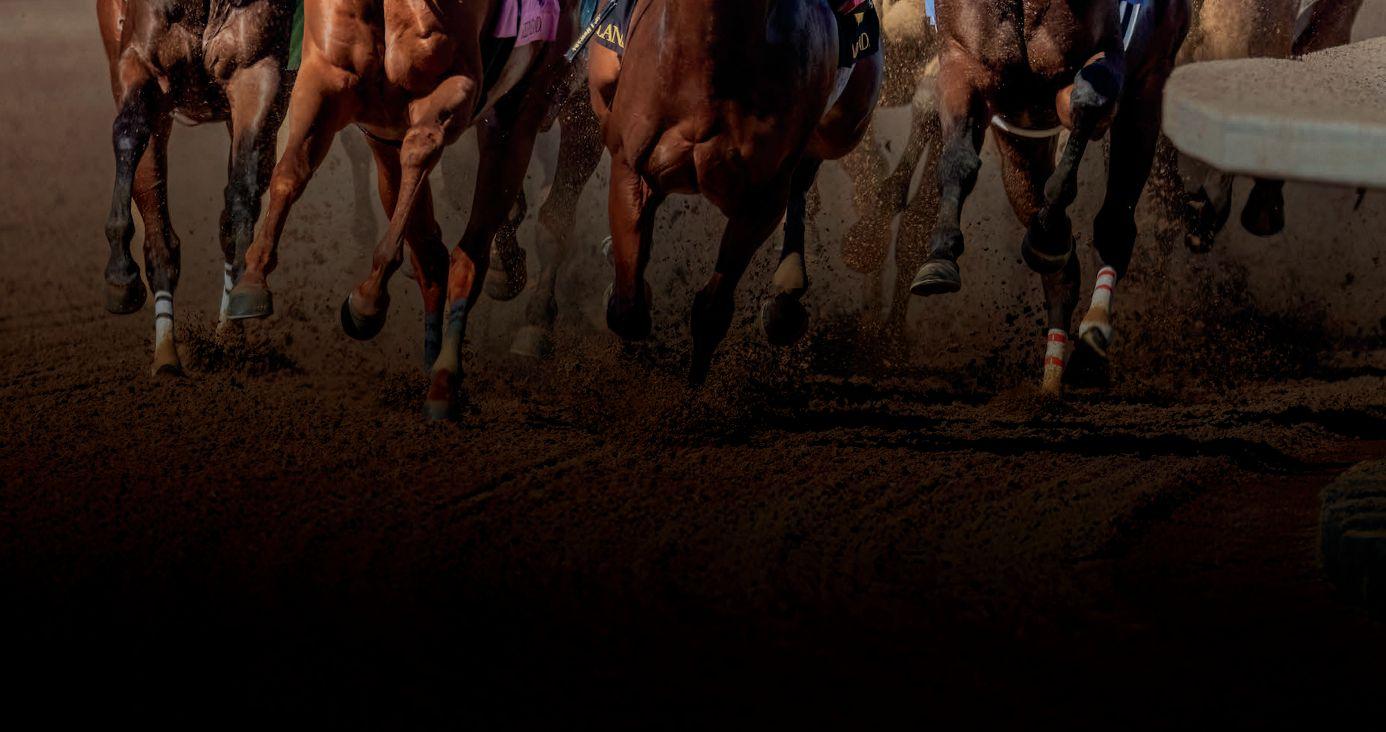


photography,” Mendes said, “like making a [sharply focused] picture, and it’s boring as hell. Art photographs have something extra to them, a je ne sais quoi that you’ve never seen before. Tey’re something you ain’t never seen. Tat’s how I always look at them.”
Eblen agreed and called to mind examples of the unconventional photos the frst group produced. “Van Deren Coke did a lot of what we now call ‘street photography,’ doing a lot of pictures along

Georgetown Road,” he said. “Louis Mulligan, who grew up at what is now Maxwell Place on the UK campus, had been photographing for decades. … In a picture he took in 1899, he dressed up a couple of people to look like European peasants and had them pose across Rose Street from his house looking east across what were then open felds.”
Women have brought a wider perspective and infuence to the modern club. One example is Dobree Adams, an acclaimed fber artist and photographer whose images explore how light afects landscape. Her husband, poet Jonathan Greene, published some of Meatyard’s work through his Gnomon Press.
Connections with the old group are present not only in Greene’s publishing of Meatyard’s work, but in memories of those like Eblen who, while too young to remember the old club, remembers seeing some of the work. Eblen was about 9 when he found himself at Dr. Ziggy Gierlach’s radiology ofce. Gierlach doubled the use of his waiting room as a gallery for club members, and Eblen can remember “a lot of weird pictures in there.”
Meatyard’s ofeat scenes of people wearing masks would have been among the photos. So would have Gierlach’s work with his X-ray machine.

Mendes, too, can recall visiting the gallery, in his case not for a radiology exam but specifcally to study the work of Meatyard and others. Mendes recalls looking at Meatyard’s black-and-white images, small and “very dark and curious and unlike anything I’d seen before.” He also remembers his frst encounter with Meatyard. Mendes was reporting for the student newspaper, the Kentucky Kernel, on a talk that Wendell Berry gave in opposition to the Vietnam War. Mendes approached Berry and asked if he could interview him later for a longer article, and Berry invited him to his farm. “When I got there, people were standing in the road [possibly protesting against the war] and one was an unusual fellow wearing knickers and a woolen hat who had a camera with two lenses on it,” Mendes said. Te fellow in knickers turned out to be Meatyard. Mendes came under the spell of Meatyard’s work and soon he was traveling the back roads with Meatyard and May. “Tat’s how I got introduced to the Lexington Camera Club,” he said.


Te Tomas Merton connection cannot be overlooked in any history of the camera club, given Merton’s worldwide renown as an author and religious philosopher who
lived as a hermit on the grounds of the Abbey of Gethsemani near Bardstown. One day in 1967, Meatyard, writer Guy Davenport, and poet Jonathan Williams drove to Gethsemani to pay a visit to Merton, and following a long afernoon of conversation, friendships formed. Merton had an intense interest in photography and while he was unable to attend meetings in Lexington, he did remain in touch with some in the club, particularly Meatyard. Te two had talked about combining Merton’s words and Meatyard’s photography, although this did not materialize, as Merton died the following year. Merton’s photography was included in a retrospective on the club’s work at the Cincinnati Art Museum in 2016, titled, “Kentucky Renaissance: the Lexington Camera Club and Its Community, 1954-1974.”
Oneimportanttraditioncarried over from the old club is mentoring. In recent years the new club began advising student photographers through Community Inspired Lexington. Te club provided these students with space to show their work at the Louisville Biennial shows held in the Bluegrass, and made sure their work was printed and framed for them at the club’s expense. It also few in Washington Post photojournalist Jahi Chikwendiu, formerly of Lexington, to lead the students in a workshop. Te student group is not currently active but is expected to be revived, as it served as a great inspiration not only to the youth but to their families and neighbors in North Lexington.
No one can know if this efort planted seeds of emerging creativity in this inspired group of young people. But no one will be surprised if some continue with their interest in photography — perhaps picking up where the Lexington Camera Club has lef them, with its aesthetic of abandoning the ordinary to witness life unconventionally through the lens. KM


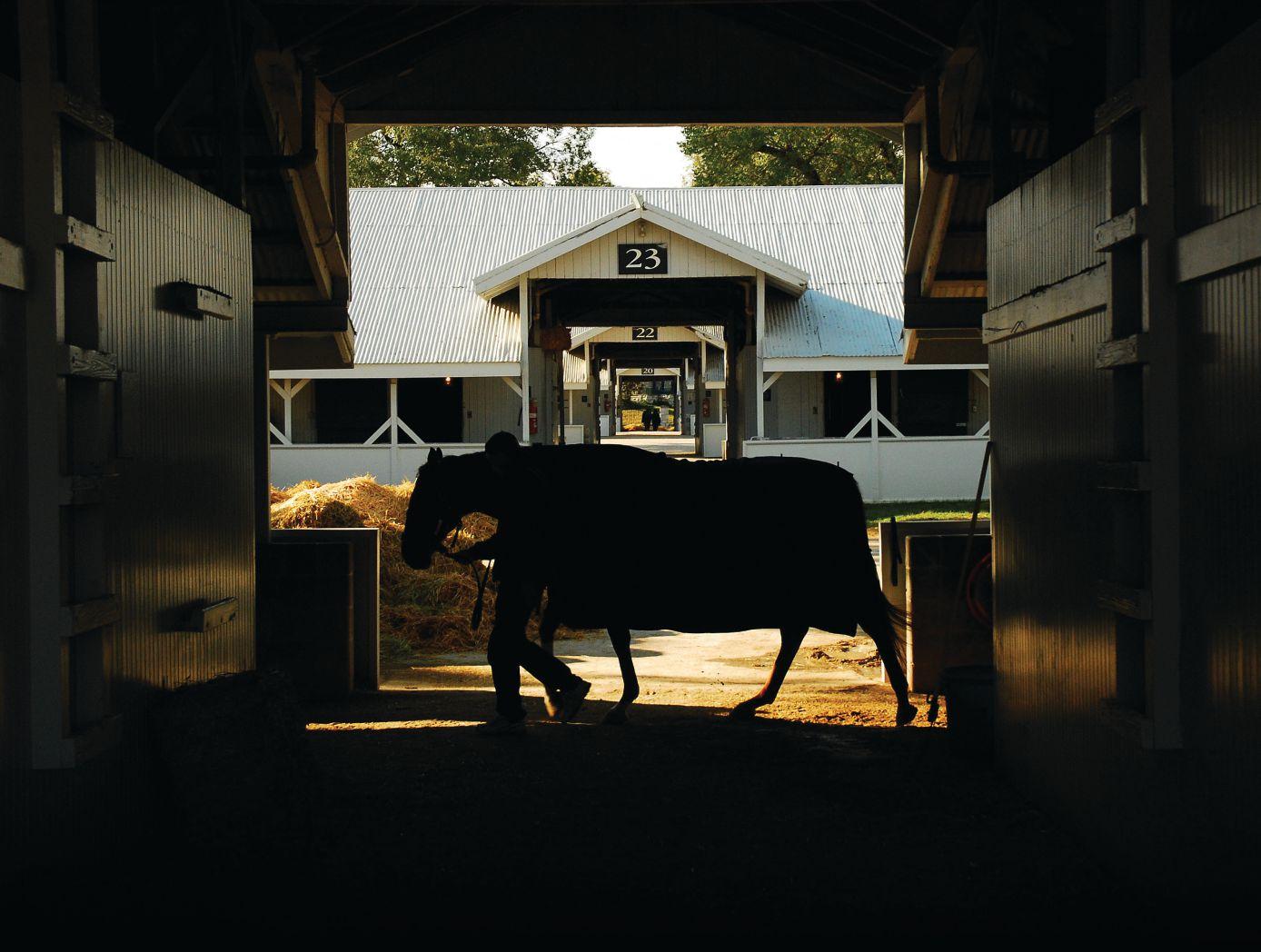

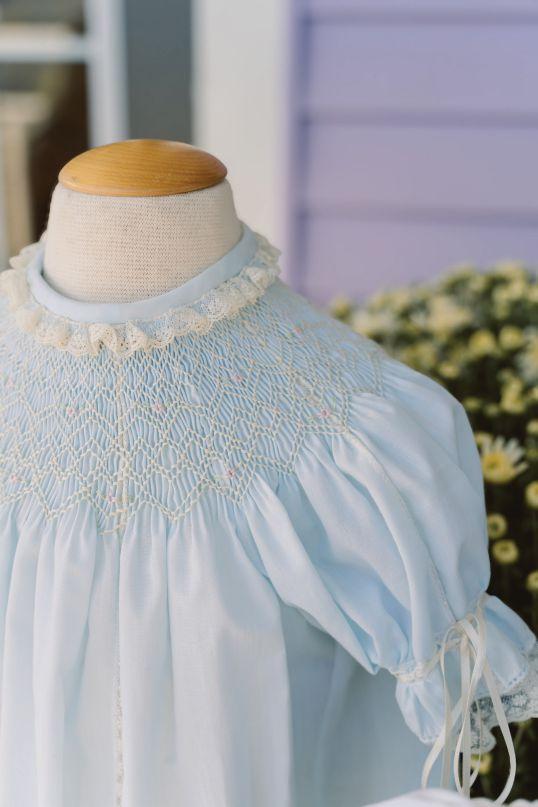

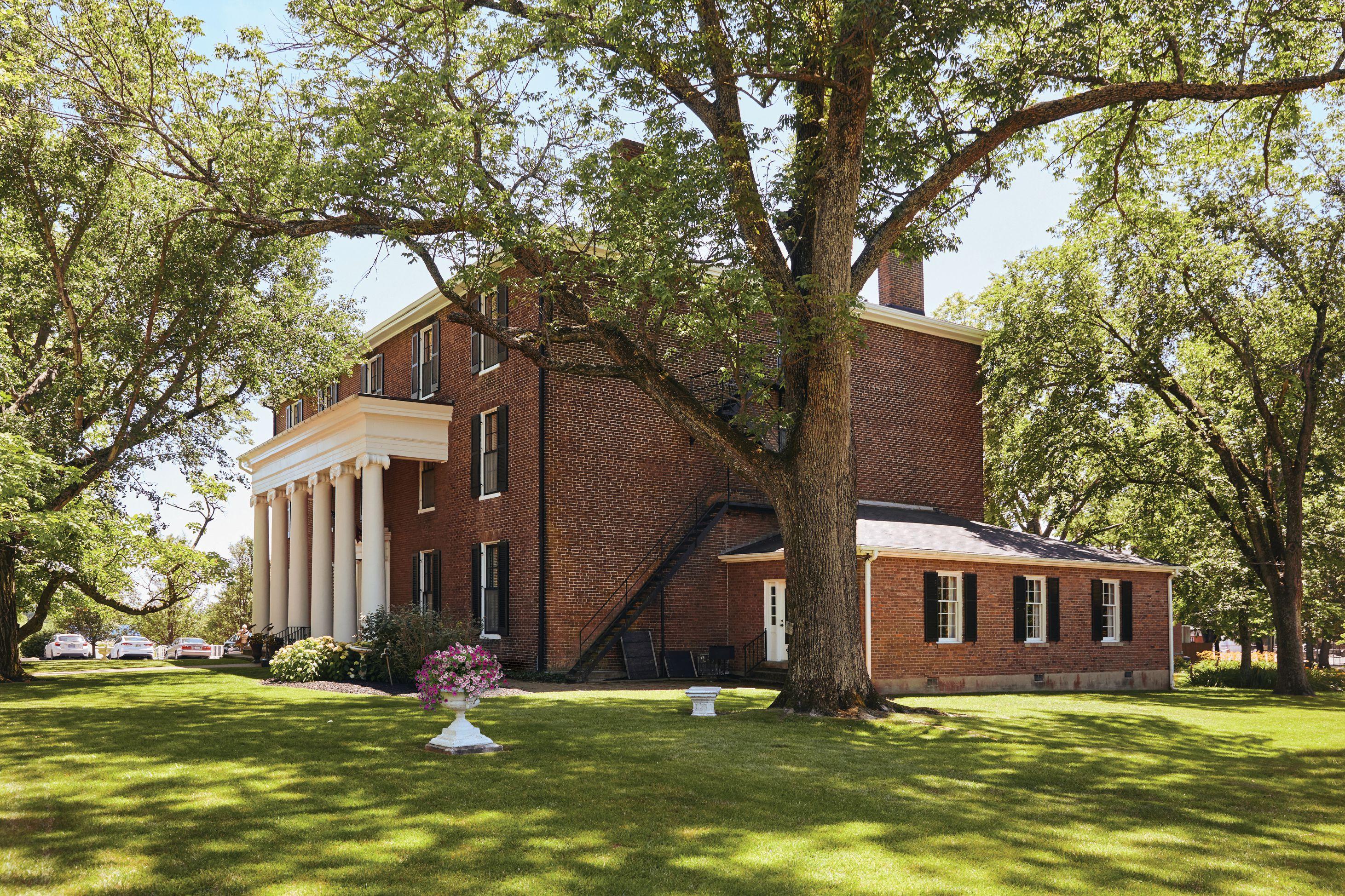
The Kentucky Historic Dining Guide features locally-owned restaurants housed in buildings listed on the National Register of Historic Places.
Here, history isn’t just something you read about —it’s something you can taste.
































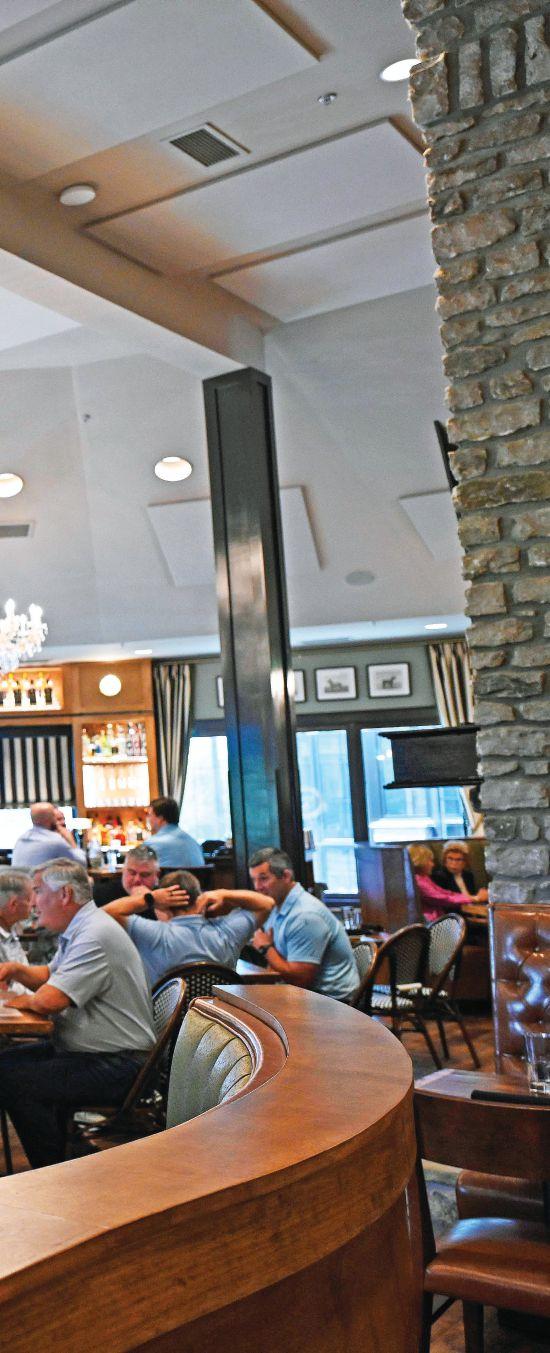
Carson’s takes its winning formula — good, well-priced food and lots of it — to a second location in Lexington

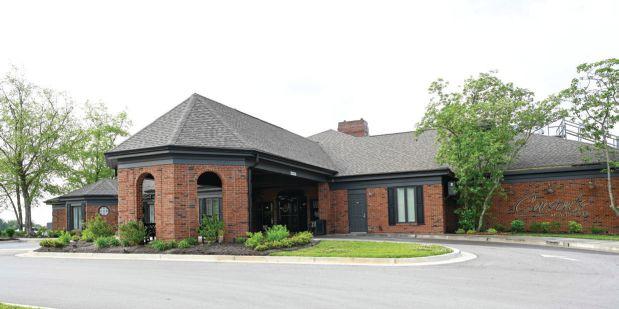
ne of Lexington’s most popular culinary hotspots has taken its winning concept to a second location — and business is bustling. Carson’s Food & Drink has grown its presence from the original downtown location, Carson’s on Main, adding a new, larger location: Carson’s at Andover.
Te second Carson’s opened in June 2024 in the former Andover Country Club’s main clubhouse on Todds Road on Lexington’s east side. As with the original location, Carson’s at Andover delivers “old Kentucky elegance” through its décor and a warm and welcoming mood. Te food, all made in-house, ofers something for every palate, and the attentive and knowledgeable staf provide consistently friendly and efcient service.
It’s not surprising that plenty of regulars can already be found dining at Andover on any given day.
“Tis is a great neighborhood that has embraced us,” noted Jayme Jackson Fichtner, president and co-owner of Carson’s Food & Drink. A native of Ashland, Kentucky, Jayme is one half of the husband-and-wife duo that makes up the Lexington restaurant scene’s “power couple.” While working as vice president of community relations at T.O.P. Marketing Group — publisher of TOPS magazine — she met her future husband, Mark Fichtner, a TOPS client. Jayme eventually lef her position at TOPS to become president and co-owner of Palate Restaurant Group, parent company of Carson’s Food & Drink.
Te Fichtners married in September 2023 and began construction on Carson’s at Andover three months later. Te restaurants are named for Mark’s son, Carson, the company’s marketing and social media director.
A native of Southern California, Mark Fichtner has been in the restaurant business for more than half a century and clearly has an unwavering passion for food. At age 5 he informed his mother, “I want to be a chef.”
While he never actually became a chef, his frst job, at age 14, was as a dishwasher. At 16 he was a busboy at Sizzler and received free baked potatoes at the end of each shif, which helped his family make ends meet. Fichtner eventually would manage the operation of 600 restaurants in the United States and Japan as general manager, vice president, and then president of the Carlsbad, California-based Catalina Restaurant Group Inc.
He terms Carson’s Food & Drink’s collective success as “50 years in the making.”
Te Toroughbred business brought Fichtner to Kentucky in 2007 as his former father-in-law owned Sierra Farm. In Lexington he worked for Bluegrass Hospitality Group for 18 months and then for Tavern Restaurant Group for fve years.
“Lexington is a great food city, and food is a thread in the South that connects people. We are creating memories for people. Wedding rehearsals, happy hour, a lunch, afernoon, or evening,” said Fichtner. “Carson’s is a cake. It has multiple layers and that recipe never changes.”
Fichtner’s original goal was for the business to make $3millionto$4millioninsalesannually.Lastyear,itsurpassed $9 million. Like the original location, the Andover restaurant made a proft in its frst month of operation. Carson’s

Carson’s at Andover boasts an extensive bourbon and whiskey selection and offers specialty cocktails such as the Carson’s old fashioned, above.
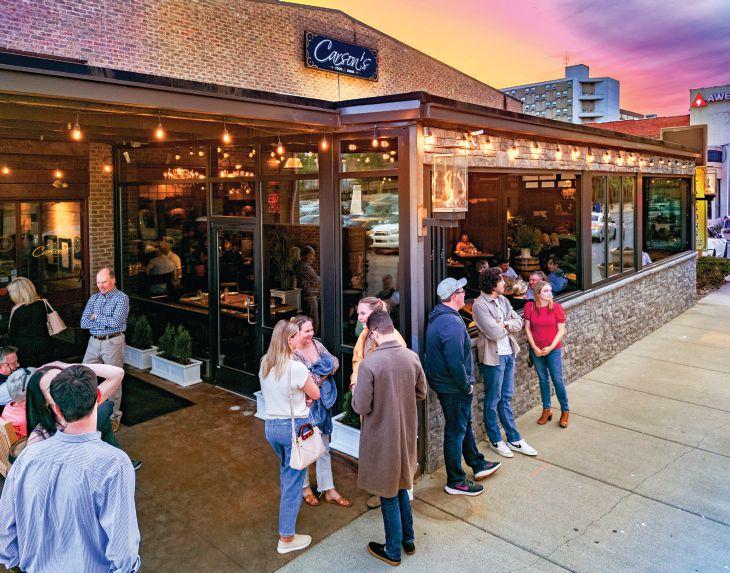
on Main serves an average of 15,000 customers per month. Carson’s at Andover serves an additional 12,000 customers per month.
“Te food and drinks have got to be good. You have to stay relevant,” Fichtner pointed out.“Yourbiggestcompetitorisinthemirror.
A restaurant is like a box. If you stay inside the box, you don’t grow. We’ll never be a Michelin-starred restaurant, but we’ll certainly be a star.”
Te Michelin Guide does not currently rate restaurants in Kentucky. However, Carson’s is perennially on national “best of” lists as well as earning a Lexington Herald Leader “Readers Choice Award” eight years in a row.
Jayme ofered insight into the driving force behind Carson’s continued success. “Mark is a perfectionist. He sees things in a diferent dimension in hospitality. We are two extreme ‘type A/OCD’ people. He is the yin to my yang. I stretch him and he contains me.”
Carson’s recent expansion was part of Mark Fichtner’s divine strategy.
“I wanted to grow Carson’s,” he said. “I looked around for four years before opening the location at Andover. Te plan was to open [a second location] in three years. It took eight.”
Carson’s at Andover features a $1 million kitchen, with a second separate kitchen for the large on-site event space, Te Hudson, and arguably ofers Lexington’s most scenic view while dining. Te inviting bar and large enclosed patio overlook the expansive greenspace of the former country club golf course.





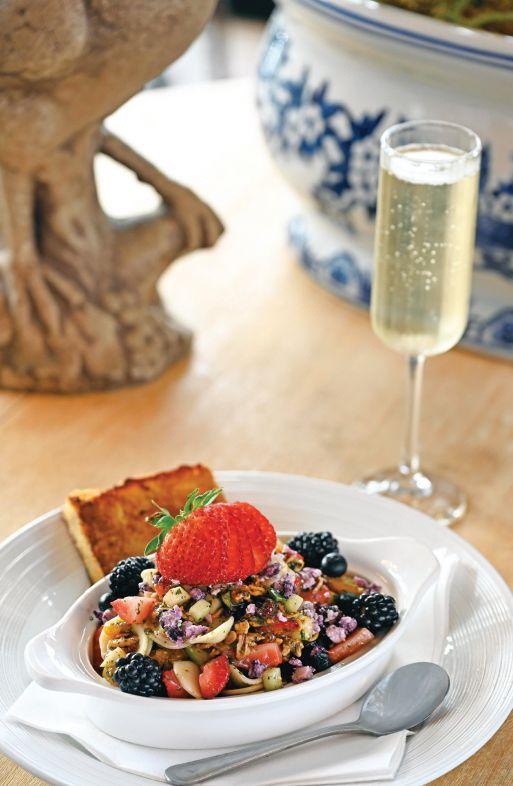

From top left, Carson’s extensive menu includes such favorites as sweet chicken and waffes, grilled brie, barrel cut flet mignon, banana bourbon bread pudding, peanut butter pie, Creole chicken and shrimp, Jayme’s pasta and fruit salad, and warm bacon salad with shrimp (center).
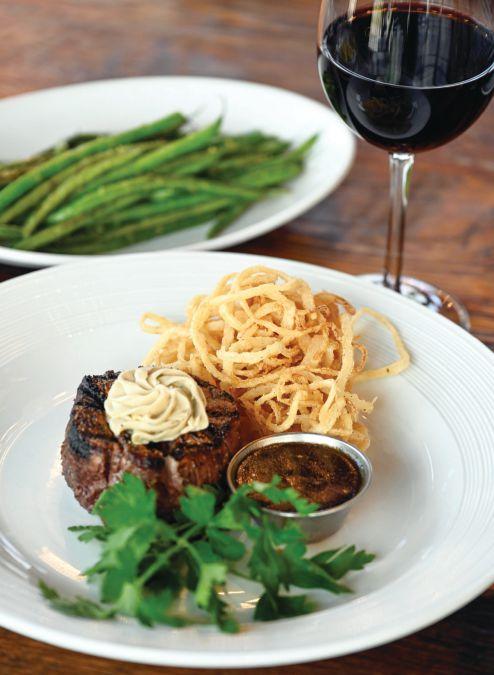


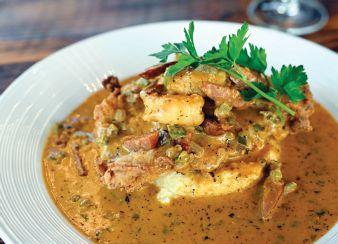






However, stellar food is what brings them through the door day afer day, night afer night, and there is certainly a lot to like on the menu featuring Kentucky Proud products. Fichtner has painstakingly perfected Carson’s menu and noteworthy recipes, and he reevaluates the overall ofering quarterly. Te options span crowd-pleasers such as the sweet and spicy ribs (the top seller), shaved prime rib sandwich, classic cut steaks, Carson’s fried chicken, pork belly beer cheese burger, chicken and wafes (a brunch favorite), hot brown, creole shrimp and grits, warm bacon salad, and so much more.
Diners will also fnd an extensive bourbon selection, an array of craf cocktails, Bellinis, bloody marys, and mocktails. Tere is seemingly something for all tastes.
On a personal note, a special family keepsake is hidden at each of Carson’s two locations. Fichtner’s grandfather’s Bible is buried beneath the front door at Carson’s on Main while Jayme’s Bible is buried within a wall at Carson’s at Andover.
Fresh on the heels of opening Carson’s at Andover, the Fichtners are not slowing down. In June, they announced that Carson’s Back Porch, a new twist on the original Carson’s concept with a full bar and 120 seats, will be taking over the Gus’s World Famous Fried Chicken location in the rear of Carson’s on Main at 321 East Vine.
Te new spot, with an anticipated opening date of April 2026, will reportedly have a “Savannah feel” with a laid-back vibe and an inviting Southern charm. Mark Fichtner is responsible for the new concept’s menu and layout, as he was with the other Carson’s

At least one of Carson’s guests liked the Andover location a bit too much. This past February, a diner apparently carved a large swatch out of theVersace wallpaper in the women’s restroom.
In response, Jayme Jackson Fichtner took to social media in what quickly became a viral post:
“Heartfelt thank you to the lovely lady who cut a square out of the Carson’s Food & Drink bathroom wallpaper. We hope you enjoy it as much as our guests did. But … when life hands you lemons, make a drink. Starting tomorrow at each location we will offer the ‘Holy Versace’ cocktail (in honor of our Versace wallpaper). $1 from every cocktail will be donated to the Baptist Health Foundation to beneft women’s health initiatives. One question remains ladies … did she carry scissors or use a steak knife? Cheers and bless her heart.”



Carson’s at Andover 3450Todds Rd. Lexington, Kentucky
Carson’s on Main 362 E. Main St. Lexington, Kentucky
Phone: (859) 309-3039
Website: CarsonsFoodandDrink.com


Jayme Fichtner oversaw the interior design of Carson’s at Andover, and from top left, the bar, main dining room, and terrace refect the “old Kentucky elegance” she sought to create.

For those wishing to celebrate a wedding, or hold a corporate or business gathering, or other special event, Carson’s at Andover offers several unique space options at The Hudson that can accommodate groups of all sizes up to a maximum of 130 guests.
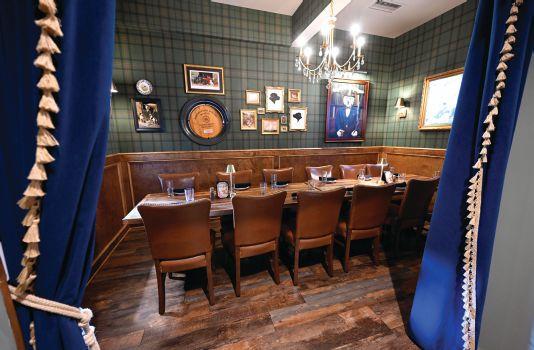

locations. Jayme handles the aesthetics and interior design. She pointed out that she likes to keep her “high heel on the gas pedal.”
Her drive and undeniable eye for interior design perfectly complement her husband’s impressive business acumen. His notable résumé also includes acting, singing, and performing in bands. Tat may be why success in the restaurant industry has seemingly come easier for the Fichtners than one might expect.
“We can never forget that we’re in the entertainment business,” Mark Fichtner noted. “You are always on stage, and overall, it seems to be working — and we are grateful.” KM
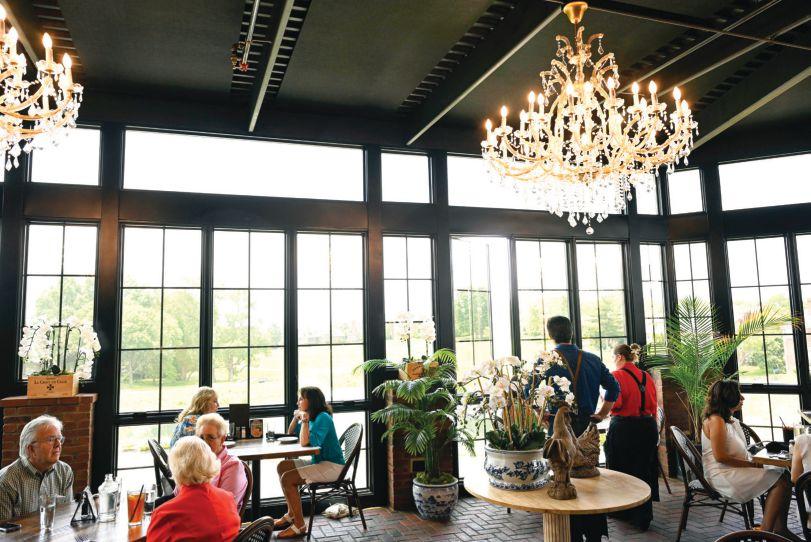

Lighted 1 mile dirt track & 7/8 mile turf course. Endless Amenities: Kraft eurocisers, Kraft acquaciser, Vitafoors, Swim ponds, Cold Saltwater Spa and more!
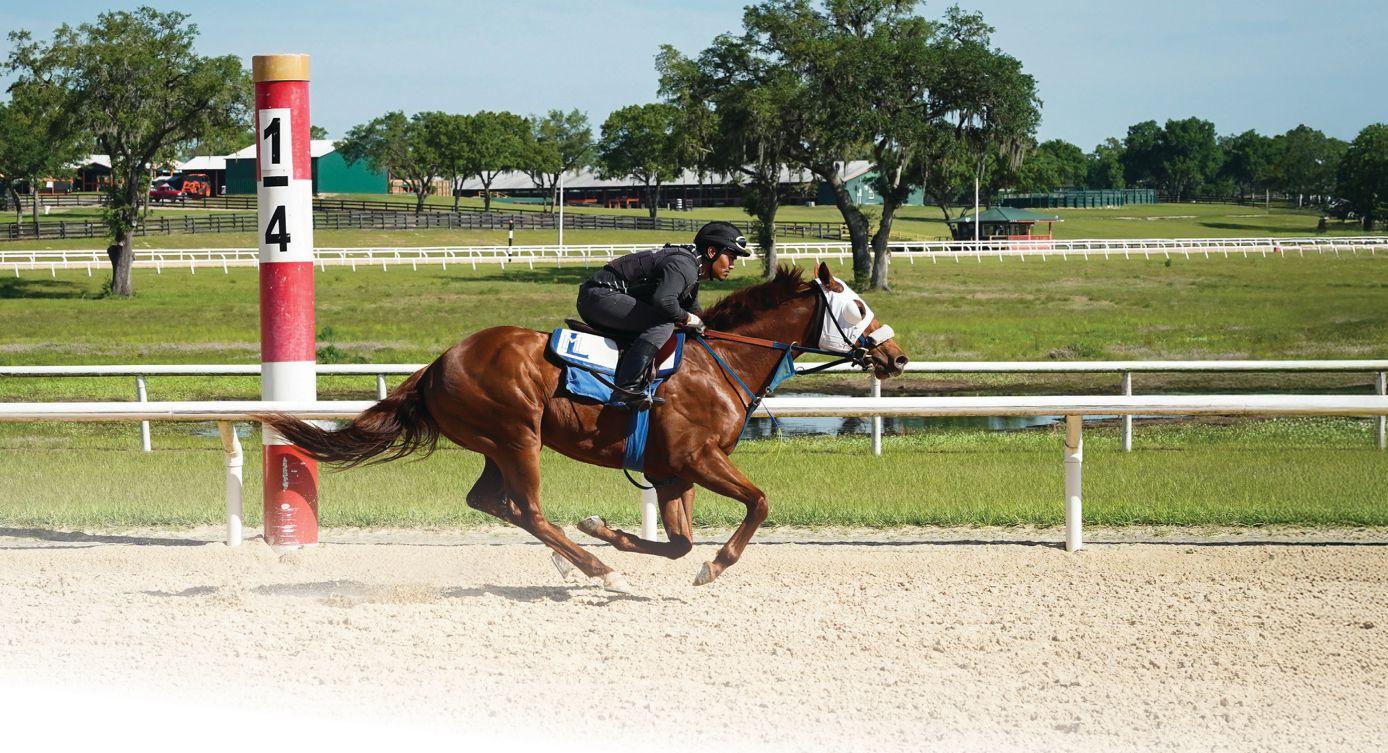



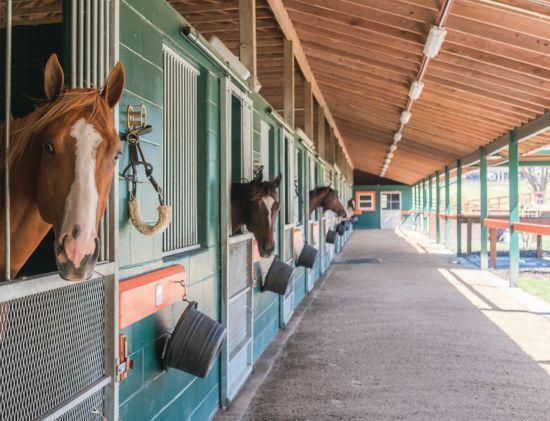






Steven Wood, who previously served as Del Mar’s facilities and track manager, has joined Oak Ridge Training Center, as Track Superintendent.





A New Social House has arrived to Lexington.

A Members Club for all of Life’s Pursuits
With day-to-night programming, dining and indulgences, co-working, and thoughtfully assembled member events & experiences.



HOPE SPAY NEUTER CLINIC OFFERS COMPASSIONATE CARE IN THE NEVER-ENDING BATTLE TO STEM OVERPOPULATION AMONG CATS AND DOGS
By William Bowden
Photos


HOPE SPAY NEUTER CLINIC
It was an emotional moment for Terri Sharrew, one that all pet owners could appreciate. She was dropping of her kittens, Butter and Pickles, at the HOPE Spay Neuter Clinic in Versailles to be spayed.
“I got teary-eyed when I turned them over and thought, ‘I don’t want to put them through this,’ ” she recalled. “But I knew it was being done for their own good.”
In a nutshell, that scenario captures the concern of responsible pet owners and the eforts of the HOPE Clinic to help solve the staggering overpopulation problem that exists in Kentucky and nationwide among both owned and unowned cats and dogs.
Te natural mating habits of cats and dogs show how their populations can quickly get out of hand. Lef unaltered, female cats typically produce an average of two to three litters every year, with four to six kittens per litter. Female dogs usually have two litters a year, with four to six puppies in each.
Last year in Kentucky alone more than 245,000 healthy but homeless cats and dogs were euthanized. Nationwide, estimates for the free-roaming cat population range as high as 87 million. Communities spend millions of dollars to deal with these unwanted animals.
Te clinic, a nonproft organization run by volunteers, has a mission to do its part to stem this overpopulation
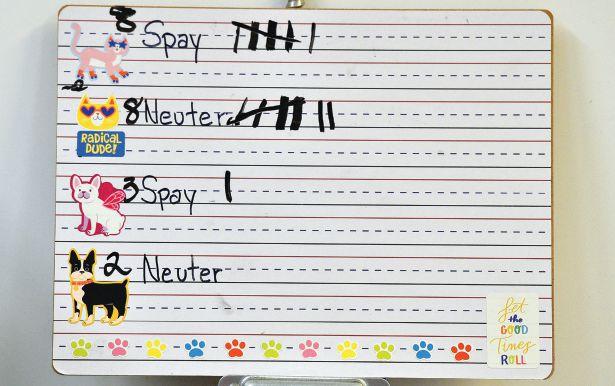
A whiteboard refects the day’s work.
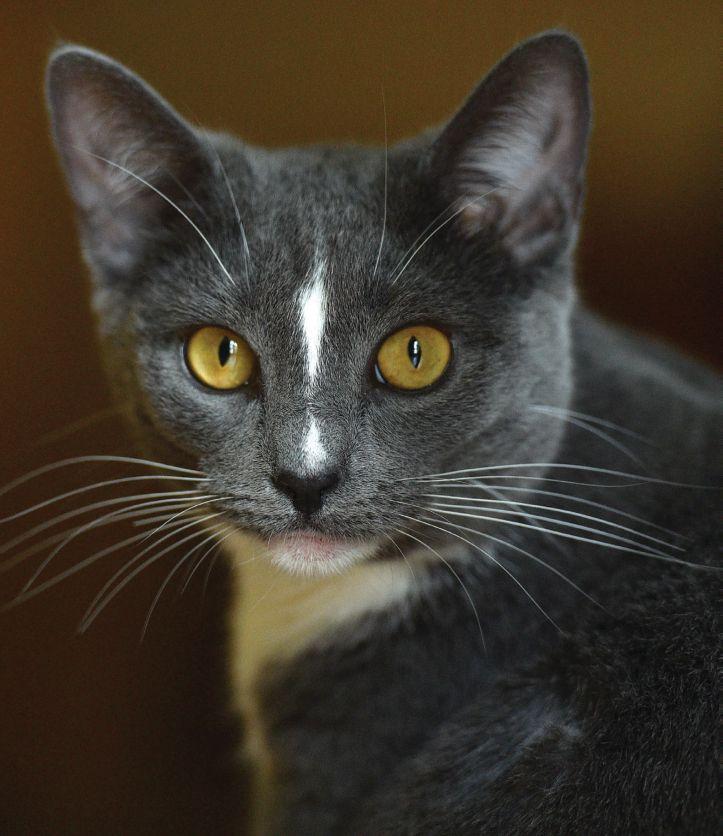
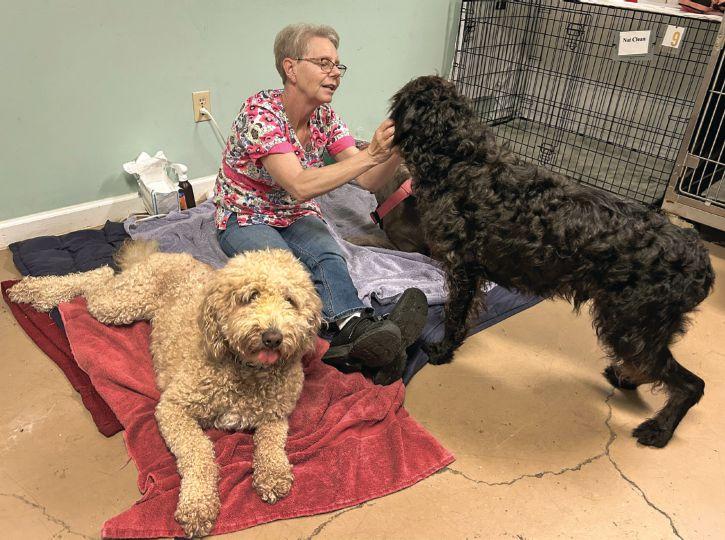




HOPE SPAY NEUTER CLINIC


and end unnecessary euthanasia. Since beginning operations in 2010, the clinic has performed more than 26,450 surgeries, approximately 80% cats and 20% dogs. Te clinic’s name is also a symbol for its tagline — Helping Over Population End.
generous donors and grants. Support from the clinic’s Oliver Rugby Fund (established in honor of the late horseman Bayne C. Welker Sr.) covers those unable to pay even those modest costs.
“We don’t ever turn somebody down
“ EVERYTHING IS BEING DONE TO HELP WITH THE OVERPOPULATION ISSUE AND KEEP THESE CATS AND DOGS HEALTHIER.”
—DR. JULIA FOX, HOPE CLINICVETERINARIAN
Te clinic sets aside certain days for its various services, including one for pet owners like Sharrew to bring in their animals for alteration, and others for treating unowned cats and dogs. Fees are nominal compared with those at commercial spay and neuter facilities, made possible by
because they don’t have the money to pay,” said John Kennedy, a former president and current member of the HOPE Clinic’s board of directors. He is a regular volunteer at the clinic, helping to check clients in and out and assisting in the cat and dog rooms.
As Kennedy’s example demonstrates,
the clinic’s board members not only provide oversight and policy guidance for their organization, they also roll up their sleeves and take part in the daily management and operations of the clinic.
Tat ethos starts at the top with board president Cindy Gilkison, who manages the daily operation. “All of the board members are active in running the clinic,” she said. “Tey are passionate about animals and fully understand the problem with overpopulation.”
Kennedy added, “We think everybody on the board is better informed because they do spend time in the clinic helping out.”
Te process for clients of the clinic now begins even before they arrive at the site, thanks to a recently installed online scheduling system. “Computerization of appointment reservations and registration is convenient for the client and is saving us about 40 hours a week,” Gilkison said.


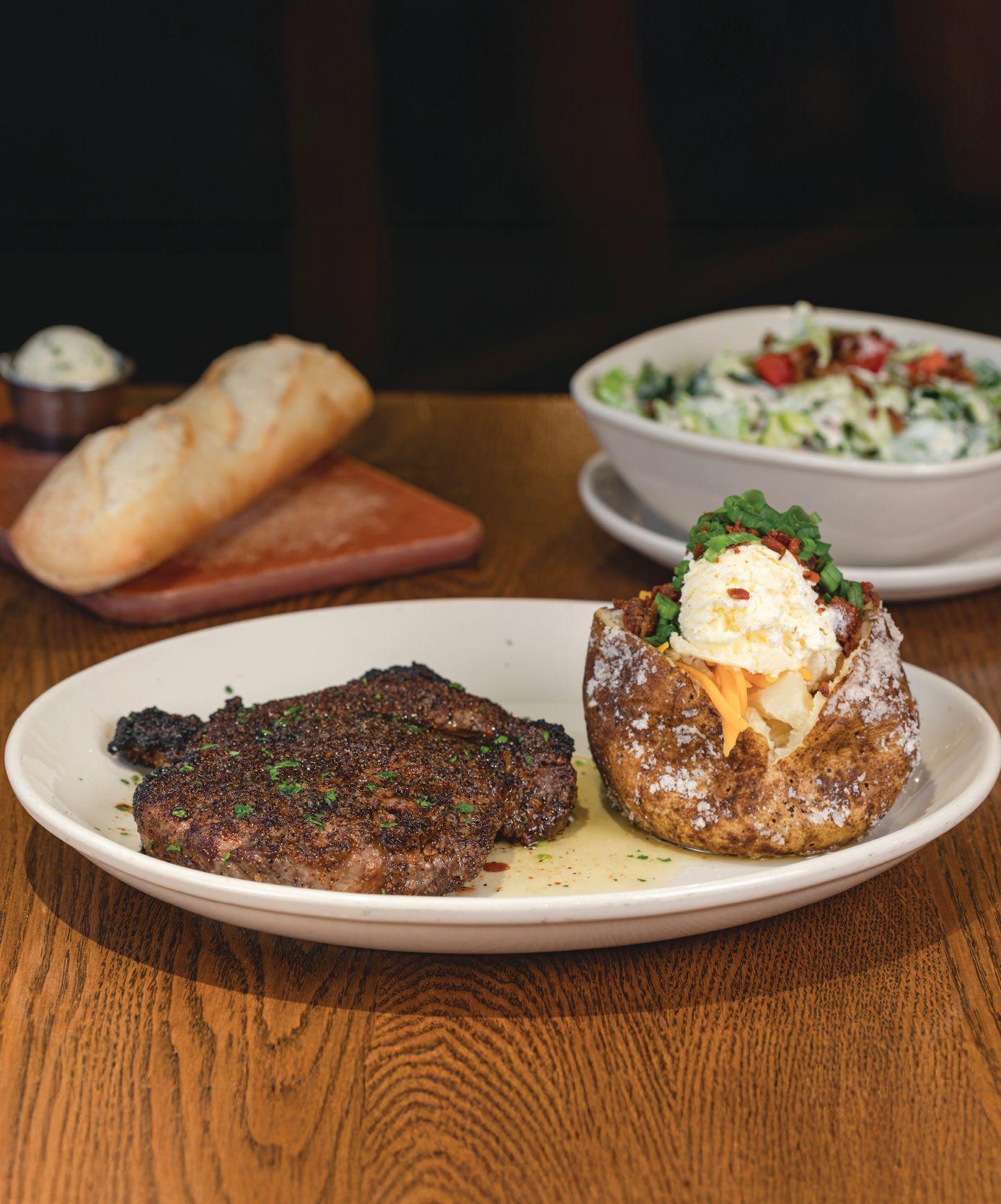
HOPE SPAY NEUTER CLINIC
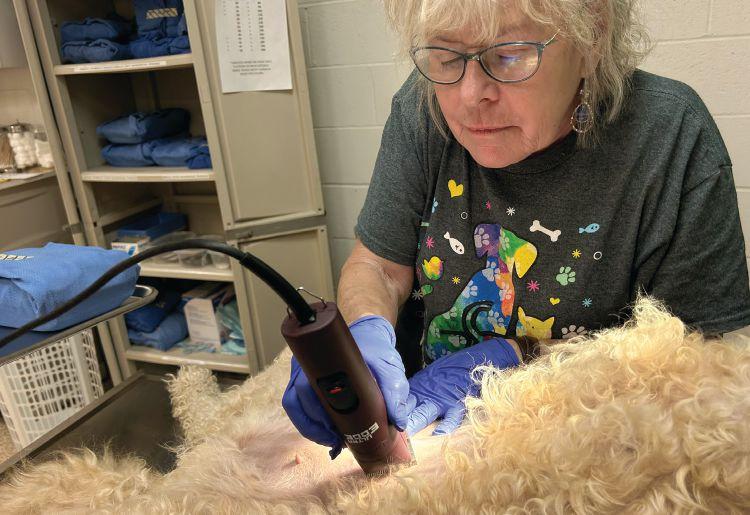

Many customers come from nearby in Central Kentucky, but the clinic’s growing reputation for professional, afordable care has attracted people from 28 Kentucky counties. “For example, we had a client bring in a dog and cat from Catlettsburg in Boyd County, a two-hour drive,” Gilkison said. Te clinic also accepts animals from neighboring states.
An important function of the clinic is to treat the large populations of unowned animals. Cats that have grown up in the wild and never been domesticated are known as “feral,” as opposed to “stray” cats who may have just wandered away from home. Te clinic relies on people who are aware of feral cat colonies living in the woods to take advantage of its trapneuter-release (TNR) program, ofered once a month.

Te clinic provides humane traps and shows people how to use them and bring the cats in for alteration. A $25 fee per cat includes the surgery, plus a rabies vaccination and other medications. After the procedure, the cats can then be returned to their home environment to live healthy, natural lives on their own, no longer contributors to the overpopulation problem.
“Tere are people who care for these cats and know they need to be fxed,” said Marie Preston, a board member who heads up the TNR program. “Many of these caregivers live in the country, where people bring cats to abandon them. Tey are good-hearted people and bring them food. Since the cats are used to being fed, a little food in the trap makes them easy to capture. I try to have 50 cats in on TNR day.”
Te clinic employs three veterinarians for its various services, along with a veterinary technician. Tey are the only paid staf at the organization.
Dr.JuliaFox,whoholdsadoctorateofveterinarymedicine from Purdue University’s School of Veterinary Medicine, has 28 years of experience in her feld. She was in the surgery






















HOPE SPAY NEUTER CLINIC


room treating cats and dogs on a recent pet owners day.
“Today, we did 15 cats and four dogs,” she said. “Our technician has knocked the animals down [administered anesthesia], then volunteers prep them and bring them to the surgery room. A cat takes me 10 to 12 minutes while a dog, depending on the size, may take up to 20 minutes. On a perfect day, I will take my surgical gloves of, put new ones on, and go back and forth between two tables.”
Fox explained that spaying and neutering are healthy for the animals and changes their behavior for the good. “Removing the reproductive
organs takes the hormones out of the situation. Females in heat will run away from home looking for a male. Tere is no health beneft from going through a heat cycle. For the males you remove the risk of testicular cancer and prostate issues.”
In the recovery room, a small linear tattoo is added to the incision area of pets to indicate the cat or dog has been spayed or neutered. With feral cats, a small portion of the ear tip is clipped to indicate the surgery.
Fox was being assisted on this particular day by Ciera Estep, a Midway College student majoring in biology and chemistry with plans to attend
veterinary school and become an equine veterinarian. Her experiences at the clinic provide her with an informal internship.
“I’ve done everything from monitoring surgery to prepping the animals and sterilizing the instruments,” she said. “I love that we’re being such a big help to the community. I feel like I’m giving something back to the HOPE.”
Te clinic has a special program in its dog treatment regimen known as “For Pitties’ Sake,” to take care of pit bulls and pit bull mixes. Te clinic recognizes that these dogs have a diferent reputation in the eyes of many but treats them with the same care as other dog breeds.
“Many of these dogs were in shelters and being euthanized,” Gilkison said. “We’ve
never turned a pit bull down for attitude, unless they had a history of biting before they came here. Tey can be the most lovable and sweet dogs.”
A visitor to the clinic cannot help but be impressed with the professional, compassionate, and loving care the cats and dogs being treated receive, from beginning to end.
“From the moment they come in they’re handled as respectfully as possible,” Fox said. “Our vet tech checks them over to be sure they’re breathing normally. We use heating blankets and padded beds to care for them. Tey’re given pain medications and other meds to go home with them.”
Added Gilkison, “Once they have
anesthesia, someone is with them all the time until they are awake and acting normally. In the recovery room, we hold them and love on them.”
Te compassionate attitude of the staf shows up throughout the day, such as when Gilkison, giving a visitor a tour of the clinic, saw a small dog — a Chiweenie named Frankie — awaiting his procedure and poking his face anxiously against the cage. She stopped to give him a reassuring pet. Tat was typical of the loving attitude the volunteers show.
Te clinic is also known for its welcoming atmosphere. When Chelsea Charles came with her son, Zaylan, to the clinic to pick up KoKo, their newly spayed puppy, she was impressed with the service they




























HOPE SPAY NEUTER CLINIC
When horse trailers deliver their precious cargo ofThoroughbreds to Keeneland, they occasionally have a stowaway aboard. Cats have been known to hitch a ride along with their equine trailer mates.
“When horses move into Keeneland during the racing and sales seasons, it’s not uncommon that a barn cat will come with them,” said Brad Pinkerton, a sergeant with Keeneland Security. “Some of them will decide to stick around and make Keeneland their permanent residence, while others climb back in the trailer to join the same horse at the next location.”
As a general rule, cats are well tolerated by the horses. And they serve an important purpose to the racetrack and horse farms by helping to keep mice out of the feed. “That’s why most farms have cats around,” Pinkerton said.
Cats have long been accepted as part of the Keeneland family, as indicated by the two kittens named Teddy andTeddy II in honor of the late James E. “Ted” Bassett III, longtime president and chairman of the board of Keeneland, who passed away in January.The cats hung out around the track kitchen and became part of the Keeneland culture.
Keeneland also takes advantage of the HOPE Spay Neuter Clinic’s services to care for its cat population. “We work in partnership with the clinic to identify cats that have already been spayed or neutered,” Pinkerton said. “Periodically, they will come out to Keeneland to gather cats that have not yet been altered. After the treatment, they return them to us.”
Keeneland has had an association with the HOPE Clinic since at least 2016.The racetrack annually donates $500 to the clinic to cover its registration fees with the Blue Grass Community Foundation so the clinic can raise funds by taking part in the foundation’s Bluegrass Gives fundraising campaign.
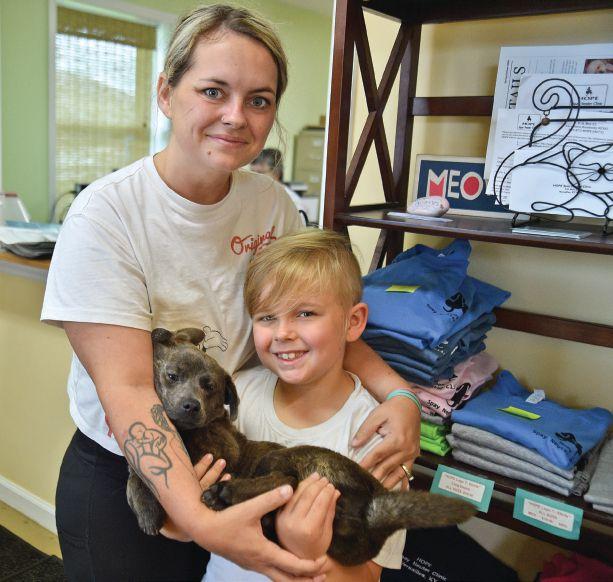
Chelsea Charles and her son, Zaylan, are happily reunited with their newly spayed puppy KoKo.
received and how they were treated.
“Everyone was so friendly,” said Charles, who had driven from Stanton in Powell County. “Afer the surgery, they gave us a neck cone so KoKo wouldn’t bite and tear up the incision, and they showed us how to use it.”
Fox, the pet-day veterinarian, summed up the mission and ethos
of the HOPE Clinic. “It’s really a wonderful organization,” she said. “Everything is being done to help with the overpopulation issue and keep these cats and dogs healthier. We are all doing it because we love animals.” KM
For more information visit www.hopespayneuter.org
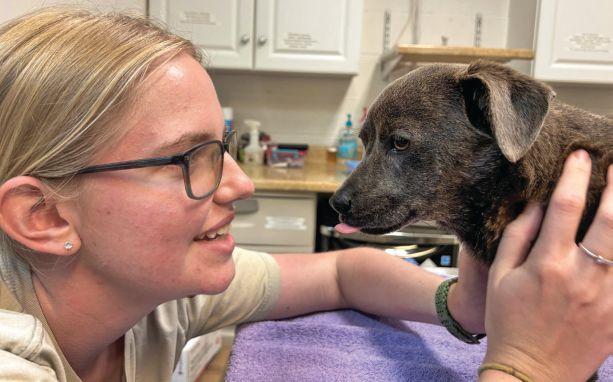
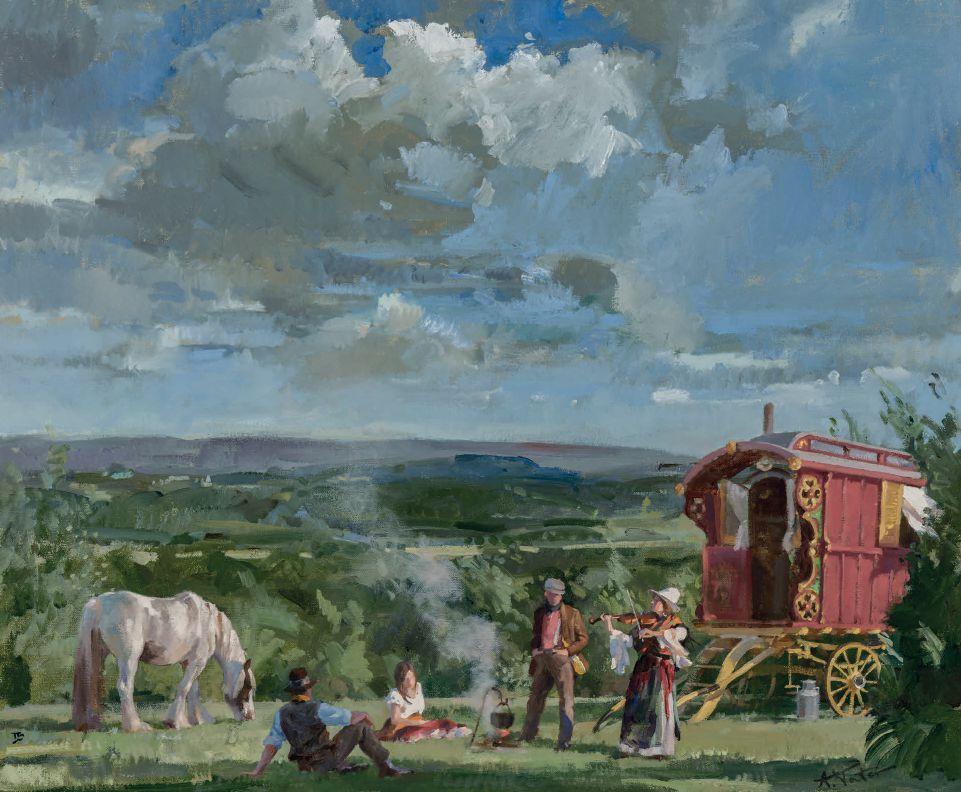
A donor advised fund at Blue Grass Community Foundation makes philanthropy easy and impactful for you and your family. Support the causes you care about and make generosity a shared experience. Call us today to learn how we can help your family’s values shine through giving together.
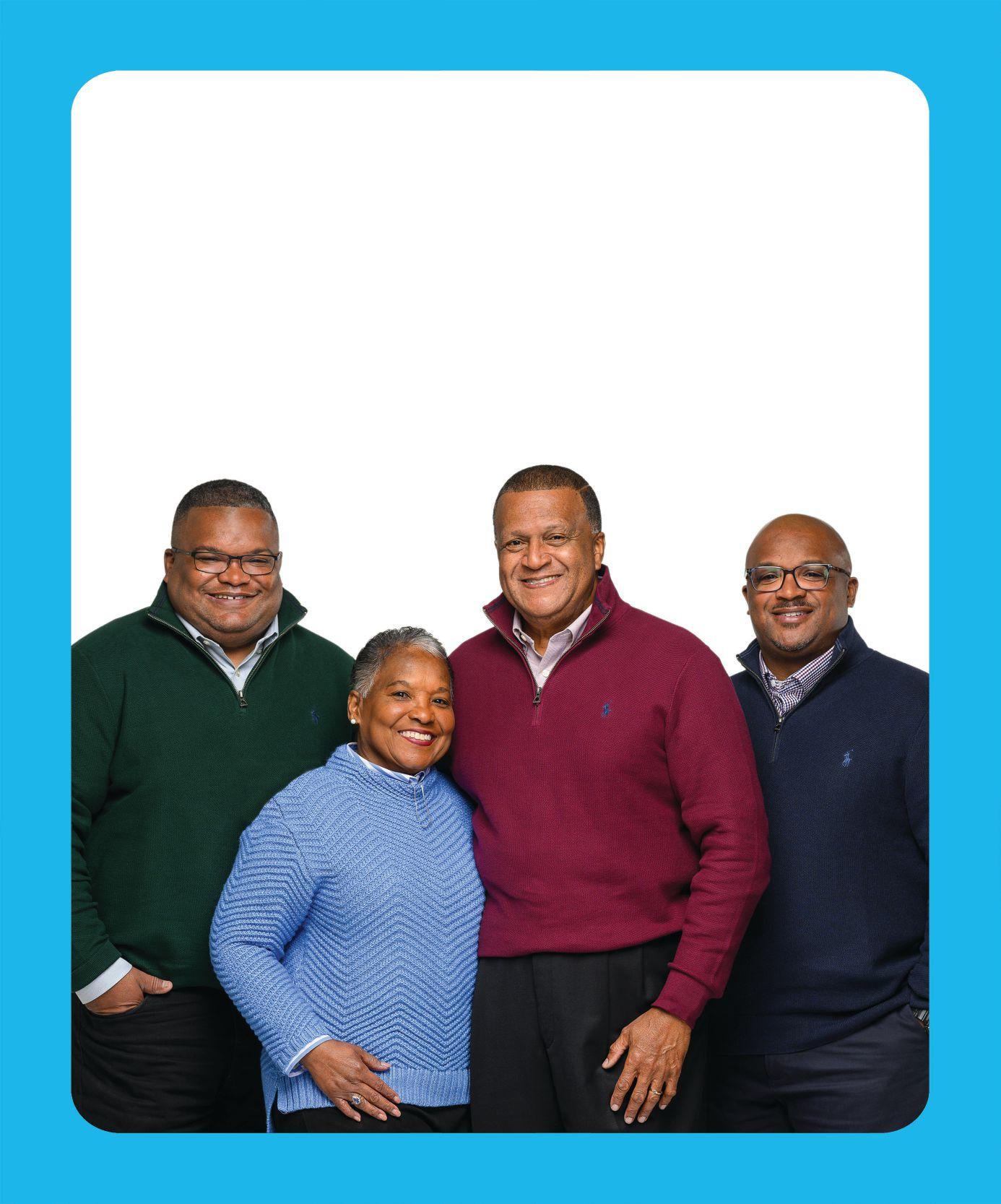
BGCF Donor
Advised Fundholders Eunice and Anthany Beatty, with sons Embry (left) and Anthany Jr.

